






By Karen Robinson-Jacobs
The St. Louis American
More than 650 miles separate St. Louis’ North County from southern Dallas County, Texas.
But in the heavily African American neighborhoods of the 30th Congressional District, which encompasses Dallas-Fort Worth neighborhoods south and west of downtown, North County native Jasmine Crockett hears echoes of her homeland.
“I see the parallels,” said Crockett, 40, referencing successive dilemmas of crime and gentrification. “One goes from inner-city north, and one goes from inner-city south.”
Cardinal Ritter College Prep students Maria Smith, Caitlyn Pointer and Brennan Buchanan checked out the history of women in hockey section on Tuesday when the NHL’s Black Hockey History Mobile Museum visited the campus. The museum also honors Black pioneers in hockey. The Blues will host a Cardinal Ritter College Prep Night during their game against the Winnipeg Jets on Mach 13.
This month, Crockett, who graduated from Mary Institute, St. Louis Country Day School and also attended Rosati-Kain, faces the toughest challenge of her still fairly young political career.
Early voting began on Valentine’s Day in what could turn into a slugfest – a crowded Democratic primary to replace the only representative the 30th has ever known, retiring Congresswoman Eddie Bernice Johnson.
Crockett and at least eight other Democratic candidates – all African American – are vying to garner at least 51% of the vote by March 2, to avoid a potentially costly runoff. In the reliably

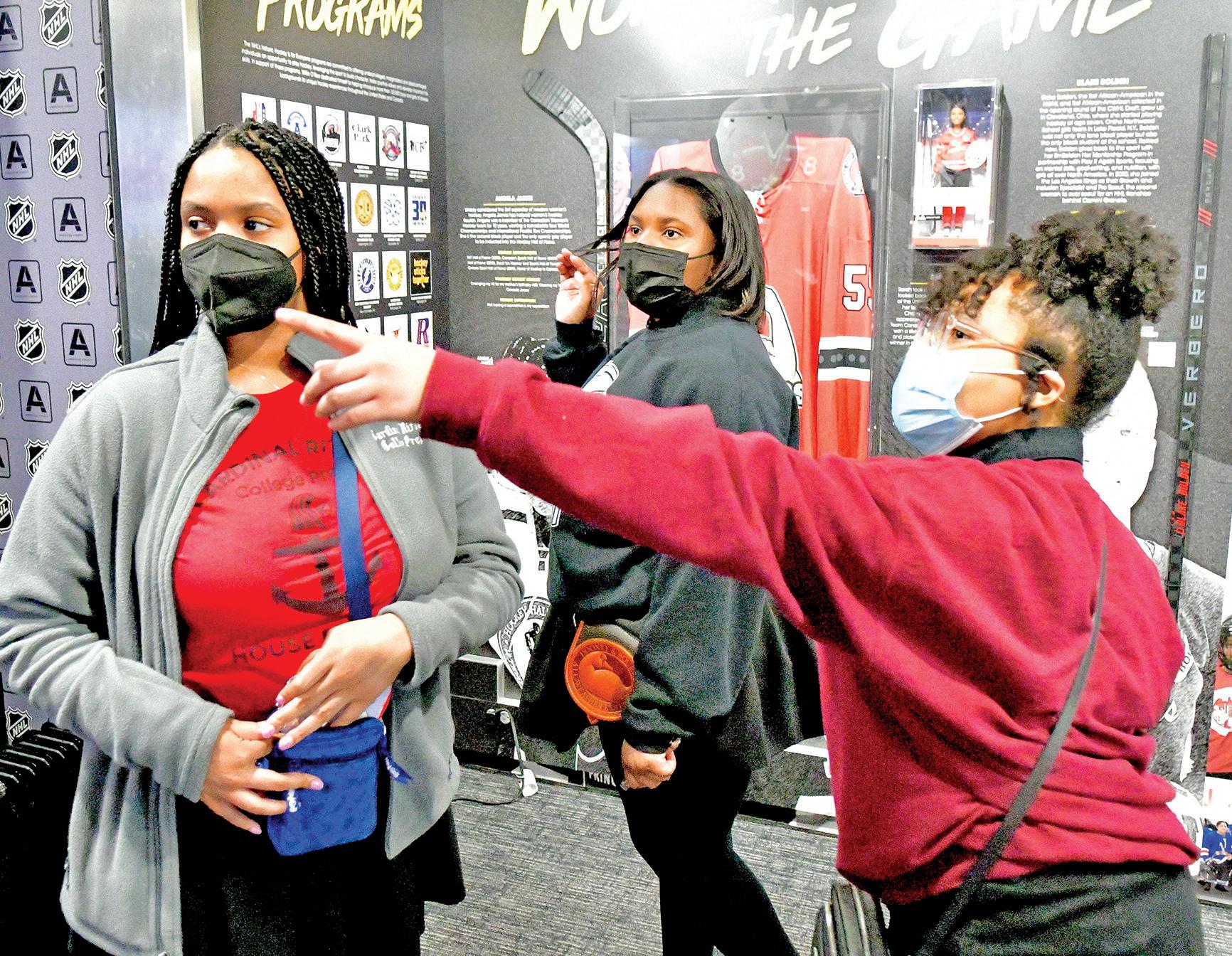
By Sarah Fenske
St. Louis Public Radio
Before emancipation, and before the Civil War resolved slavery’s questions with bloody finality, enslaved men and women turned to the courts. It wasn’t just Dred Scott. The courthouse in St. Louis saw an estimated 400 “freedom suits” in the halfcentury between the Louisiana Purchase and the Emancipation Proclamation.
n The memorial will include the names of the enslaved people who filed suits.
Two decades ago, handwritten records of that litigation were stumbled upon almost by accident, said St. Louis Circuit Judge David Mason. For Mason, who is himself the descendant of enslaved people, that discovery set off a quest for knowledge — and action.
“That really took my interest,” he explained on Tuesday’s St. Louis on the Air, and led him to a realization: “We have to memorialize this. We have to pay attention to this.”
Now, thanks to Mason, those lawsuits are being commemorated with a memorial at St. Louis Circuit Court. In the past two years, a committee of lawyers has been raising funds through the St. Louis Bar Foundation. It’s commissioned a new work by Preston Jackson, a sculptor based in Peoria, Illinois. His memorial is expected to debut this June, part of a $1 million project just east of the Civil Courts Building at Market and 11th streets in downtown St. Louis. Paul Venker, senior counsel with Baker Sterchi Cowden & Rice, is chairman of the Freedom Suits Memorial Steering Committee. He said the committee has raised approximately $620,000 in the past two years and hopes for another $200,000 by the sculpture’s unveiling.
He said he is looking forward to people seeing Jackson’s work,
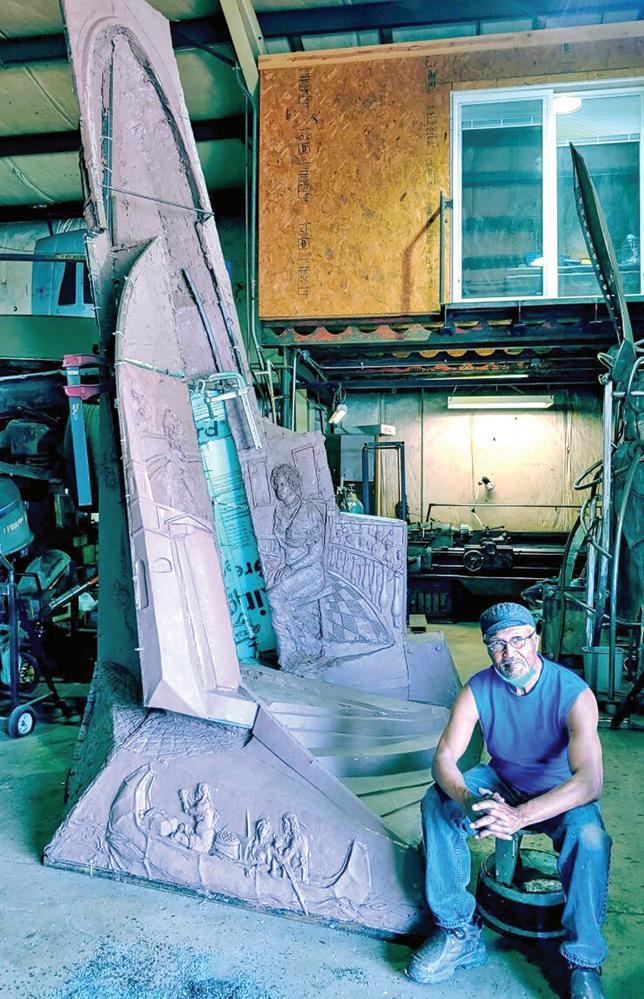
Preston Jackson shows off his sculpture in progress, which will anchor the Freedom Suits Memorial Plaza in downtown St. Louis.
target HBCUs, online events
By Alvin A. Reid
The St. Louis American
Black History Month has seen a barrage of Historically Black Colleges and Universities (HBCU) face bomb threats and online racist hacking attacks disturbing events centering on Black culture and history. The Missouri Black Legislative Caucus released a statement Tuesday condemning racist incidents against Black students on various college campuses in the state.

“Since the beginning of the month, we have seen several racist incidents against Black students across the state of Missouri. On February 1, Harris-Stowe State University was one of several (HBCUs) across the country targeted with bomb threats,” Caucus Chair Ashley Bland Manlove, D-Kansas City, said in a statement.
n Three separate law enforcement agencies have opened investigations into the virtual attack, including the FBI.
“On February 8, a virtual panel on Blackowned businesses hosted by Rockhurst University was hacked and invaded by people yelling racial slurs and obscenities and displaying child porn. The MLBC fully condemns these racist incidents against Black Missouri students who have become the target of hatemongers and bigots during Black History Month. “We must rise above those who would attack our community and culture amidst a month of celebration and reflection, and work to end the enduring discrimination Black students across the state continue to face.”
More than 500 people, including Rockhurst students, faculty, and community members, rallied the day after the hack. Thomas B. Curran, Rockhurst University president, said in a letter to students. “There is no place in our society, in our community, or on our Rockhurst University campus for

Whoopi Goldberg returns to The View
Whoopi Goldberg returned as “The View” co-host following a two-week suspension after her controversial comments about the Holocaust.
“I missed you all too. I got to tell you, there’s something kind of marvelous about being on a show like this because we are The View and this is what we do,” Goldberg said during the episode. “Sometimes we don’t do this as eloquently as we could.”
She was placed on work leave after she said the Holocaust wasn’t about race on an episode that aired on Jan. 31.
everybody who reached out while I was away. People reached out from places that made me go, ‘Wait, what, what, really?’ And it was amazing.”
The city of Inglewood presents Issa Rae with its first key in the city’s 114-year history
Issa Rae always represents her hometown Inglewood, California. She made the city’s presence and history the focal point of her “Insecure,” series. Now the native has the first-every key to Inglewood in the city’s 114 years of incorporation.
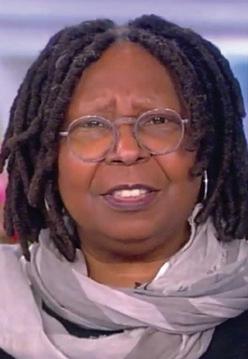
The episode showed Goldberg and her co-hosts talking about a Tennessee school board’s decision to ban Maus, a book detailing Art Spiegelman’s Polish Jewish parents’ experience with the Holocaust.
The school expressed concern about female nudity, profanity and removed the book from its curriculum.
Goldbergh apologized in a statement on the show on Feb. 1.
“It’s five minutes to get in important information about topics and that’s what we try to do every day,” Goldberg said. “I want to thank
Mayor James T. Butt presented Rae with the key over the weekend at the Taste of Inglewood festival.
“I’m a little emotional, I’m trying to be a thug right now,” Rae said in her speech. “The mayor really flabbergasted me in that this is the first key in 114 years. It’s a huge honor and I just want to thank you all so much for your support.
Thank you to the mayor, thank you to the city of Inglewood for making it so easy for us to film here, for helping us to showcase this city that I love so much.”
The Dayton Daily News reports Dave Chappelle helped block plans for an affordable housing development in his hometown Yellow Springs, Ohio.
While at a recent council meeting, he threatened to remove several businesses he’s developing in Yellow Springs, if the town proceeded with the affordable housing development. Chappelle’s company, Iron Table Holdings LLC, is establishing a restaurant, Firehouse Eatery, and a comedy club, Live From YS.
Dayton Daily News, also reported Yellow Springs was collaborating with Oberer Homes to build single-family homes, duplexes, and townhomes with 1.75 acres, set aside for affordable housing.
Chappelle and other residents joined in speaking against the plan. The council canceled the affordable housing part of the plan and consented to create 143 single-family homes priced at almost $300,000.

A spokesperson for Chappelle said in a statement: “Without question, Dave Chappelle cares about Yellow Springs, He’s sewn into the fabric of the Village. The passion with which he delivered his comments during the Village Council meeting was just as evident as when he fought to create living-wage jobs with his famed ‘Summer Camp’ for residents during the height of the COVID pandemic. Neither Dave nor his neighbors are against affordable housing, however, they are against the poorly vetted, cookiecutter, sprawl-style development
deal which has little regard for the community, culture, and infrastructure of the Village.”
ODB’s widow seeking payment for late rapper’s unpaid royalties
Icelene Jones, widow of the late rapper Ol’ Dirty Bastard and administrator of his estate, has filed a lawsuit against Wu-Tang Productions claiming his estate is owed at least $1 million in unpaid royalties.
The lawsuit, filed in New York Supreme Court, is directed toward a 1992 recording contract stating ODB is entitled to 50% of net royalties from the usage of his image or likeness.
According to the suit, “despite its repeated efforts and requests, the estate has been unsuccessful with obtaining payments and accountings from the defendant subject to the recording agreement for the sale of Wu-Tang Clan Recordings and ODB recordings since about 2011.”
RZA, Wu-Tang Productions founder and ODB’s cousin, told Page Six the lawsuit is “unfortunate.”
“We have been very supportive in providing economically to the family through the estate and to his wife and children on record and off record,” RZA said. “ODB’s potential share of those records are minimal, are dismal, but nevertheless after those products are recouped his prorated portion belongs to him.”
ODB died in 2004 from an accidental overdose.
Sources: people.com, www.vibe.com, variety.com, bet.com

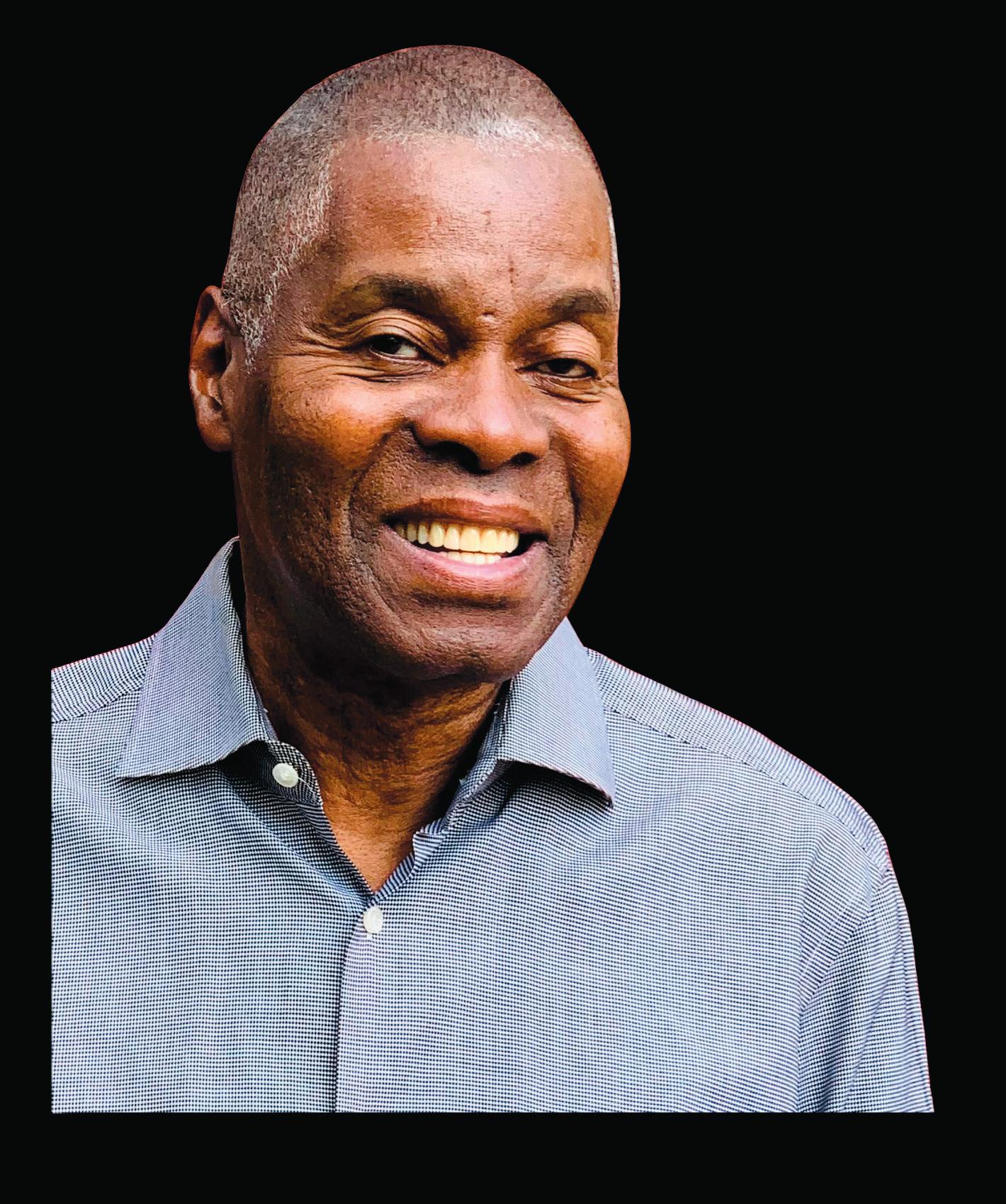

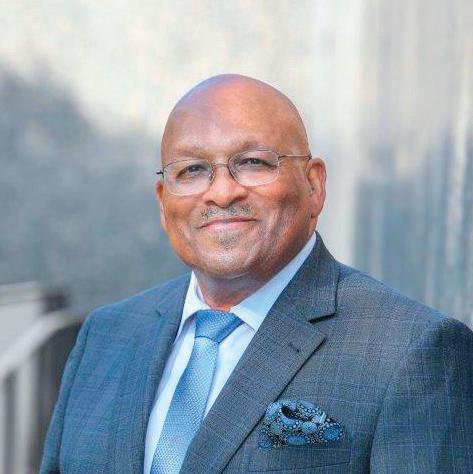




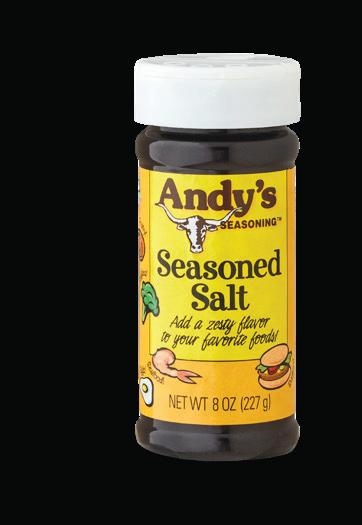

St. Louis American staff
After a two-year COVID-19 caused hiatus, The Regional Arts Commission of St. Louis (RAC) is accepting applications for Gyo Obata Fellowships in 2022.
With its goal of creating a more diverse, inclusive, and equitable local nonprofit arts and culture sector, the job training program seeks undergraduate students planning to pursue careers in arts management.
With major funding from the Gateway Foundation, the program is named in honor of Gyo Obata, architect and co-founder of HOK, a St. Louis-based global design, architecture and engineering firm.
The fellowships create firsthand business educational and training opportunities for students in local nonprofit arts organizations.
“I had a really great experience,” said Lillian Gardner, a 2019 Gyo Obata Fellow who worked at the National Blues Hall of Fame. “I felt challenged and respected. The people I worked with were very welcoming and inclusive.”
Gardner said she gained mar-
keting and programming experience while creating educational content and marketing materials and conducting research. The 2020 Webster University graduate is using those skills as she creates her own not-for-profit that helps underserved populations in the art field.
“The organization will be dedicated to connecting area youth to various art opportunities around the St. Louis area [and] provide them a space to create and establish connections through mentorships. I always say I want to be the role model I wish I had when I was younger.”
If she wasn’t busy enough, Gardner is also penning her first novel.
Vanessa Cooksey, RAC president and CEO, calls the inaugural class in 2019, “a great success.” As applications were being accepted for 2020, the pandemic swept St. Louis and the nation. The decision was made to put the program on hold.
“It was an extremely tough decision. We had to keep the safety of our program attendees at the forefront,” she said.
“This program was designed
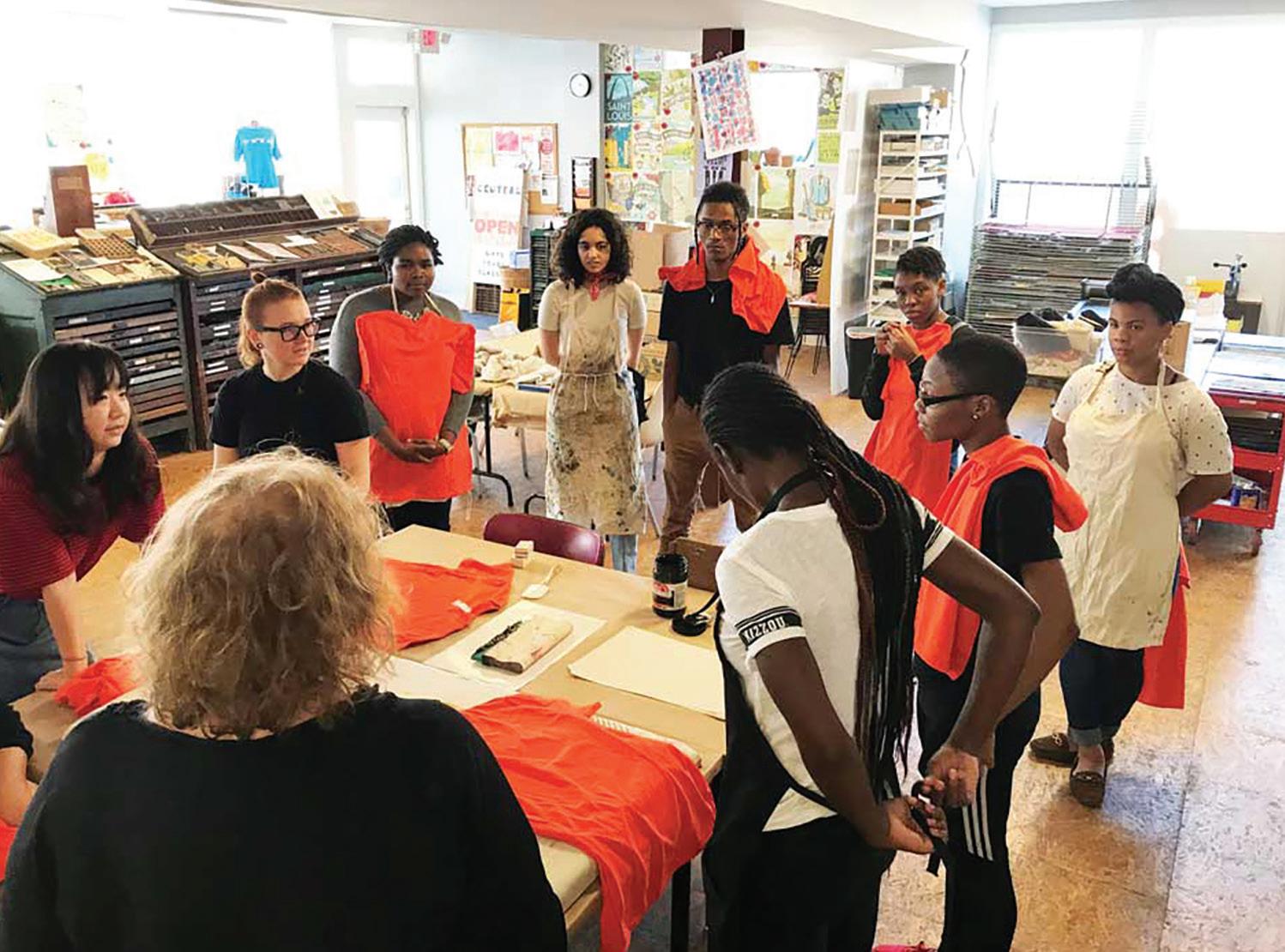
n With major funding from the Gateway Foundation, the program is named in honor of Gyo Obata, architect and co-founder of HOK, a St. Louis-based global design, architecture and engineering firm.
for students traditionally underrepresented in the arts. It is an amazing opportunity for college students working towards careers in arts administration with a hands-on introduction to arts nonprofits in St. Louis city and county.” Applications are being accepted online until March 18, 2022. To be eligible for the program, students must meet the following qualifications: Currently enrolled in any
bachelor’s degree-seeking program of an accredited college or university in the greater St. Louis area.
Students who are enrolled in an accredited college or university outside of the St. Louis area
may apply but must reside in St. Louis County or city.
Entering their third or fourth year of undergraduate studies, have at least 60 credit hours from an accredited college or university, or have graduated within a year of the program start date.
Must also be able to legally work within the United States. The 10-week paid summer fellowship program will accept at least 10 college students working towards careers in arts administration locally, according to the RAC website. For more information about the program and to apply, please visit https://racstl.org/programs/ gyo-obata-fellowship/.

The people of Missouri spoke in August 2020 when it came to Medicaid expansion. The state Supreme Court ruled in 2021 Medicaid expansion is the law of this land. Many GOP legislators refuse to listen. Actually, they are listening to those who were on the losing side of the ballot initiative. It is like the vote never occurred.
Rep. Cody Smith, R-Carthage, is the latest GOP hack to lead a charge against voters’ will, solid health policy, economic enhancement, and common sense. His proposed constitutional amendment would give lawmakers legal authority to determine the amount and recipients of Medicaid funding.
It would also require Medicaid recipients to work at least 80 hours a month. Smith has tuned out the Biden administration’s repeated statements saying it would not approve any work requirement with Medicaid. The federal government holds this power, regardless of what misguided legislators do in Missouri.
A GOP dominated committee passed the bill on to the full House. It could easily pass, and head to the Senate. If it clears that hurdle, there would be another vote of the people in November 2022 which could effectively leave Medicaid expansion unfunded. There would be another round of lawsuits and the state Supreme Court would most likely rule the GOP’s latest foolish actions unconstitutional.
Medicaid expansion is good for the state of Missouri. But doing things right for most Missourians does not sit well with many GOP elected officials’ constituents. Shortsighted is too generous a term for Smith and his crew.
“House Joint Resolution 117 would not only undermine the will of Missouri voters, but it would stamp out the economic growth that expansion will deliver when fully implemented,” Amy Blouin, Missouri Budget Project president and CEO said in a statement after Smith’s ridiculous proposal moved to the full House.
“State after state has shown that expansion spurs economic activity, creating stable, quality jobs, as well as additional tax revenue that funds the state’s share of expan-
sion, as well as other services like education. What’s more, other states have demonstrated that states save money on health services they already provide, and Missouri will too.”
Newspapers throughout Missouri that lean to the right are also taking Republican legislators to task.
“The Legislature needs to focus on implementing [Medicaid,] not undercutting it,” states a Joplin Globe editorial on Feb. 15.
“The opposition purports to be based on cost concerns, but the bulk of the cost of the new coverage will be covered by federal funds. Expanded coverage can reduce the cost of needed health care as it moves people who had no coverage out of emergency rooms and into the care of family physicians.
The expansion also makes Missouri eligible for $1.1 billion through the American Rescue Plan Act.”
Rep. Betsy Fogle, D-Springfield, said on the House floor “I’m very disappointed that we’re back up here in 2022, having the same conversation about who in the state of Missouri should get Medicaid and who shouldn’t. This has already been decided.”
Ironically, the House last week passed the supplemental budget that fully funds Medicaid for the rest of the fiscal year.
“Medicaid expansion is a pro-growth public policy that supports better health outcomes, creates jobs, and promotes racial equity. We now call on the Missouri Senate to follow the House’s lead in passing HB 3014 with full Medicaid funding so more Missourians can access health care and the state can reap the economic benefits of expansion,” Greater St. Louis Inc. CEO Jason Hall said in a statement after the budget passed.
Hall’s organization was instrumental in helping Medicaid expansion prevail at the ballot box, and it assisted with legal efforts to protect that victory. Its resources will likely be needed again.
There is no sound reason for Smith and fellow Republicans to challenge Medicaid expansion yet again – other than their selfserving interests. It has come to be expected, but it is still shameful and short-sighted.
By Ben Jealous
The Republican National Committee (RNC) is officially letting Americans know that it is more committed to former President Donald Trump than to democracy, the rule of law, and the truth. Some people might say Republicans have been letting us know that ever since Donald Trump became the party’s standard-bearer in 2016. And there’s some truth to that. Even so, the party reached a new low on Feb. 4. The RNC accused the congressional committee investigating the deadly attack on the U.S. Capitol of “persecution of ordinary citizens engaged in legitimate political discourse.” It called the investigation an effort to “destroy President Trump.” And it formally censured the two Republican members of the committee, Reps. Liz Cheney and Adam Kinzinger, cutting them off from any future support from the party. This is disgusting. It is also dangerous.
Keep in mind that the insurrection was meant to stop Congress from confirming the results of the presidential election as they are required to do by the U.S. Constitution. Keep in mind that members of Congress were targets. They could easily have been among the dead if U.S. Capitol Police had not kept violent attackers from reaching them.
And keep in mind that congressional Republicans had an opportunity to create and participate in a bipartisan com-
mission to investigate what happened. But Republican leaders didn’t want an investigation that might reveal embarrassing truths about Trump, his allies, and some of their Republican colleagues. Senate Republican leader Mitch McConnell may have criticized the recent RNC resolution, but that doesn’t change the fact that he blocked the creation of a bipartisan commission to get at the truth.

Fortunately, House Speaker Nancy Pelosi then moved to create a special House committee to investigate the insurrection. We should all be grateful for her leadership. We should all be grateful for the investigative work being carried out by the committee.
And we should all be grateful to Reps. Cheney and Kinzinger. No matter how strongly we may disagree with their conservative positions, they have modeled an important principle: Some things are more important than partisan politics—like democracy and the rule of law.
While the RNC resolution is disturbing, it’s not exactly surprising. Republican officials have desperately tried to deflect attention from the assault on our democracy by Trump, his
lawyers, and his followers.
Republican officials have actively tried to disrupt efforts to learn the truth. And they have resorted to lawbreaking—refusing to respond to congressional subpoenas—to resist any effort to hold Trump and his henchmen accountable.
The latest RNC resolution is a sad indication of Trump’s grip on the GOP. It demonstrates how few elected officials are willing to stand up to Trump and his supporters, even when they are promoting harmful lies and conspiracy theories. One Republican member of Congress went so far as to defend the RNC’s resolution by equating the attack on the capital with racial justice protests that took place after the killing of George Floyd in 2020. Meanwhile, Trump is talking about pardoning the insurrectionists if he gets reelected. And right-wing Republicans are telling us what they’ll do if they get congressional majorities in this year’s elections. Not only will they stop the investigation of Jan. 6. They will instead use their power to promote conspiracy theories about the elections and the COVID-19 pandemic and target their political opponents.
It’s an election year. We have been warned.
Ben Jealous serves as president of People For the American Way and Professor of the Practice in the Africana Studies Department at the University of Pennsylvania where he teaches leadership.
By Wesley Bell
With the influx of guns and stand your ground laws, it is increasingly difficult to prosecute cases involving guns in Missouri. Recently a man was killed on his property over grass clippings. According to witnesses, he pulled a gun first and subsequently was killed by one of the individuals allegedly involved in the dispute. Many, including myself, asked why these other individuals were armed on the deceased’s property? But, in fact, it is not uncommon because a growing number of people are armed at any given time – and Missouri legislators want it that way.
Based on current laws, Missourians have a right to defend themselves with deadly force if they just feel they are threatened. Prior to this change, if they could reasonably or safely leave, they were required to do so. This is no longer the case. In a situation where you can safely remove yourself if you feel threatened, you can now legally use deadly force. As a result, prosecutors are unable to prosecute many cases that previously would have been prosecutable. Some members of the Missouri Legislature want to go even farther. In 2021, the legislature passed House Bill Nos. 85 and 310, collectively known as the “Second Amendment Protection Act,” providing that several federal laws and regulations regarding gun ownership violate the Second Amendment. The law prevents local or state police agencies from enforcing federal laws deemed unconstitutional. It subjects agencies to a $50,000 fine if an officer violates the law. The city of St. Louis, St. Louis County and Jackson County, assisted by the Missouri Coalition Against Domestic and Sexual Violence, all
sued the state, arguing that the act is unconstitutional and seeking injunctive relief prohibiting its enforcement – with very good reason.
According to the Missouri Gun Violence Project, by the end of 2020 Missouri had the third highest per capita rate of gun deaths in the country. Our many regional partners agree with me that the bill makes it more difficult to prosecute gun crimes, negatively affects working relationships between anti-crime task forces and the federal government, and has a chilling effect on the police.

Finally, while federal law makes it illegal for those convicted of a crime involving domestic violence to possess and carry a gun, this act would negate this safeguard. Missouri law, inexplicably, allows those convicted of domestic violence misdemeanors to possess and carry a gun.
SB 666 goes even further. It attempts to needlessly edit the state’s Castle Doctrine to “guard against overzealous prosecutions.” It’s known as the “Make Murder Legal Act” by my Republican colleague, Stoddard County Prosecuting Attorney Russ Oliver.
Under current law, the defendant has to prove they reasonably believed physical or deadly force was necessary to protect them or a third person. The defendant must inject the issue of self-defense at trial and is subject to cross examination. SB 666 turns this burden on its head by providing that
Universal health care is awesome!
Now that COVID has put us through a test run of universal health care, isn’t it great? No matter what we look like or who we vote for, we all have access to free antibody treatments, COVID tests and vaccines. Isn’t it nice to know the person bathing our grandmother or flipping our burgers has access to the best COVID care? For too long, we’ve let a powerful few, divide and distract us, so they can make money by keeping
there shall be a presumption of reasonableness that the defendant believed such force was necessary.
It also provides that a person who uses or threatens to use force in self-defense is immune from criminal prosecution and civil action, unless such force was used against a law enforcement officer acting in the performance of their official duties and the person reasonably knew or should have known that.
Finally, the bill mandates that a law enforcement agency may use standard procedures for investigating the use or threatened use of force, but the agency may not arrest the person for using or threatening to use force unless the agency first determines that there is probable cause that the force that was used or threatened was unlawful.
The law enforcement community overwhelmingly opposes SB 666, including St. Charles County Prosecuting Attorney Tim Lohmar, Mr. Oliver of Stoddard County, the Missouri Association of Prosecuting Atttorneys, Missouri Sheriffs United, Missouri Police Chiefs Association and the Missouri NAACP. Missouri legislators seek to make guns more easily available to those committing crime, handcuff law enforcement and violent crime prosecution, and thereby endanger the lives of those trying to keep us all safe. As the prosecuting attorney for the most populous county in the state, I implore voters, courts and our more reasonable lawmakers to heed the unified voice of law enforcement that is saying: defeat these dangerous bills and start placing lives before guns.
Wesley Bell is St. Louis County Prosecuting Attorney.
(To send a Letter to the Editor to The St. Louis American, visit stlamerican.com or send your letter to editor@stlamerican.com)





East St. Louis has received a $900,000 Rebuild Distressed Communities (RDC) grant from the Illinois Department of Commerce and Economic Opportunity. Mayor Robert Eastern III said the grant will help boost economic vitality along the commercial corridor of State Street by installing security cameras and enhanced lighting.
“East St. Louis is excited to utilize the funding provided by this program to repaint the narrative of our community,” Eastern said.
“This resource will be used to expand our efforts to enhance lighting along city streets and to provide new security cameras on one of the city’s busiest and most vibrant corridors, the State Street business district.”
release.
“The administration is committed to economic development that uplifts all of us and putting our state’s small businesses and vulnerable communities at the forefront through this funding is how we expand equity and opportunity across Illinois.”

Launched last year by the State of Illinois “to help businesses and communities recover from civil unrest and economic setbacks because of the pandemic,” the RDC economic recovery program also targets grants to help small businesses. East St. Louis was among the second-round grantees for the program’s corridor improvement project.
“The Rebuild Distressed Communities program is another way for our state to recover, heal, and grow together,” said Illinois Lt. Governor Juliana Stratton in a
Gov. JB Pritzker said the program “is delivering $8.4 million in direct grants to over two dozen small businesses and multiple regional economic corridors to build on the impact of our $250 million Back to Business program with an equitable lens.”
Applications for corridor projects were reviewed and evaluated according to the extent of property damage due to civil unrest, with program priorities being projects that were in distressed communities, had geographic diversity around the state, and an investment impact that will build resiliency and revitalize the business corridor.
To qualify for funds, project proposals were required to demonstrate the project would occur within the same block that experienced property damage or on contiguous blocks if required for project continuity.
“East St. Louis shall be a model of excellence in local government: a safe place, a thriving community, which is intergenerational, that provides hope and success for all,” said Eastern.

By Shuntae Shields Ryan
This summer, the offices of St. Louis’ best businesses, nonprofits and organizations will be home to more than 100 hardworking and talented high school students. The St. Louis Internship Program (SLIP), a key part of the Boys & Girls Clubs of Greater St. Louis, creates valuable summer internships proven to increase work readiness and develop professional skills, all while building a diverse and reliable talent pipeline. Nation-wide, businesses recognize the importance of actionable social purpose and are working to become socially responsible corporate citizens. SLIP’s unique approach to expanding Diversity, Equity, and Inclusion in the workplace is a mutually beneficial partnership with business leaders who inspire these young workers by example. The powerful combination of mentoring and coaching cultivates a generation of diverse future leaders who are fully engaged in creating success for employers and advancement in our community.

With the pandemic came a labor/skills shortage that is disrupting businesses across the globe. Workers are looking for organizations that offer meaningful work and opportunities to make an impact. SLIP offers St. Louis area businesses the opportunity to advance their efforts toward corporate citizenship while benefitting from a trained, cost competitive and well-supported workforce.
SLIP empowers students to take critical steps toward meaningful careers. Key to its success is the careful selection and matching of students and employers so that both can maximize the experience. SLIP not only aims to offer students a wide range of job placements, the 30-year-old program is committed to training students to provide excellent service. To ensure job readiness, the students complete an intense, ten-week training focused on professional etiquette, workplace communication, problem solving, professional conduct, networking, resume writing, interviewing and other soft skills. Interns are then placed with business partners where they perform professional-level work, ranging from clerical tasks to research, greeting clients, covering reception duties, data entry, scanning and organizing documents, client projects and more. Each student/employer is assigned a Summer Career Coach who serves as a team liaison. Career Coaches regularly check in with supervisors to evaluate job performance and determine which skills students can develop in order to be more effective at their jobs. SLIP’s goal is to provide hope and opportunity to high school students in financial need through paid summer internships, intensive employability training, and year-round college and career planning. In partnership with businesses and organizations, SLIP is building the St. Louis community by developing a motivated, well-trained and talented future workforce.
Here is where you come in. The SLIP team continuously works to recruit new employers, while retaining partners from previous years, to hire our interns for the summer. Leading St. Louis business partners include Emerson, Polsinelli PC, Cushman & Wakefield, Lashly & Baer, RubinBrown, SM Wilson, BAMSL, Unleashing Potential, Armstrong Teasdale and Anders CPA.
To join the innovative, impactful and cost-effective SLIP Summer 2022 intern program, contact Lisa Brunts, Workforce Development Recruiter at lisab@bgcstl.org or Shanise Johnson, Director at shanise@ bgcstl.org. For additional information, visit bgcstl.org/slip
Shuntae Shields Ryan | Vice President, Marketing, Communications & Public Relations of Boys & Girls Clubs of Greater St. Louis
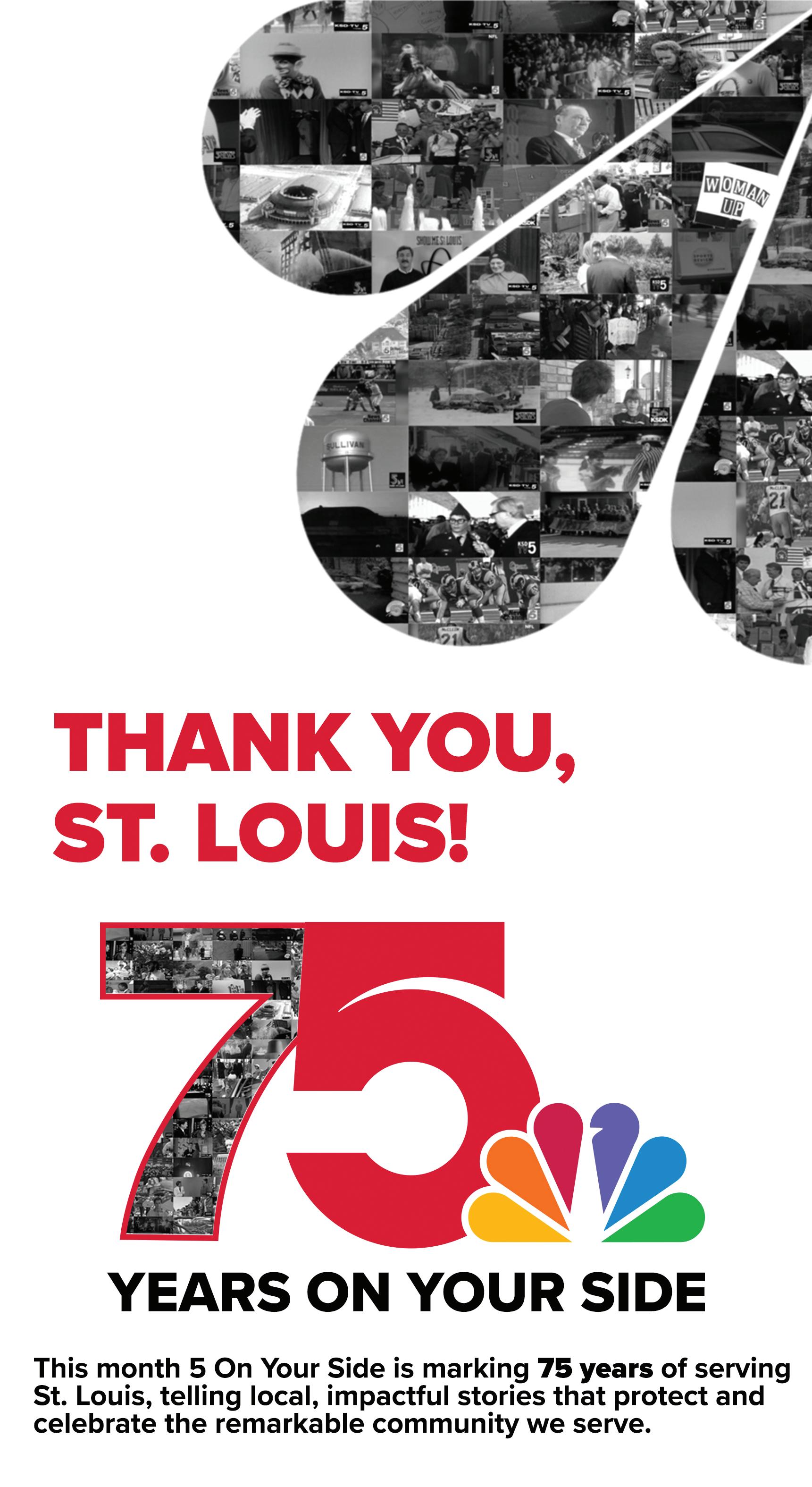
Continued from A1
Democratic district, the primary is the election that matters.
Crockett, the sole Black freshman member of the Texas House, shot to national prominence last summer as she and fellow Democratic house members fled the state and headed to D.C. to try to forestall a bill critics say would curb voting access. In this year’s race, she is armed with a not-so-secret weapon – the full-throated endorsement of Johnson.
Johnson, a former nurse who has represented the district since the lines were drawn in the early 1990s, hand-picked Crockett, saying in a statement Crockett is “just the person we need in Congress at this critical time.”
She lauded Crockett’s “focus on equitable economic recovery for all, [and on] reforming the criminal justice system to make it more equitable and accessible for all.”
With that coveted endorsement, along with what Crockett describes as an increasingly brisk fundraising pace and lessons learned in St. Louis about seizing opportunity, the former track athlete hopes to leapfrog from being a neophyte state representative to becoming a freshman lawmaker in Congress. And she hopes to put forth legislation that will benefit urban residents beyond the Lone Star State.
“There are great similarities between where I literally grew up and the district that I seek to represent,” said Crockett, whose father and stepmother remain local residents. “And so if [legislation] benefits my home district here in Dallas, something tells me that it has the potential of also benefiting my home district in St. Louis.”
While Crockett’s political career is still emergent – she began her first term in the Texas statehouse in January 2021 – she’s been running for some time.
She said she ran track in high school, played volleyball, and “was big on Junior Achievement,” but “never paid attention really to politics.”
“I’ve never been a fan of it,” she said. “And I’m still not a fan of politics.”
She credits the nod from Johnson with being a key motivator in her current campaign.
As speculation grew about whether the 86-year-old Johnson, who could not be reached for comment, would run again, Crockett said she knew “there was just going to be a lot of interest” in the seat.
“I was like, ‘I don’t know that I have the stamina… I don’t know that I want to deal with all the drama. I’ve been dealing with drama at the Texas House all year,” she said. “I dealt with drama to get here. But getting that call from the congresswoman …
“To have the person that served the district say that you’re the one that’s ready, to [have her] pick you not because you’re friends… not because you’ve been doing it for a long time, but because she watched you and saw potential and saw some things in you that she felt were reminiscent of who she is and who she was, right?”
“I wouldn’t be running, I don’t think, but for her phone call,” she said. “So it’s definitely pivotal in this race for me because it means a lot.”
For one thing, it means follow-on endorsements and stepped-up donations.
One such combo came from Houston Democrat Senfronia Thompson who joined the Texas Legislature in 1973.
“I hold Congresswoman Eddie Bernice Johnson in very high esteem,” said Thompson, who was central to last summer’s Texas skedaddle. “Based upon her recommendation and from her vantage point I felt that [Crockett] was worthy of my endorsement.”
Thompson has donated at least $1,000 to Crockett’s campaign, according to Federal Election Commission records. She called Crockett a
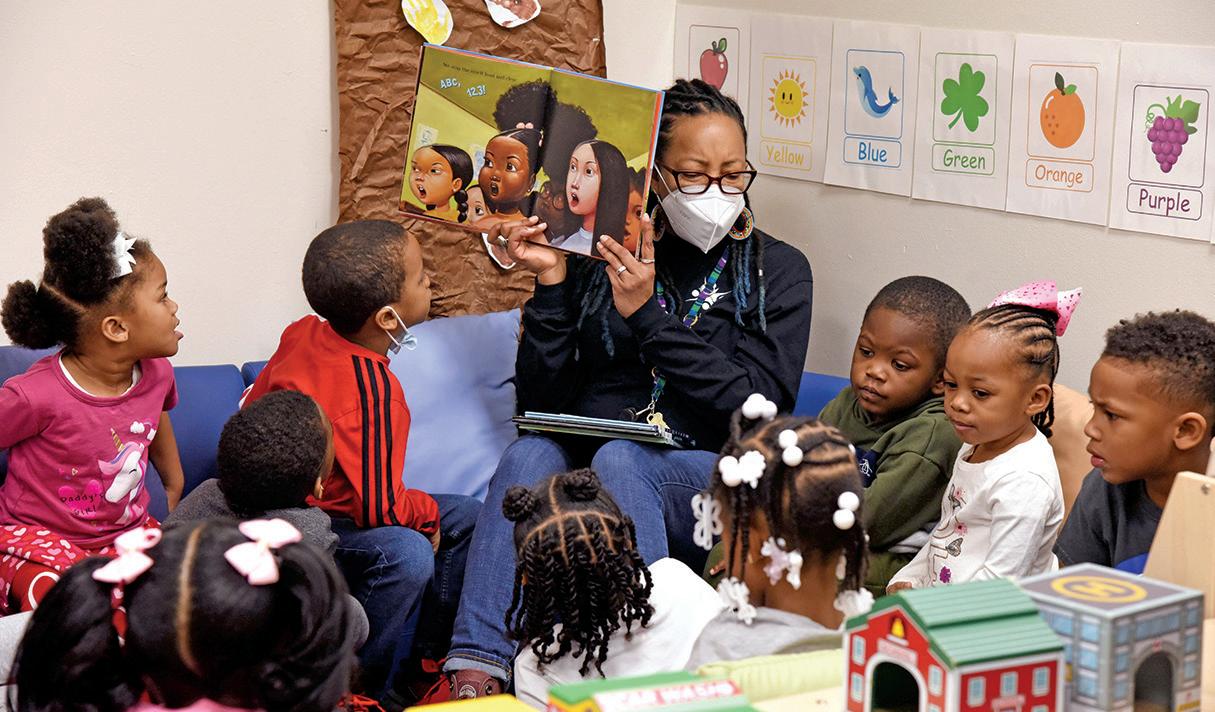
“hard-working person,” adding, “she does research on legislation, has tenacity, drive, [and] interest in issues.”
Thompson said she’s also seen Crockett use her law background to “try to look out for persons who are in need of help, to be a drum major for persons who cannot afford to hire lobbyists.”
Beyond voting rights, Crockett’s signature issues include health care, reproductive justice, criminal justice and environmental justice, according to her website.
During the 2021 Texas session, Crockett proposed more than 60 pieces of legislation, from easing voting restrictions to cutting costs for indigent defendants and removing criminal penalties for having drug paraphernalia. Not a single one passed, according to multiple published reports
Thompson said freshman legislators often have to “repackage” and “reintroduce” measures to get them through.
Johnson’s blessing has been a boon to Crockett, but the campaign has hardly been a cakewalk.
In a cramped primary that includes a former member of the Texas House and an adviser
on Pres. Joe Biden’s 2020 Texas campaign, Crockett is not the leading fundraiser. As of Dec. 31, she ranked fifth in total receipts among primary contenders, with receipts of $101,281, according to data from the election commission.
And she had to answer questions in January, when a video surfaced of a pre-endorsement interview in which she noted Johnson’s support for the infamous 1994 crime bill, and appeared to question how, as a nurse, Johnson was “somehow” a multimillionaire.
Crockett dismissed the video as an act of desperation by a primary rival, according to The Dallas Morning News. She said her fundraising pace picked up in December and January. She counts among her financial supporters Donald Suggs, publisher of The St. Louis American, and Karla Jurvetson, a California-based psychiatrist and “large-sum donor to Democratic candidates,” according to Influence Watch.
Crockett said she met Jurvetson at a private dinner in D.C. along with the brother of civil rights icon John Lewis, following a march for
voting rights.
Jurvetson said she was impressed with Crockett’s willingness to be “brave” and “outspoken” on the issue of voting rights, a topic with local and national implications.
“What Jasmine is focusing on really has ramifications for our whole country as far as fair representation for our whole democracy,” Jurvetson said. “Because of the environment we’re in right now, where the issue of voting rights has become nationalized, it really is something that impacts everyone in the country.”
So far, the Arch City has proven less than golden for Crockett. She attributes the dearth of local donations to a lack of local in-person campaigning.
In the meantime, she reaps praise from local fans.
Jared Boyd is chief of staff to St. Louis Mayor Tishaura Jones, who, like Crockett, is a member of the Delta Sigma Theta sorority, which focuses on public service.
Boyd said he met Crockett in 1999 “when we did Model United Nations together in high school.” He thinks she developed her heart for service at home, before heading off
A St. Louis County librarian shared a story with young students in the Urban League Head Start program in Jennings as part of the Love of Reading library program. The library shared books with children to take home and introduced them to the important world of reading.
to Rhodes College where she received a Bachelor of Arts in Business Administration.
“Similar to [Congresswoman] Maxine Waters, who is another St. Louisan that is serving a different area, Crockett clearly has a passion for protecting the rights that our forefathers were able to provide us,” added Boyd, who said he and the mayor recently attended a virtual fundraiser for Crockett. “So I think, like Maxine Waters, her service and her heart for service, speak for themselves and are forged out of dealing with real people in St. Louis.” Thinking back to her teen years, young Crockett would have thought there was “not a chance” she’d someday be running for Congress. Even now, she conceded, there are days “I feel the same way.” She added, however, that growing up in St. Louis instilled in her a strong sense of the possible, of seizing opportunity, of being ready for the next step.
“I truly feel like I’m walking in my purpose,” she said, before heading into a crowded campaign calendar. “I have no idea of what to expect, but I plan to fight to get there.”

Continued from A1
such unspeakable acts of hate.”
Three separate law enforcement agencies have opened investigations into the virtual attack, including the FBI, the university reports.
A St. Louis County Department of Public Health virtual conference “Legacy Stories from Descendants of the Tuskegee Experiment” was racially attacked in similar fashion on Feb. 11.
The discussion was part of a Black History Month initiative to bring awareness to the history of the Tuskegee experiment and address vaccination hesitancy among African Americans.
“Today the St. Louis County Department of Public Health was the target of a malicious online attack that forced us to prematurely end a virtual panel discussion on COVID-19 vaccinations and the African American community. We regret that this attack prevented the public from hearing crucial information, including commentary from descendants of victims of the Tuskegee Study who were prepared to discuss why vaccinations are so important.”
HBCU bomb threats
Howard University in Washington, D.C. received its fourth bomb threat in three weeks on Monday, and the rash of telephone terrorism also returned to Fayetteville State University and Clafin University in South Carolina.
St. Louis County NAACP President John Bowman said the bomb threats bring back haunting memories of bombings in Black communities
Continued from A1
which depicts an enslaved woman approaching the courts.
“His sculpture is just terrific in so many ways — has so many facets to it,” he said.
“And so much symbolism! I think you can have an art class and a history class right there walking around it.”
The memorial will include the names of the enslaved people who filed suits. Sometimes, Mason notes, it’s only a first name — because that’s all they had. Even so, Mason said the suits make clear these men and women were not just “passive
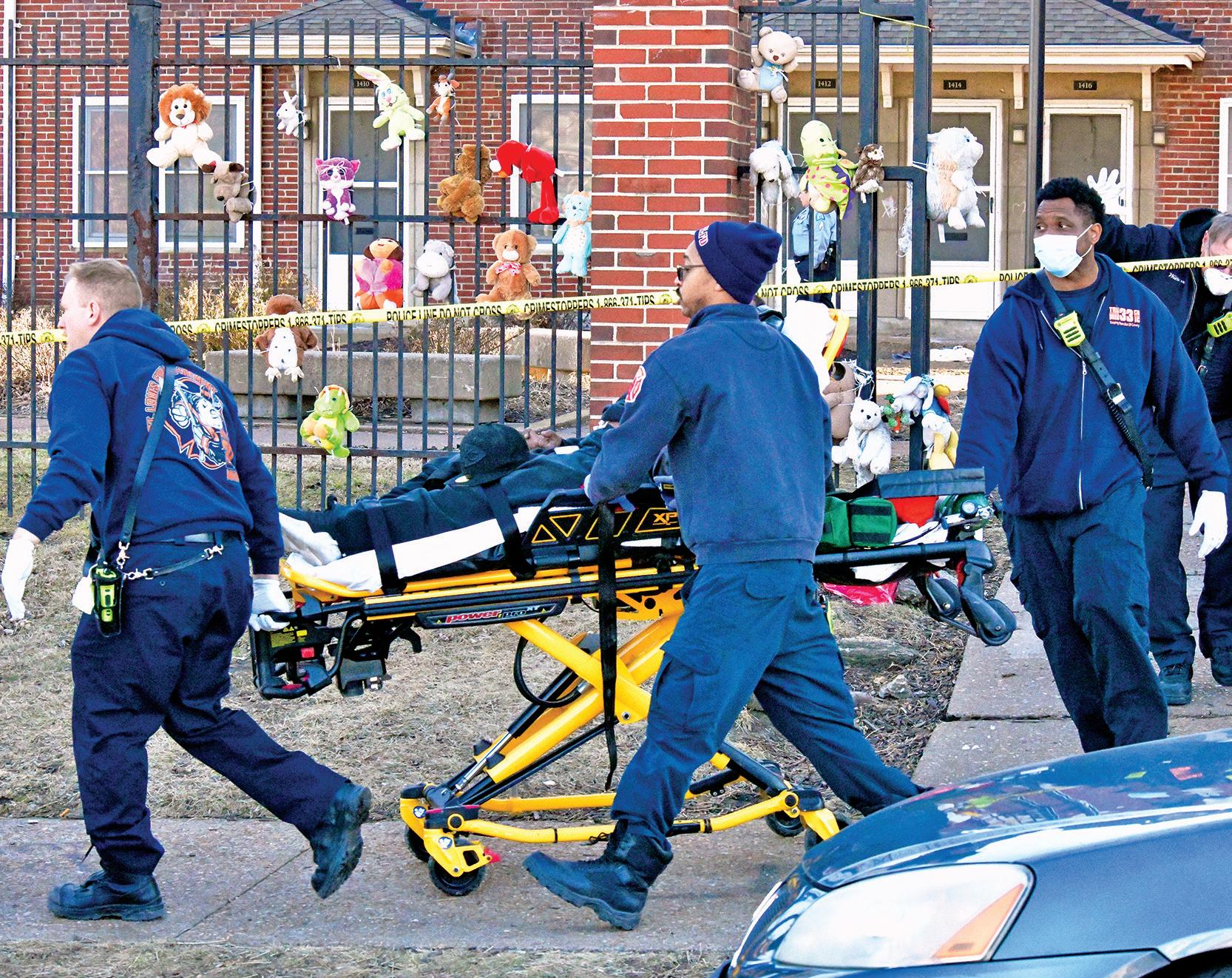
during the civil rights era.
“Many times, it was one of the tactics used to oppress Black people,” Bowman said.
“Unfortunately, these threats and actions seem to be really heightened due to the rhetoric and divisiveness of some of our
lambs led to slaughter.”
“These were people who really understood the essence of humanity, which is the drive to be free,” he said, “and were willing to take on the risk of the dire consequences — not only what their owner might do to them on the plantation here in town, but being sold down the river to the more horrible conditions in Louisiana and Mississippi. That takes a lot of guts.”
Reflecting on that courage, Mason said, “That’s when I decided I was always going to call myself a proud slave descendant.”
Both Mason and Venker said they hope lawyers also can take inspiration from the attor-

previous leaders, and they have continued to work to create this division among racial lines.”
FBI investigations are underway as the bomb threats continue.
“The FBI takes all threats seriously, and we are com-
neys, almost always working pro bono, who fought on behalf of enslaved people.
“Lawyers, I hope and pray, as they walk by that memorial on their way to and from court,
mitted to thoroughly and aggressively investigating these threats. We would like to remind members of the public that if they observe anything suspicious or have information about potential threats to report it to law enforcement imme-
they get a sense of the fact that in order for our democracy to be truly protected, those big courthouse doors must always be open to the most disenfranchised people that can possibly
diately, call 1-800-CALL FBI or submit a tip to tips.fbi.gov,” FBI spokesperson Shelley Lynch said.
Manlove offered a reminder that racist incidents here and across the nation are nothing new.
come to those doors,” Mason said. “That’s how we protect everything we’ve worked for in this country. Lawyers are at the forefront.”
For more on the freedom
“In the past, we have seen Black students at Missouri colleges and universities face racial abuse from cotton balls being scattered at Mizzou’s Black Culture Center to nooses on campuses,” she said.
suits, Venker recommended “Before Dred Scott: Slavery and Legal Culture in the American Confluence, 17871857.”



The St. Louis City SC will be playing its home games at the newly named Centene Stadium.
The Clayton-based health care organization that provides managed care for Medicaid recipients has signed a deal for naming rights at the 22,500-seat stadium, which will be completed this year. Centene officials did not disclose the financial details of the deal but said it lasts 15 years.
“Together, Centene and St. Louis City SC share the goal of revitalizing the St. Louis region and dedicating resources and sustained programming to serve our community,” said Marcela Manjarrez, the company’s executive vice president and chief communications officer. The stadium at Market and
20th streets is the latest St. Louis facility that Centene has gained the naming rights for. The others include the Centene Community Ice Center in Maryland Heights, which opened in 2019. The rink is the practice facility for the St. Louis Blues. Centene officials said the partnership would help it attract talent to the St. Louis region and nationwide.
“This is really a once-in-ageneration opportunity,” said Suzy DePrizio, senior vice president and chief marketing officer for Centene. “Given the scale and the visibility of this partnership, it’s a great opportunity for us to build our brand and build national awareness in our brand, both in terms of reaching and recruiting new members nationwide, and also for us to be able to recruit employees nationwide as well.”
St. Louis City SC Vice President of Community Relations Khalia Collier said “Health and wellness is one of our core pillars at the club, and we’re so excited to be able to team with Centene.”
The partnership also allows the organizations to partner on health and wellness programs throughout the St. Louis area, St. Louis City SC Vice President of Community Relations Khalia Collier said.
“Health and wellness is one of our core pillars at the club, and we’re so excited to be able to team with Centene,” Collier said. “It’s not just about soccer for us, it’s really integrating a holistic model to bring to life sustainable programming.”
The naming rights deal is the most recent development for the club. Last month, club officials announced that former South African soccer player Bradley Carnell will serve as head coach. Carnell was an assistant coach for the New York Red Bulls and was interim coach during part of the 2020 season.

Special to The American
Clifford Wilson, Sr. passed away on January 25, 2022 at the age of 91. He was a beloved husband, father, grandfather, great-grandfather, uncle and brother who was the true patriarch of the family. He was surrounded by family at the time of his homegoing.
He was born on Sept. 6, 1930 in Osceola, Arkansas. He was the 6th child of 14 children born to Edward and Mabel Wilson. His other brothers and sisters were Eddie, Mildred, Bennie, Mary, Alvin, Ruby, Otis, Robert, Grace, Beatrice, Evonne, Eunice and Johnny. The family moved to St. Louis in 1940 where Clifford would go on to attend Dunbar Elementary School and Washington Technical High School during his formative years. After school he would work for Coca-Cola in it’s delivery department. Clifford would make his professional mark afterwards when he worked at the Krey Meat Packing Company for over 20 years where he would eventually become a union representative to thousands of workers nationwide. In 1973, he would become the organizer of the Black Trade Unionists Organization where he made a huge impact for African American workers’ rights in the meat industry.
Also in 1973, Clifford would become the founder of the United Black Community
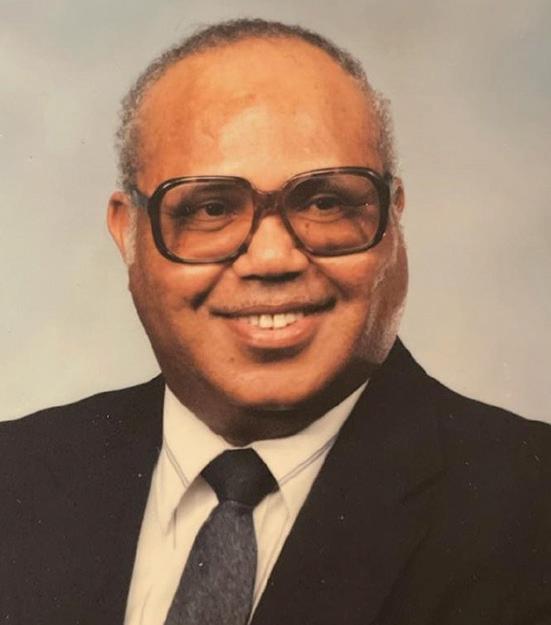
Fund St. Louis Chapter. From this he would establish the Clifford Wilson, Sr Service Center where a number of social programs were provided to the community. Among the services provided were free hot meals programs, notary services and weekly educational forums that provided families with the tools they needed for everyday life.
During the late 70s and early 80s, Clifford served as Alderman of the 4th Ward for the City of St. Louis. During his term, he helped organize the First Aldermanic Black Caucus in the city of Saint Louis now called the African American Caucus. He wanted the Northside of Saint Louis, which remains to be predominantly African American, to have its fair share of the financial pie
allocated throughout the city. In retirement, Clifford enjoyed time with his family and closest friends. He was a collector of classic movies and music. Amongst his most cherished collection was his vintage vinyl records of classic artists ranging from all genres of music from Frank Sinatra, Nat King Cole even to some modern acts as well.
Clifford always had a sense of pride in helping others, especially his Black African American people. He spent his whole life trying to uplift his people by any means necessary. Even in his final act, he fought off the Covid-19 virus and lived long enough to be able to donate his body for organ donation. Even in the end, he spent his final time helping others. He was preceded in death by first wife Verneda and second wife Gwendolyn; children Diane McCloud and Cynthia Meriwether. Clifford is survived by his sister, Mary Jackson; children Keith, Verchelle, Lisa West and Clifford II; grandchildren Lisa
Charmaine,
and friends.


–Toni Evans, COVID Survivor
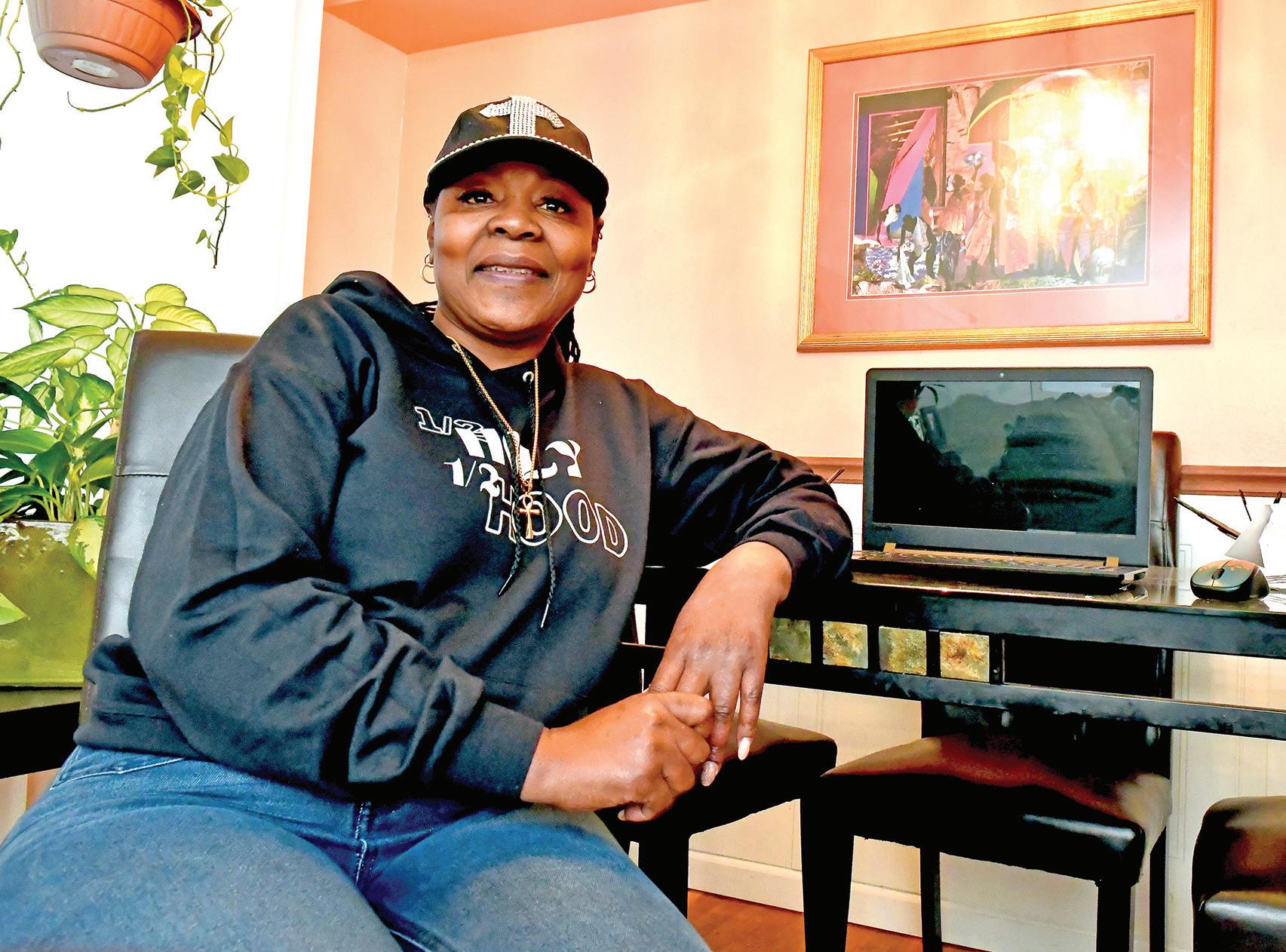
Evans in her
County
Feb. 7, 2022. Evans, a BJC employee, contracting
ago and spent two months in the hospital. More than two years later, she still has
By Sylvester Brown Jr.
The St. Louis American
A cup of coffee during the 2020 winter holidays alerted 15th Ward Alderman, Megan-Ellyia Green, that she might have contracted COVID.

“Every holiday I buy mint Coffee Mate,” Green explained. “I didn’t taste anything in my first cup of coffee. The next time…again, nothing. That’s when I thought, ‘oh, shoot!’” Within 24 hours of her observation, Green got a fever and severe body aches. By week three after her diagnosis, she was experiencing severe headaches, heart palpitations, and insomnia. It seemed like her mind wouldn’t
n “I was an experimental lab rat. I got it in March 2020, when the pandemic first struck…before doctors even knew what to do.”
– Toni Evans, COVID survivor
“shut down” as pain continued in her nerve endings.
“It felt like I was caked in mud, my legs and arms felt weighted down all the time,” Green recalled.
The symptoms lasted for months. Some, she said, still linger to this day. Green, a
“I feel like a bus has run over me.” Calls for quick action
Tower Grove South resident, lives alone with her Shar-Pei /boxer mix, Dewey. As a self-described “active person,” Green said depending on others while contending with continuous pain has proven to be frustrating and mentally depleting. Green caught COVID in the first year of the pandemic. Although coronavirus patients complained of lingering symptoms, researchers had yet to give the condition a name. Today they’ve identified the ailment as “Long COVID,” also known as Post COVID syndrome or long haul COVID. People experiencing the malady have a wide range of new, returning, or exacerbated health problems weeks or months after being infected.
A few years ago, I was teaching a class to a group of medical students when my phone began to vibrate. I glanced down, noticed it was my brother but ignored it with the intent to call him later.
He proceeded to call me multiple times and left a message that I needed to call him right away. At that point, I realized something bad had happened. I excused myself from the class, called my brother and received the news that no one wants to hear. My father had been found dead in his home from an apparent heart attack.

My father suffered from diabetes, hypertension, and he was overweight. He loved to travel, eat, and enjoyed a good Jack Daniels cocktail every now and then. Unfortunately, that lifestyle accompanied with some bad genetics contributed to his ultimate devastating outcome. I’m certain this was not the type of legacy he wished to leave behind.
My father’s tragic ending from heart disease is not my only close encounter with frightful healthcare moments. I also recall one of my elderly female patients with diabetes, obesity, and hypertension (the trifecta of disease), who for years refused to accept my recommendations regarding her out-of-control diabetes.
n Heart disease can be prevented. Maintaining a healthy weight, regular exercise, keeping diabetes and high blood pressure under control, and not smoking are the essential ingredients for prevention.
She presented one day with upper back pain and upon further questioning, it was determined that she was experiencing cardiac pain. She initially declined my recommendation for stress testing.
However, a few weeks later she agreed to have a stress test. The test was positive, she had a coronary catheterization which revealed 3-vessel disease, and she underwent bypass surgery. Her story is a lesson to women how signs of heart attack may appear differently as compared to men. Women may not feel crushing pain in the chest. Pain may be in the back,
St. Louis American staff
Congresswomen Cori Bush (D-Mo.) and Pramila Jayapal (D-Washington) are leading an effort to address “Long COVID” cases in the U.S.
An additional 17 House members signed a letter to U.S. Department of Health & Human Services (HHS) Secretary Xavier Becerra, Centers for Disease Control and Prevention (CDC) Director Rochelle P. Walensky, and Centers for Medicare and Medicaid Services (CMS) Administrator Chiquita Brooks-LaSure urging federal health agencies to address the lack of health monitoring and treatment funding for children and young people suffering from long COVID. “We urge the Department of Health and
Human Services to take immediate action to improve the health care system to support and monitor children as the long-term effects of COVID-19 continue to harm them,” the House members wrote.
“The impact of potentially millions of children becoming permanently impaired from COVID-19 will have unforeseeable consequences unless policymakers immediately intervene. Given that human life and health are at risk, it is imperative that HHS remain a consistent and reliable steward of public health that presents a comprehensive, rapid federal response to controlling the spread of COVID-19.”
Dr. Alexander Garza, co-lead of the St. Louis Metropolitan Pandemic Task Force, said during
See BUSH, A11



“Taking Care of You”
By JoAnn Weaver
The St. Louis American
One in three deaths in the United States is due to cardiovascular disease.
African American and older individuals are at a higher risk than others, and about 2 out of every 5 African American adults have high blood pressure, according to the Centers for Disease Control and Prevention.
Less than half of them have the condition under control.
African American adults are much more likely to suffer from high blood pressure, heart attacks, and stroke deaths than white adults.
Among Black adults 20
Continued from A10
The St. Louis American cited a recent study detailing how as many as one in three people who survive COVID experience lingering symptoms. Some of the more surprising indicators include hair loss, brain fog, erectile dysfunction, shortness of breath, prolonged loss of taste and smell, and several other neurological and respiratory conditions.
Toni Evans, a BJC employee, wasn’t aware that there is an official name for the pain she endured since contracting COVID almost two years ago.
“I was an experimental lab rat. I got it in March 2020, when the pandemic first struck,” Evans said. “I got it before doctors even knew what to do.” Evans gave a harrowing account of catching COVID. At the time she worked for Children’s Hospital. She can’t say for certain, but Evan’s is sure she got the illness from work. She recalled stopping at an Urgent Care facility and getting tested. The results came back “negative.” She went home, drained, and exhausted, took a shower and went to bed. What happened over the next three weeks are a blur, she said.
Her children told her she took part in a zoom family meeting but didn’t say much, which is unusual. After not hearing from their mom, Evans’ adult children went to check on her. Her daughter
Continued from A10 a Feb. 8 briefing that over the past two years, “we have discovered a lot about the COVID-19 disease process.”
“However, there is still much that we don’t know about the long-term effects from infection, particularly in children. Because of the potential for life-long impacts, it is imperative to develop systems
Anderson
Continued from A10
upper abdomen, or jaw. It is also important to understand how stress can increase the risk of heart disease. Stress causes increased levels of a hormone called cortisol. This
years of age and older, 60.1% of males and 58.8% of females had heart disease, according to 2015 to 2018 data from the American Heart Association (AHA).
In 2016, the heart disease mortality rate was highest among Black people compared to other racial and ethnic groups. In 2019 among all ages, cardiovascular disease or heart disease caused the deaths of 57,761 Black men and 54,544 Black women in the nation, according to the AHA.
Dr. Denise HooksAnderson, Associate Professor of Family and Community Medicine and Interim Assistant Dean of Diversity, Equity and Inclusion at Washington
University School of Medicine spoke about why this is happening.
“The research is showing that heart attacks are on the rise in younger women,” she said. “One reason for this is the large number of [obesity cases] in the community along with the high numbers of [patients with] hypertension and diabetes, which are all factors of heart disease.”
Nationally, heart disease is the number one killer of women, according to the CDC. Hooks-Anderson talks about how recent research has linked heart disease to pregnancy complications.
“If a woman had diabetes and hypertension in pregnancy and had an early delivery, there has been research that shows there is a link between this and cardiovascular disease later. So younger women need to start thinking about heart disease,
particularly if they have those types of complications,” she said.
Also, among Black adults 20 years of age and older, 3.9% of males and 2.3% of females have had a heart attack, according to the heart association.
In 2019 among all ages, heart disease caused the deaths of 22,643 Black males and 18,021 Black females.
In addition to discussing the disproportionate rate of heart disease in African Americans, Hooks-Anderson talked about preventative measures to practice that can mitigate the risk.
“The number one for me would be exercise because so many African Americans put exercise on the back burner,” she said. “The second is being intentional about what we put in our bodies and [trying] to make our plates colorful.
A staple in the Black household is soul food, which
includes fried chicken, mac and cheese, greens, candied sweet potatoes and cornbread.
“Most of that plate should be plant based and not deep fried or filled with things that don’t give us the nutrition that we need,” Hooks-Anderson said. “We need to keep our recipes but transform them into healthy dishes.”
An individual needs between five and nine servings of fruits and vegetables per day, according to HooksAnderson.
“This may mean that we need to shop at farmer’s markets to find less expensive versions of these things, but we should be intentional about it, and we may need to learn to cook differently; a lot of the [foods] that we grew up on are not good for us,” she said.
As heart disease, cancer, and stroke are the leading causes of death for African Americans,
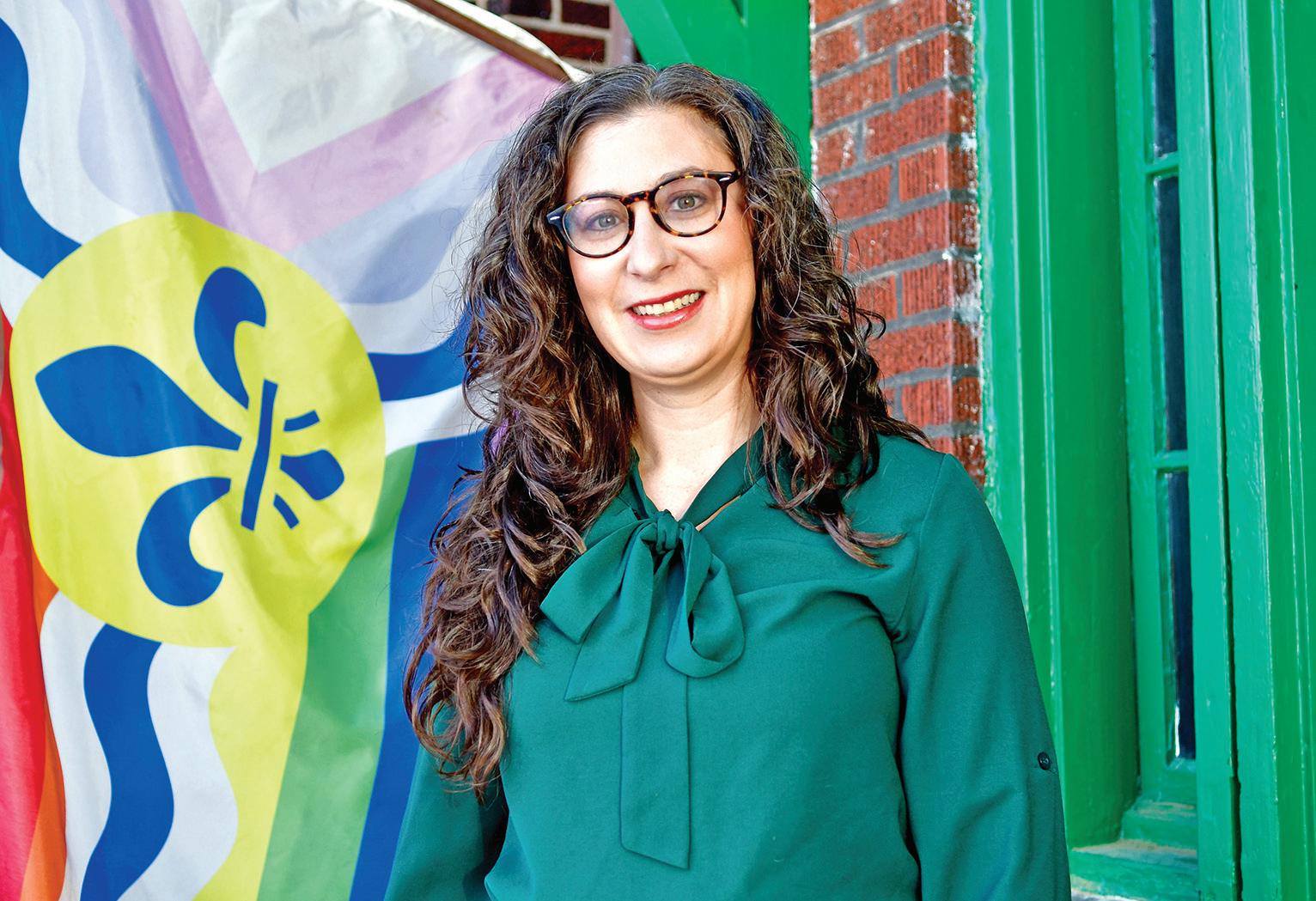
said she was in her bedroom, unresponsive. Evans has brief flashbacks of being in a Missouri Baptist Hospital room surrounded by doctors and nurses. She remembers them flipping her on her side or back to clear her lungs. Someone said something about her having pneumonia. Her family informed her that things had gotten so bad, doctors advised them to start getting their mother’s affairs in order.
Two months later, in May 2020, Evans was finally released from the hospital. She was home but she wasn’t painfree. She had severe headaches, nerve pain, a torn rotator cup
to surveil for long-COVID syndromes in children as well as fund research and access to effective treatments,” he explained.
Dr. Leonard Weinstock, a gastroenterologist with Missouri Baptist Hospital, noticed a link between typical “long COVID-19” symptoms and that of another condition: “Mast Cell Activation Syndrome.”
“Long COVID is a major issue for adults, amongst other post-acute COVID-19 [effects],
hormone elevation can increase blood pressure and heart rate. Prolonged instances of high blood pressure can cause heart and vessel damage. Heart disease is the number one cause of death for adults in the US. However, during the months of January and February 2021, Covid-19 deaths claimed the top spot.
and had somehow developed a limp. Doctors told her the symptoms were related to detoxing from the ventilator and injuries sustained from having her limp body constantly repositioned to clear her lungs. She accepted that explanation then but more than two years later, she still has postCOVID troubles.
“I feel like a bus has run over me,” Evans said. “I have heart palpitations from anxiety, insomnia. My doctors say I have ‘chronic PTSD’ because I’m scared to go to sleep. That’s what happened the first time. I went to sleep and almost woke up dead.”
throughout America,” he said in the release.
“After a COVID-19 infection, the risk for a multisystemic illness–which can lead to disability and poor job performance–is great. This may become our second pandemic.”
Bush and fellow members of Congress seek: Guidance to local, state, and federal public health officials emphasizing the need for better health monitoring of children during and after a
Heart disease is an umbrella term that includes several conditions such as heart failure and heart attack. Over 650,000 people die each year from heart disease. From 2016-2017, heart disease cost the US $363 billion dollars. Yes, that is a billion with a “B.” There are several risk factors for heart disease, such as smoking, obesity,
Last year, while at a nightclub, Evans’ knees buckled. She fell and broke her wrist. “It hasn’t healed yet,” she said. “It’s those types of things I’m still dealing with.” Green said she was fortunate. She read about and enrolled in a new program offered by Washington University School of Medicine called, “Care and Recovery After COVID-19” Clinic.
According to the University, the clinic provides “coordinated and collaborative care among 11 specialties. Visits include a comprehensive assessment of acute COVID illness, symptom history, current symptoms, and
COVID-19 infection.
Making data related to children’s health and COVID-19 available on the CDC website.
Removing cost barriers to patients seeking post-COVID monitoring and care.
Use of available authorities, including march-in rights, to make drugs needed by those suffering from COVID-19 long-term effects available to everyone.
“We are currently in the midst of a historically unprecedented threat to life, health,
hypertension, and diabetes. Heart disease can be prevented, however. Maintaining a healthy weight, regular exercise, keeping diabetes and high blood pressure under control, and not smoking are the essential ingredients for prevention. To accomplish these goals, routine appointments with your primary provider is encour-
15th Ward Alderman, MeganEllyia Green, caught COVID in the first year of the pandemic. The symptoms lasted for months. Some, she said, still linger to this day.
it’s important for the African American community to learn about these conditions and what can be done to stay healthy.
Dr. Stephanie White, cardiologist at SSM Health St. Mary’s Hospital, talked about how the COVID-19 pandemic has reduced primary care visits for people, especially African Americans.
“Primary care is a great prevention tool and the pandemic has really affected that with people not wanting to get out and go to the doctor,” she said. White also spoke about what information she gives out when she goes into a community to give a health talk.
“I tell people to know your numbers, and it’s about knowing early on what your blood pressure is because you can’t treat a problem if you don’t know if you have one,” she said.
have the same viral disorder; a working model of treatment for post-COVID patients and future infectious diseases may be developed soon. This hypothesis underscores the value of the local COVID clinic’s work.
Green said the clinic has helped as she works her way back to normal. Evans hadn’t heard of the program but welcomed the news of a clinic dedicated to treating the aftereffects of COVID. Both women worry what COVID may mean for society in general.
screenings for potential complications and more.
The unknowns of COVID are still unfolding. Researchers are still trying to figure out issues like how the immune system reacts to long COVID, the cause of “brain fog”; that uncomfortable “spaced out feeling” COVID survivors speak of, or how the virus increases levels of anxiety, depression, and insomnia in people.
One thing is certain: Long COVID is here for the long haul. In a recent WebMD.com article, a researcher theorized that because so many people in such a short amount of time
and safety as we head into the third year of a deadly pandemic. The U.S. reported 1.5 million new cases in a single day on January 11, adding to the staggering 78 million positive cases and over 915,000 preventable deaths reported since March 2020,” the letter states.
The (CDC) published a study in January indicating that COVID-19 infections in children may be linked to lifelong health consequences, including diabetes.
“I think as a country we have not even started to understand the long-term impact of COVID or how it will affect the workforce or people with ongoing disabilities, “Green said. “I don’t even know if there are conversations about providing a support system for people with Long COVID.” Evans, who’s thankful that none of her children or grandchildren contracted COVID from her, also worries about people going back to work with ongoing undiagnosed illnesses.
“It used to be you had to quarantine for 14 days, now they’re saying you can go back to work in five days,” Evans stated. “I have good insurance, but I feel for those who’ve had COVID and no longer have symptoms but are still dealing with this disease.”
Sylvester Brown Jr. is The St. Louis American’s inaugural Deaconess Fellow. Patients who are still experiencing prolonged symptoms after COVID-19 can call the CARE clinic at (314) 996-8103.
“In St. Louis, our communities are grappling with the impact of a nearly 40 percent peak positivity rate that threatens to disrupt every sector of our local economy,” Bush states in the letter.
“Children in particular have faced tremendous obstacles while navigating the pandemic, ranging from the tragic loss of parents and caregivers, difficult school closures, and the constant threat to life and health.”
aged. These “check-ups” or yearly physicals should include blood work as well, checking for cholesterol and blood sugar levels. Reducing stress can also help lower the risk of heart disease. My daily routine is full of people who are at risk of heart disease. As a result, I am on a mission to educate as many people as possible about heart disease prevention. Therefore, heart month is important to me. What is your “why”?
Denise Hooks-Anderson, M.D., FAAFP, is associate professor, SLUCare Family Medicine, and interim assistant dean of Diversity Equity and Inclusion


PRESENT:












When we’re lucky enough to have a chance to go out for dinner, there are a few ways to stay healthy with our food
those leftovers for lunch the next day!
are popcorn, wheatberries, brown rice and wild rice.










for several different reasons.
See if the restaurant will let you “share” a meal. Many meals are two, three or more times an actual serving size.
We each need at least 3 servings per day of whole grains. But what does that mean? How can we know what foods contain whole grains?
Look at the ingredients list of a package of food you are about to eat. If the word “whole” is used, then there is most likely a whole grain ingredient. A few items that don’t use the word whole
As soon as you’ve divided your plate into the right size servings, ask your server for a to-go box. Go ahead and box up what you don’t need to eat right away. You can enjoy
Nutrition Challenge: Yogurt is a healthy food powerhouse. It is a great source of calcium, vitamins A and D, potassium and protein. Greek yogurt is usually the highest in protein. Yogurt is also a great way to regulate your
In our “Super-Size” world, we can easily lose track of what an actual serving size means. When reading labels on a food or drink product, you can determine the nutrients, sodium, fiber, sugar and calories of a serving size. But be careful; just because it looks like one small bottle
> Ask the server how the different menu items are prepared. Fried, sautéed, and
lifestyle. You can do this by forming new habits. For example, if you decide to eliminate sugary drinks completely, it only takes a few weeks until this becomes what you’re used to.
digestive system. It contains “good” bacteria called probiotics that can help your stomach and intestines work better. If you’ve ever been constipated or had diarrhea, you know how uncomfortable it can be when your digestion isn’t working properly.
Here are the steps to making a healthy permanent change. We‘ll use the sugary drink change as an example.
Let’s make a game out of exercise!
Getting plenty of whole grains in your diet can improve your health and reduce your chance for some chronic illnesses such as stroke, diabetes, heart disease and high blood pressure. Visit wholegrainscouncil.com for more information.
> Decide you’re going to switch from soda to water.
How to “sneak” yogurt into your diet:
> Start by substituting one drink per day to water.
> Avoid gravies, cheese sauces and other kinds of toppings that often just add fat and calories.
> Substitute your usual sour cream with plain Greek yogurt.
> Use plain yogurt as a dip for celery or carrots.
> Every few days increase the amount of water and decrease your soda intake.
Learning Standards:
of soda — it may not be considered one serving size. For example, a 20-oz bottle contains 2.5 servings. So if the bottle states “110 calories per serving,” that means the entire bottle contains a total of 275 calories! Remember to watch those serving sizes and you’ll have better control over what you’re eating and drinking.
> Stick with water to drink. Not only will you save money, but you won’t be adding in extra calories from a sugarfilled drink.
> Mix vanilla yogurt, fruit and granola into a tasty breakfast parfait.
> After 3-4 weeks, this change will become a habit.
Learning Standards: HPE
Melissa Douglass, MSW
Deborah Edwards, School Nurse
Yonniece Rose, Registered Nurse

Latoya Woods, DNP, APRN, FNP-C
When you automatically reach for water instead of soda, it has now become a lifestyle change!
> What are other ways to stay healthy while dining out?
HPE 2, HPE 5, NH 1, NH 3, NH 5
Learning Standards: HPE 2, HPE 5, NH 1, NH 3, NH 5
Learning Standards: HPE 1, HPE 2, HPE 5, NH 1, NH 5

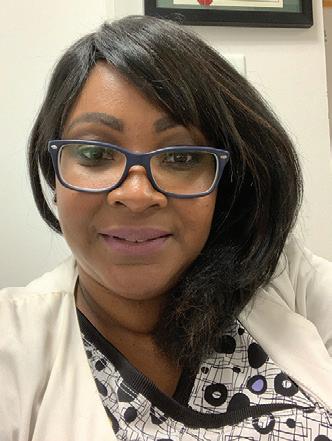
Where do you work? I am a family nurse practitioner for BJC Medical Group.
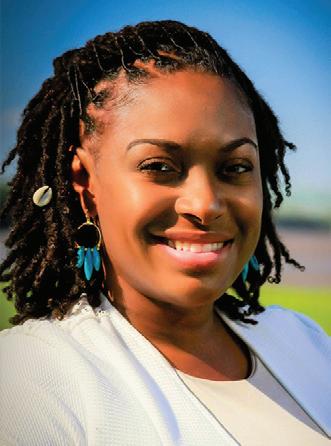
Where do you work? I am the founder and distance counselor for Goal Driven Counseling, LLC.
Where do you work? I am a school nurse with St. Louis Public Schools.
Where do you work? I am a school nurse at Monroe Elementary School.
Nigeria, Master of Science and Ph.D in Orthopedic and Sports Physical Therapy from the University of Lagos, Nigeria, and I received my Postdoctoral Fellowship from the University of Calgary, Canada.
As spring approaches, warmer weather allows us all to get more outdoor exercise. Here are some ways to become a more active person.
even simmered can all mean, “cooked in oil.” Instead, choose baked or grilled options.
March 20, 2021, is the first day of spring. With spring comes warmer weather and longer days (later sunset). Make it a habit to spend as much time playing outside as the weather allows.
Now that the temperature has dropped, how can we stay active and fit this winter? Ask your parents where you can set up a work-out corner in your house for exercising (jumping jacks, stretching, dancing, etc.) Here’s an idea — why not stay active while watching TV? It’s easy to do! Instead of sitting and
It’s important that before you embark on any kind of exercise to remember two things: warm up and cool down. Start with some slow stretches and movement (like walking) to increase your heart rate a little. Warm up for a good five minutes before increasing your heart rate.
Secondly, when you are finished with any kind of strenuous (very active) exercise, take some time to cool down. You can slowly stretch your arms and
Learning Standards: HPE 1, HPE 2, HPE 5, NH 1, NH 5
watching your favorite TV show, you can stand and walk briskly in place. Raise your knees and swing your arms as you walk. You can easily get in 20-30 minutes every night just by remembering this easy fitness trick!
Instead of playing video games — play baseball, football, badminton, or some other active game.
Instead of watching TV — ride your bike with friends.
legs again, and continue with reduced speed movements until your heart rate begins to slow down.
Where did you go to school? I graduated from McCluer North High School. I earned an Associate of Applied Science in Nursing from Meramec College in Kirkwood and completing my bachelor’s degree at Webster University in Webster Groves.
First, locate either a deck of cards or two dice. Next you’ll need to make a list of different types of exercise: jumping jacks, sit-ups, lunges, etc. Write each exercise item on a small piece of paper or index
Learning Standards: HPE 2, HPE 3, HPE 5, NH 1
Some fun outdoor games to play include tag, kickball, basketball, Frisbee, and bicycling. Choose activities that increase your heart rate
Instead of surfing the ‘Net — go for a brisk walk around the neighborhood.
> NEVER walk on a “frozen” pond, lake, river or any other body of water. Just because it looks frozen does not mean it is safe.
When you find yourself in a conflict (fight/disagreement) with someone, practice these 5 steps for conflict resolution.
1. Identify the conflict. (Why aren’t we getting along?)
Break into small groups and define what it means to be a bully. Share your ideas with the class. Did you have the same things listed (as the other groups) that you would consider as bullying behavior? Now back in your groups, create a newspaper ad that includes at least two of the following:
How much time do you spend each day looking down at a phone, laptop or video game?
2. Agree to disagree. (Nobody has to be “wrong.”)
card and fold into a small square. Put these squares into a bowl. Take turns rolling the dice (or drawing a card) and selecting an exercise from the bowl. The total number on the dice or card tells you how many of the exercise you must do. Face cards (king,
and breathing. You want to have fun, but it’s also a great way to help keep your heart, lungs and body healthy.
Make a list of your favorite 10 activities to do outdoors. Compare your list with your classmates and create a chart to see what are the most popular.
This warm-up and recovery period is important for your heart health. It also helps to reduce the amount of muscle pulls and strains.
Can you think of other ways to be more active? Going outside and staying active not only increases your heart rate and burns calories, but it also helps you build friendships!
Learning Standards:
HPE1, HPE 2, HPE 5, NH 1, NH 5
4. Negotiate. (Discuss possible options.)
queen or jack) should all count as the number 10. Aces are “wild” and you can do as many as you want! To really challenge yourself, have one person roll the dice and the second can select the exercise. See who can complete the exercise challenge first!
Learning Standards: HPE 2, HPE 5, NH 1
Where did you go to school? I graduated from McCluer High School. I then earned a Bachelor of Nursing and a Master of Nursing Practice from the University of Missouri – St. Louis. And finally, I earned a Doctorate of Nursing Practice from Maryville University.
Where did you go to school? I graduated from Sumner High School. I then earned Associate Degree in Nursing from Forest Park College and a BS in Business Administration from Columbia College.
Where did you go to school? I graduated from Whitney Young Magnet High School in Chicago, IL: same as former first lady Mrs. Michelle Obama. I then earned a Bachelor of Science in Social Work, and a Master of Social Work from the University of Missouri – St. Louis. I also completed two more years of supervision and exams to become a Licensed Clinical Social Worker in the state of Missouri.
What are some things you do on the job? I am an assistant professor and research physical therapist at Saint Louis University in Missouri. Physical therapists are health professionals specializing in helping people with or without movement problems stay active and functional. I teach Doctor of Physical Therapy students how to use exercise to treat movementrelated problems. I also teach a few other courses, including how to do and use research. The other big part of my work is research. I am passionate about helping young people stay safe while participating in competitive sports. So, when I am not in the classroom teaching, I am on the soccer field or basketball court collecting data, or in the lab analyzing data that will help keep players safe.
What does a school nurse do? I love giving students medications, so they’re able to focus on learning. I clean and bandage wounds. I use medical equipment like a stethoscope, for example, to evaluate whether or not my asthmatics are breathing well. Moreover, I teach and promote healthy habits to my students.
What does a Licensed Clinical Social Worker do? I use technology to help teens and young adults explore their emotions, better understand their feelings, work through relationships, and address common challenges completely online through a computer, tablet, or smart phone. Similar to a Facetime call, I support and guide my clients from the comfort of their home or private location where they are comfortable
> What to do if you see someone else bullied.
A BMI (Body Mass Index) is a generic way to calculate where your weight falls into categories (thin, average, overweight, obese). However, it’s a good idea to remember that a BMI may not take into consideration many things such as athleticism (how athletic you are), your bone density and other factors. Discuss your BMI with your
Chiropractors around the country see young patients every day suffering from back, neck and head-aches resulting from the extra strain you put on your body when you look down for long periods of time.
> If you are with someone that falls through the ice, first run (or call) for help. Do not try to go out onto the ice to help your friend. You can fall through the ice too.
3. Listen to each other. (Really listen to the other person’s side.)
> How bullying hurts others.
> What to do if you are bullied.
Learning Standards: HPE 1, HPE 2, HPE 5, NH 1
5. Compromise on a solution. (Each person can give a little.)
Learning Standards: HPE 2, HPE 4, HPE 5, NH 1
What does a family nurse practitioner do? Each day I have office visits with patients to help treat new health conditions and/or manage established health conditions. I perform physical examinations on patients, order labs, read x-rays results, and more.
> What to do if YOU are the bully.
Look through the newspaper for a story where two people (or groups of people) are in a conflict. Write out how each of these steps could help the situation.
doctor if you have any questions. The formula to calculate your BMI is 703 X weight (lbs) ÷ height (in inches/squared) or search “BMI Calculator” to find an easy fill-in chart online. If your number is high, what are some ways to lower your BMI?
1. Most importantly — take breaks! Have a goal of a 3 minute break every 15-20 minutes. Move around, stretch your neck and relax, without looking down!
> Also — remember to look up! Icicles injure numerous people every year. If you see large icicles forming over your front steps, ask your parents to use a broom handle to knock them off to the side before they break loose from your gutters.
Ingredients:
Why did you choose this career? I chose this career to help improve the health of my community.
Ingredients:
Ingredients:
1 15-Oz Can Garbanzo beans
1 cup blueberries
> What other ice hazards are there?
Look through the newspaper for examples of ad layouts and design. Discuss the words “compassion,” “empathy” and “sympathy.” How do they each play into your response to bullying at your school?
A couple of quick tips that will reduce that strain on your neck are:
> When walking on icecovered roadways or sidewalks, take baby steps. Walk carefully and slowly.
Learning Standards: HPE 2, HPE 5, NH 4
2. Set your tech device in a holder to keep it at eye level, reducing the need to look down.
Learning Standards: HPE 1, HPE 2, NH 5
Learning Standards: HPE 2, HPE 5, NH 4
Learning Standards: HPE 2, HPE 5, HPE 7, NH 5, NH 7
“Questions or comments? Contact Cathy Sewell csewell@stlamerican.com or 314-289-5422
Learning Standards: HPE 1, HPE 2, NH 1, NH 5
Ingredients: 1/2 Cp Vanilla Greek yogurt, 3 Tbsp Natural peanut butter, 1 Ripe banana (sliced and frozen), Splash of vanilla (optional) 6 Ice cubes
1 cup non-fat Greek Yogurt
1 Garlic clove, crushed
with
2 Tsp Cumin, 1 Tsp Olive oil, ½ Tsp Salt Directions: Combine all ingredients in a blender until smooth. Enjoy with baked tortilla chips or raw vegetables.
as
Directions: Blend all ingredients until Smooth. Makes 2 yummy smoothies!
Directions: Spread peanut butter on four of the crackers and top with sliced strawberries. Drizzle with honey and top with the other crackers to make four cracker-wiches.
Directions: Drop each blueberry into the yogurt. Using a spoon, swirl around to coat and place each blueberry on a cookie sheet topped with parchment paper. Freeze for at least an hour.
What does a school nurse do? I assess the concerns of students who are ill, injured or experiencing alterations in their normal health. Nurses screen daily staff, students and visitors for safety. Monroe School is a pilot school for Covid-19 test sites in partnership with the city. Why did you choose this career? I love nursing because there are many opportunities in hospitals, schools, clinics and offices, insurance, legal and research. My passion is working in the schools with students, parents, staff and community partners.
Why did you choose this career? I am a St. Louis native, and was an asthmatic child who experienced frequent hospitalizations. Besides having the influence of nurses in my family, the local nurses who helped take care of me were my “angels” and always managed to nurse me back to health, thus sparking my interest.
Why did you choose this career? I chose this career because I enjoy being a support to teens and young adults in a very challenging phase of life that can be overwhelming. I enjoy teaching them how to best take care of themselves so they can live healthy and fulfilling lives.
Why did you choose this career? I love watching and playing sports. While growing up, I wanted to work with professional athletes and travel around the world working with national team athletes, keeping them safe and treating their injuries. This informed my decision to become a sports physical therapist and this led me to becoming a professor of (sports) physical therapy.
What is your favorite part of the job you have? I enjoy mentoring students to become a research scientist like myself, traveling around the world to talk about my research work, and seeing my work being used by others to help young folks play sports safely.
What is your favorite part of the job you have?
What is your favorite part of the job you have? Many chronic health conditions (diabetes, high cholesterol, high blood pressure) are preventable, and early detection is key. Thus my favorite part of the job is partnering with patients to establish and manage a plan to help them each live a long and healthy life.
What is your favorite part of the job you have? I enjoy when a child tells you, “I want to be a nurse.” And best of all, I love the smiles, hugs and “thank-yous”.
Learning Standards: HPE6, NH3
Learning Standards: HPE6, NH3
What is your favorite part of the job you have? I love that my job makes talking about mental health not as scary and even makes it kind of cool. I love that I get to build valuable relationships with so many people that trust me to be there for them. I love that no matter where my clients are, we can simply connect with a video call and I can not only support them through hard times, but lots of good times as well.
My childhood health challenges have given me sensitivity to children suffering with illness. After being given a new lease on life, I consider it an honor to be in a position to promote health to the children of my community, in whatever capacity I serve – in turn, being their “angel.”
Learning Standards: HPE6, NH3
“Questions or comments? Contact Cathy Sewell csewell@stlamerican.com or 618-910-9551
Learning Standards: HPE 6, NH 3
Learning Standards: HPE6, NH3
“Questions or comments? Contact Cathy Sewell csewell@stlamerican.com or 314-289-5422
“Questions or comments? Contact Cathy Sewell csewell@stlamerican.com or 314-289-5422
“Questions or comments? Contact Cathy Sewell csewell@stlamerican.com or 314-289-5422







Questions or comments? Contact Cathy Sewell csewell@stlamerican.com or 618-910-9551

Fourth grade students at Combs Elementary School are investigating how to measure energy transferred during a collision. Teacher Renita Perry shows students Karter Benson, London Batchman, Jack Veehoff, and Mauri Brown how to design a ramp that manipulates speed.
Photo by Renita Perry

Tooth decay is an important and serious childhood illness. If it isn’t treated, it can affect eating, speaking, learning, and selfesteem. Untreated tooth decay can also lead to bacterial infections.

How can you prevent tooth decay? First, look at your diet. You need nutrients, such as calcium and magnesium to make sure your teeth are strong. Eating a healthy diet will provide nutrients to strengthen your teeth. Make sure you limit sugary snacks and juices. Brush your teeth immediately after eating these snacks. Soda and tea

Background Information:
Does
Have you noticed the word “fluoride” on your toothpaste? In this experiment, you will observe the effect of fluoride on your teeth.
Materials Needed: • 2 Hard-Boiled Eggs
• Fluoride Gel or Solution, 4 oz. to 6 oz. • 3 Clean Plastic Containers • Several Cans of Dark Soda
• Water Process:
q Put a hard-boiled egg in a plastic container, cover it with the fluoride gel and let it soak for 24 hours. After 24 hours, remove the egg and rinse it with water.

Try these fun math activities to celebrate good dental health!
Graphing: Create a graph that represents your class’ favorite toothpaste flavor: mint, bubblegum, fruit, etc.
Average: How many baby teeth have you lost? Calculate the class average of the number of teeth lost.



can also damage the enamel that covers your teeth and protects them. Next, you need to keep your teeth clean. You should brush your teeth twice a day and floss your teeth regularly. It’s very important to brush your teeth before you go to bed so that food residue does not build up on your teeth. For More Information, Visit: http:// www.eschooltoday.com/tooth-care-forchildren/tooth-gum-dental-decay.html.
Learning Standards: I can read nonfiction text for main idea and supporting details.
w Place the egg from step 1 in a clean plastic container and label it “treated with fluoride.”
e Place the remaining hard-boiled egg in the remaining clean plastic container and label it “untreated.”
r Cover both eggs with dark soda. Change the soda solution every 12 hours for the next two days.
t Compare the two eggs—color, texture, etc.
Analyze: Which egg was stronger? Which egg had a brighter color? What can you conclude about the effectiveness of fluoride?
Learning Standards: I can follow sequential directions to complete an experiment. I can analyze results.
Catrise L. Austin was born in Michigan on May 2, 1970. When she was visiting an orthodontist to receive braces, she knew immediately that she wanted to become involved in dentistry. In 1988, she graduated from Flint High School and was voted prettiest smile. Austin received her B.A. degree in psychology, in 1991, from the University of Maryland. Five years later, she received her PhD in dental surgery from the same school. After moving to New York, she completed her advanced dental training at Brooklyn Lutheran Medical Center.
In 1998, she opened her own practice, called VIP Smiles. Many famous celebrities are her patients: Toni Braxton, Paula Abdul, Missy Elliot, Common, and many more. Austin has appeared on the Discovery Health Channel, The Queen Latifah Show, The Ricki Lake Show, and Good Morning America. She has been profiled in magazines including Glamour, Essence, Self and Black Enterprise.
Austin was named one of the 25 Most Influential Black Women in Business in 1999. She belongs to numerous professional organizations including the American Dental Association, New York County Dental Society, American Association of Women Dentists, American Academy of Cosmetic Dentists, Academy of Sports Dentistry, National Association of Black Female Executives in Music and Entertainment, Black Sports Agents Association, and Alpha Kappa Alpha Sorority.
You Can Visit Dr Austin’s Website at: https://vipsmiles.com/
Learning Standards: I can read a biography about a person who has made contributions in the fields of science, technology, and mathematics.

Use the newspaper to complete the following activities.
Activity
One — Tone: Have you ever had someone tell you they didn’t like your tone? They are referring to your attitude. In literature, tone is the author’s attitude toward a topic. It can be serious, playful, sarcastic, Choose three articles from different sections of the newspaper and identify the author’s tone.

Over or Under: Dentists recommend brushing your teeth for two to three minutes. Have a partner time you as you brush your teeth. Were you over or under the suggested time?
Tooth Fairy Travels: Choose a city mentioned in the newspaper. If the tooth fairy had to travel to your house from that city, how many miles would they need to travel?
Learning Standards: I can add, subtract, multiply, and divide to solve a problem. I can create a visual graph to represent
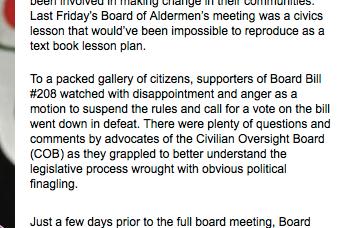
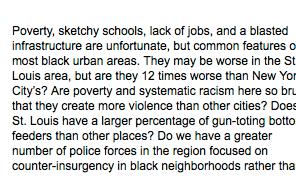
Activity Two — First Impressions: A first impression is the opinion you form about someone when you first see or meet them. Look for photographs in the St. Louis American of people you think would make good friends. Describe why you chose the pictures. Did you choose them because of the words (text) or the photograph?
Learning Standards: I can use the newspaper to locate information. I can identify author’s tone and describe first impressions.
This special Newspaper In Education initiative is made possible, and delivered to classrooms, through The St. Louis American

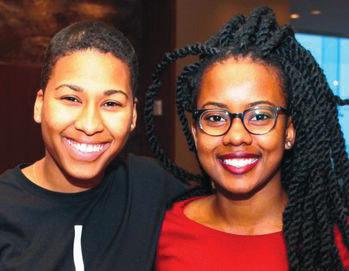

County Council Chairwoman Rita Heard Days and her unwavering loyalty to fellow council member Tim Fitch have been directly challenged under his lawsuit against the County, where Fitch contends that his service on the County Council is not “public service” under the County’s retirement ordinance. Fitch filed his suit last week, arguing that he should be able to access the $254,000 pension he earned through the St. Louis County Police Department. But Fitch’s arguments will undoubtedly impact his strongest Council ally, Chairwoman Days, who ran for County office in order to accrue the remaining handful of months required for her county pension (earned while working as the Democratic director for the County Board of Elections prior to
her termination by disgraced former County Executive and fellow Jane Dueker client Steve Stenger). If Fitch is successful in his legal argument, the legal implication would negate Days’ time accrued during her service on the County Council, leaving Days’ just several months short of her required service time in order to unlock her pension. The County’s Bipartisan Reapportionment Commission members’ lawsuit against the County Board of Elections went to trial on Feb. 1, where the Board of Elections has been accused by two sets of Plaintiffs of failing to timely select a new redrawn district map. The two competing groups of plaintiffs - one comprised of Democratic members of the Commission and the other representing Republican interests - have both argued that the Board missed
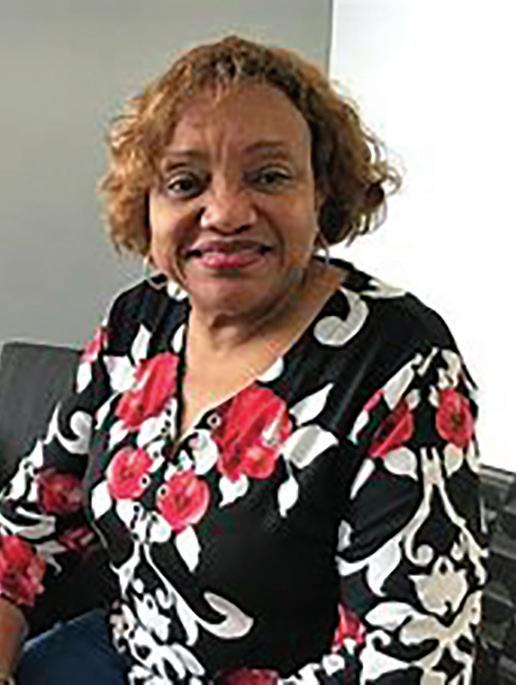
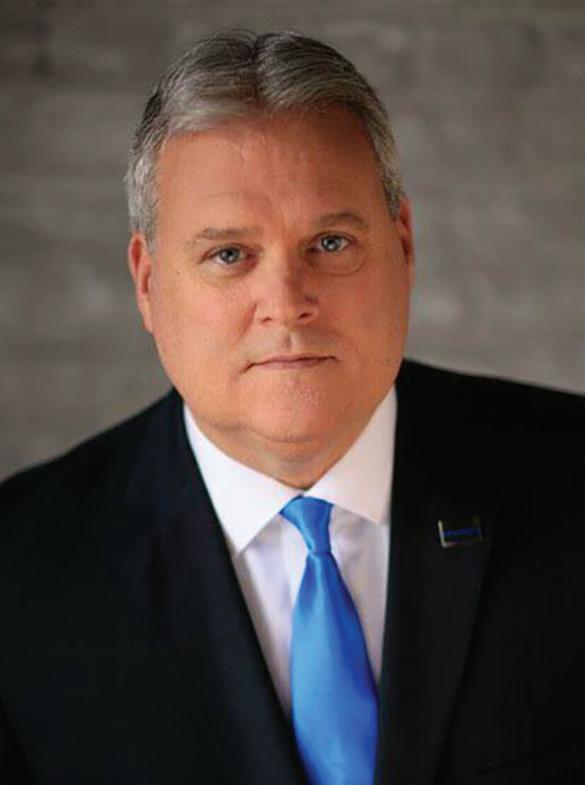
the deadline for the final map and the County Charter does not allow for that deadline to be extended. Democratic members of the Commission are advocating for their proposed map to be adopted; Republican members plus County Council Chairwoman Days and council members Fitch, Mark Harder, and Ernie Trakas want the Republicans’ map to be selected. This is the fifth decade in a row where an agreement has not been reached and a federal judge has had to draw the new County district lines. A decision had not yet been rendered at the time of this writing.
Winter Storm Landon freezes relations between City, homeless advocates
Lack of progress at the St. Louis Board of Aldermen and
legal red-tape delays in allocating federal COVID relief funds have severely hampered the City’s ability to fully meet the needs of the unhoused population following the recent snowfall and below-freezing temperatures. Other alderpersons have joined efforts to block pop-up and 24/7 shelters from opening in their wards, including Aldermen James Page (D-5), Jack Coatar (D-7), and Jeffrey Boyd (D-22). Blocking shelters in their wards also meant blocking the warming buses that shuttle persons from downtown to shelters throughout the city, further undermining efforts to relocate persons to warm, safe spaces.
Before Christmas, Mayor Tishaura Jones’ Administration announced that the City had received nearly $50 million in Low Income Housing Tax Credits (LIHTC) to construct, renovate, and preserve nearly 600 units for low-income households, mostly in North City. Although the City has an additional $8 million funds to allocate for an emergency shelter, intentional encampments, and rapid rehousing, officials have stated that the proposals they have received for these programs have not met all of the requirements under the federal funding. With the Board of Aldermen stalled on
allocating City assistance for the unhoused - especially on Alderwoman Christine Ingrassia’s (D-6) Board Bill 150community organizations and volunteers have stepped up to fill the need where the City has not been able to do so.
“DHS appreciates community members who have come together to help protect our unhoused neighbors and agree that root causes must be addressed to create true systemic change,” Director of Human Services Dr. Yusef Scoggin told the Eye. “We will continue to provide available supplies and consistently share updates with the community as we work to expand our resources and services.”
Scoggin credited funding received through the American Rescue Plan Act (ARPA) for DHS’ ability to open a total of 607 beds, including 125 overflow beds – more than the city had available pre-pandemic.
“The COVID-19 pandemic continues to strain shelter space and availability, and DHS is working as quickly as possible to expand resources and services, including opening a Safe Haven,” Scoggin said. He stated that DHS is working to reopen the bidding process for a 24/7 shelter and to provide support for community organizations seeking federal ARPA funding.
City targets derelict property owners after firefighter’s death
Following the death of St. Louis City fire fighter Benjamin Polson, the City of St. Louis is targeting negligent property owners who have allowed their historic buildings to decay. Polson and another firefighter were buried when the roof of a derelict building collapsed onto them. He was the first firefighter in nearly two decades to die from injuries sustained in the line of duty. In the wake of Polson’s death, St. Louis Fire Chief Dennis Jenkerson announced the creation
of a database of vacant buildings in the City, so fire fighters responding to a call know what they’re facing. The database will include conditions of and around the building, including missing walls, leaning chimneys, decayed floors, and more. Most of the City’s approximate 6,000 vacant buildings are owned by the City itself, under the Land Reutilization Authority (LRA). The second-highest derelict property owner in St. Louis is Paul McKee and his Northside Regeneration corporation.
A recent report indicated that the City’s Preservation Board may consider reviving a littleknown 2014 ordinance called “demolition by neglect,” which allows the Cultural Resources Office (CRO) director to initiate a hearing before the Preservation Board for buildings undergoing “demolition by neglect.” The Preservation Board then votes to pass the CRO director’s complaint to the Building Commissioner’s office, which ultimately can make emergency repairs to stabilize a building and bill the negligent property owner for the work by adding the costs to real estate taxes. The goal of the “demolition by neglect” ordinance is to create a process - due process - to force absentee property owners to either take better care of their historic houses and buildings or sell them to someone who will. Working hand-in-hand with these efforts, the St. Louis Development Corp. committee voted to authorize joint venture Beyond the Bridge to distribute a $15 million seed fund, aiming to boost rehabs and new constructions in North City. Beyond the Bridge includes Park Central Development, a historically Central Corridor-focused corporation; IFF, a community development financial institution; and Smith NMTC Associates, LLC, a local consulting firm that specializes in New Market Tax Credits and has helped to create a plan to finance single-family affordable housing.

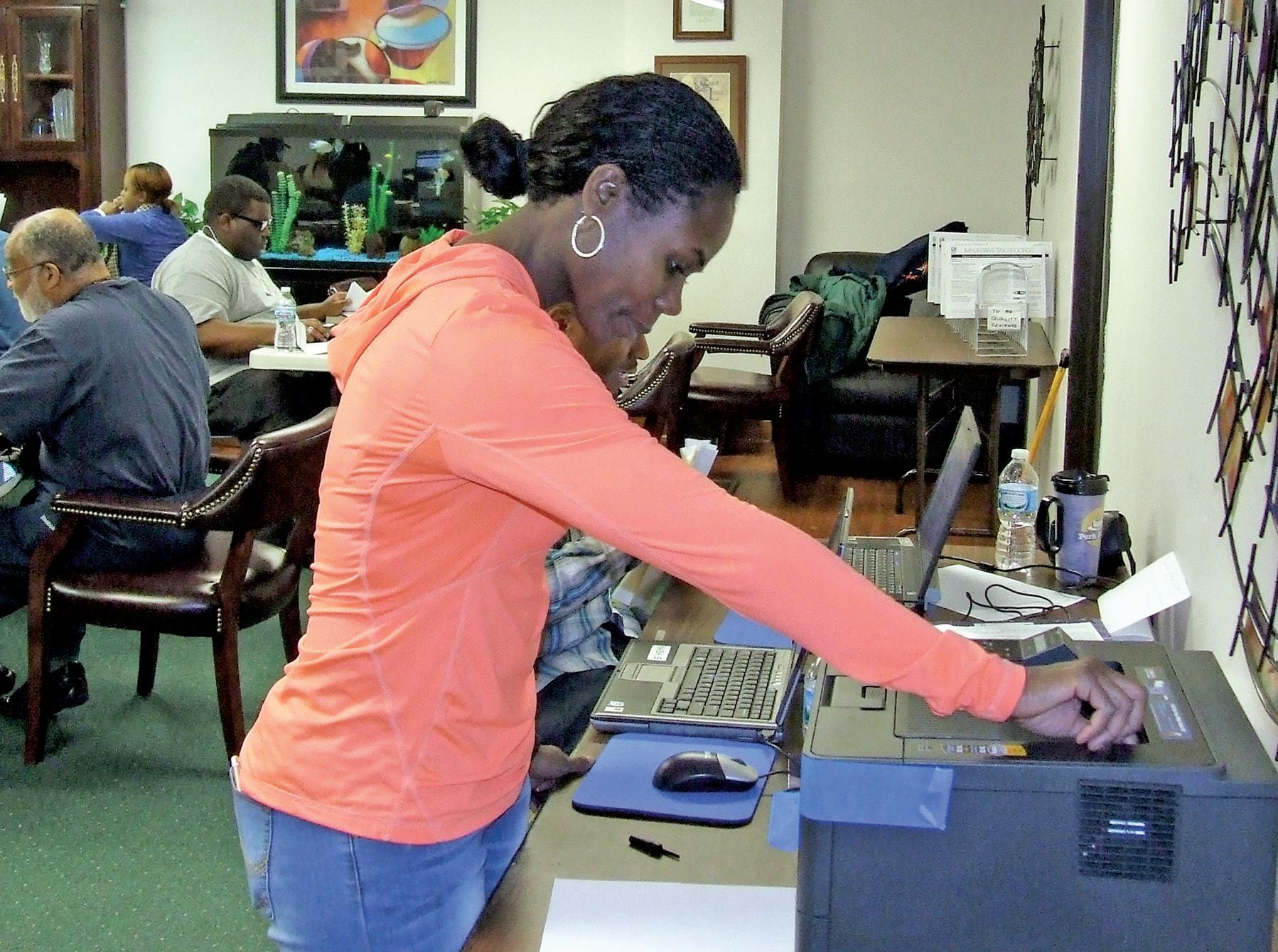
Monica Campbell, a volunteer from Enterprise Bank & Trust, helped file tax returns
By Alvin A. Reid
The St. Louis American
While Earned Income Tax Credits and Child Tax Credits were issued in 2021, taxpayers can still reap additional financial benefits during the current tax season.
Tax filers who qualify can use the Earned Income Tax Credits to reduce taxes owed and potentially increase a refund.
United Way 2-1-1 is partnering with local tax coalitions to provide free tax preparation services to St. Louis-area families with a household income of $58,000 or less in 2021. Its tax coalition partners include Metropolitan St. Louis Community Tax Coalition, Gateway EITC Community Coalition, National Association of Black Accountants – St. Louis Chapter, and St. Louis Tax Assistance Program. The organizations continue raising awareness about the Earned Income Tax Credit (EITC), a federal and Missouri state tax credit that helps off-set tax payments to the IRS for low income working families. The average national EITC
n Centers for Disease Control and Prevention “research has shown that the Earned Income Tax Credit and Child Tax Credit have additional long-term societal benefits, including increasing child-wellbeing, health, and future earnings.”
– Debbie Irvin, United Way of Greater St. Louis
refund in 2021 was $2,461. In 2021, more than 25 million workers and families nationwide received over $62 billion in EITC, according to IRS. This year, tax coalition volunteers will help ensure that local families receive their full Child Tax Credit (CTC) which was increased for 2021 as part of the American Rescue Plan Act.
According to the IRS, 2022 benefits include:
• An expanded child tax credit: Families can claim this credit, even if they received monthly advance payments during the last half of 2021.
• An increased child and dependent care credit: Families who pay for daycare so they can work or look for work can get a tax credit worth up to $4,000 for one qualifying person and $8,000 for two or more qualifying people.
• A more generous earned income tax credit: The American Rescue Plan boosted the EITC for childless workers.
“The Advanced Child Tax Credits have made a real difference for low-income working families with children in the St. Louis region in meeting basic needs during a time of continued financial precarity,” Debbie Irwin, United Way of Greater St. Louis community economic development director, said in a release.
“Increasing the Child Tax Credit and making it fully refundable has helped both low- and moderate-income families increase their income, main-
Seeks input Fed funding use
By Alvin A. Reid
St.
Noble named to Youth In Need board

Youth In Need announced that its board of directors has elected David R. Noble to a three-year term on the board. Noble is the St. Louis market president and director of community economic development for Midland States Bank. Noble earned his BS in organizational studies and MS degrees in urban planning and development from Saint Louis University. He currently holds multiple board positions, including NACEDA Community Development Council, member; Housing Action Illinois, director; St. Louis Equity Fund (SLEFI), director; Investment Committee, Christian Hospital Foundation, vice chair and treasurer; VetBiz, community advisory board; and Community Builders Network, director and treasurer.
teacher nominated for award
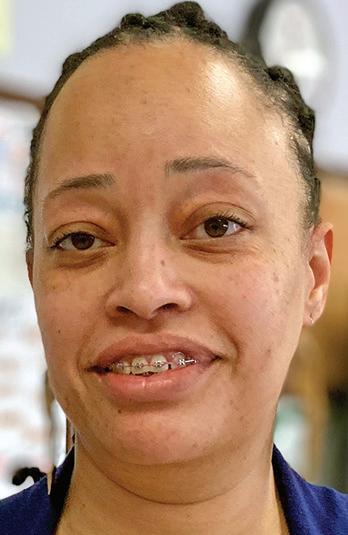
Gwen Logan-Craig, fifth grade teacher at Washington School, has been nominated for the LifeChanger of the Year Award. The annual award recognizes K-12 educators and school employees across the country, celebrating those who are making a significant difference in the lives of students by exemplifying excellence, positive influence, and leadership. Logan-Craig has been teaching since 2016. She got a later start in education, deciding to go back to school to pursue a teaching degree at the age of 30.
Raven Whitener joins The St. Louis American



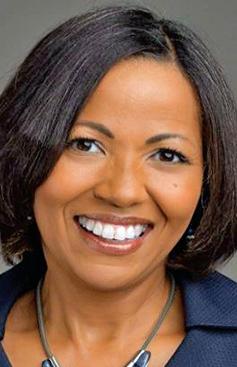
critical that we make sure people and places that have been systematically ignored have a voice in what this investment looks like,” Harris told The St. Louis American “I feel like an [NFL general manager]. The team we have is amazing. I’m trying to bring my own leadership and perspective to the effort.”
The needs of the community are paramount in deciding where financial allocations should be directed, Page said in a release.
appointed chief transformation officer Veta Jeffery, chief diversity officer, and Ethel Byndom, Office of Community
Engagement director to ensure community members have a say. Cal Harris, the county cxecutive’s chief of staff, orchestrated this change, calling the community outreach team “a priority to ensure that the response to the pandemic continues to be an equitable one.” “When it comes to these historic funds, it is
“This newly assembled team has deep roots in the community and brings a tremendous amount of experience to the table. Hearing from our residents on what the needs are in their communities is critical especially as we talk about recovering from this pandemic,” Page said.
“I’m excited to see this new initiative unfold.”
Harris said the team “will bring new energy” to the county’s effort in finding equitable ways to share the federal funding.
Raven Whitener has joined the team of The St. Louis American as director of the St. Louis American Foundation and special events. Most recently Whitener was marketing and events specialist for the United Way of Greater St. Louis as well as working with donor relations/ marketing for its United Young Leaders Group. At the United Way, she planned and managed donor and fundraising events and conferences among her many duties. Prior to the United Way, Whitener served as marketing and promotions coordinator for Urban One/Radio One St. Louis. She has a bachelor of arts degree in media communications, with an emphasis in events planning, as well as a minor degree in public relations, all from Webster University.
“We’re excited about adding Raven to our team,” said Kevin Jones, COO of The American. “We look forward to bringing our Salute events back to in-person events in 2022, and Raven assisting in taking our Foundation to the next level.” Whitener is currently assisting in the creation of a website for The St. Louis American Foundation as well as a variety of other new initiatives.
Promotion, board appointment, new hire,
By Stacy M. Brown NNPA Newswire
The Department of Justice’s Civil Rights Division on Valentine’s Day filed a statement of interest in a private discrimination lawsuit where the homeowners allegedly received an appraisal for nearly $500,000 less than the actual value because they are Black. In 2020, Tenisha TateAustin and Paul Austin, a Black couple in San Francisco, sought to refinance their home mortgage.
Janette Miller, a licensed appraiser, named a defendant in the lawsuit, appraised the couple’s home at $995,000. However, a few weeks later, another appraiser set the home’s value at $1,482,500. They received the second and more significant appraisal after getting a Caucasian friend to pose as Tate-Austin.
The couple said Miller used coded phrases like “Marin City is a distinct area” when she valued the property. They said those comments were related to their race and complained to their mortgage
Continued from B1
tain their housing, and invest in their children,” she said, adding Centers for Disease Control and Prevention
lender. For the second appraisal, they hid photos and artwork with distinguishing African American characteristics and replaced them with those belonging to their white friend.
“We had a conversation with one of our white friends, and she said, ‘No problem. I’ll be Tenisha,” TateAustin told reporters last month. “I’ll bring over some pictures of my family.’ She made our home look like it belonged to her.” The couple filed a fair housing discrimination lawsuit against Miller and her company, Miller and Perotti Real Estate Appraisers, Inc., and AMC Links, LLC. Miller and her company have filed a motion to dismiss the case, claiming that the couple failed to state a claim upon which a court could grant relief.
“The United States respectfully submits [our] statement to provide an overview of the FHA and to address two questions of law raised in the defendants’ motion,” the DOJ said in a
statement.
“The defendants assert that the FHA does not apply to residential appraisers. The statute’s text and caselaw make clear that it does. Second, the defendants lay out the elements of a prima facie case and argue that the plaintiffs have failed to allege these elements,” the DOJ stated.
“But the plaintiffs need not allege facts that make out a prima facie case at this stage. The act simply requires that the plaintiffs allege a plausible entitlement to relief as a result of the defendants’ ‘discriminatory housing practices.”
Austin said he and Tate-Austin researched the market well and upgraded their home before the first appraisal.
“We did our homework,” Austin told the Reparations Task Force in a panel on the racial wealth gap in October. “We believe the white lady wanted to devalue our property because we are in a Black neighborhood, and the home belonged to a Black family.”
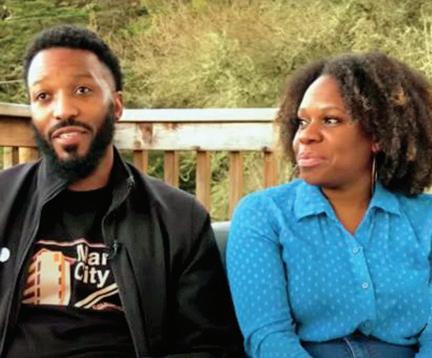
“research has shown that the Earned Income Tax Credit and Child Tax Credit have additional long-term societal benefits, including increasing child-wellbeing, health, and future earnings.”
Local residents can dial 2-1-1 or visit 211helps.org to find a nearby preparation site, make an appointment, or get additional information.
A limited number of sites are offering walk-in service, however most appointments need to be scheduled in advance.

“We are grateful to continue offering free income tax preparation services in light of the financial challenges the ongoing COVID-19 pandemic has created for families in the St. Louis region,” said Irwin.
“By offering free tax preparation services, families save money on costly tax preparation fees. Trained volunteers also work to make sure families receive all of the tax credits they qualify for, which helps boost income so families can pay
Continued from B1
“We know that this pandemic disproportionately impacted African-Americans and we want to make sure those hit the hardest by the virus have a say in how we recover and build an even better St. Louis County,” Harris said.
“While we have had conversations with commu-
bills, get out of debt and save for the future.”
What you need to bring
• All W-2s and 1099s
• Social Security Cards or Individual
Taxpayer Identification Numbers (ITIN) for all family members
• Valid picture ID for taxpayer and spouse (Driver’s License, State ID, Passport)
• If married and filing jointly, both spouses must be present to sign
• Copy of 2020 tax return. Also bring a copy of 2019 tax return if claiming EITC or Advanced Child Tax Credit. You may be
nity groups, nonprofits and municipal leaders throughout the pandemic response, we know we can improve on our engagement and that’s what we plan to do.”
Harris said dates and locations of public conversations should be released in the coming week.
Before joining Page’s staff, Lewis was vice president of FPM Communications, directing over $70 million in communications projects for clients including former
able to claim a higher amount for 2021.
• 1098 or real estate tax receipt
• Proof of unemployment compensation
• A copy of a voided check or bank account and routing numbers for direct deposit
• Proof of child care expenses
• Parcel number (Illinois homeowners only)
• Form 1095-A: proof of health insurance from the marketplace
What the service will prepare
• Form 1040
• With schedule B, C ($25,000 limit), EIC & R • Form 1040 – V • Form 1040 – ES
President Barack Obama’s presidential campaign.
She previously served as vice president of human resources for People’s Health Centers, as a consultant at Gateway Management Group, and director of human resources and diversity for Office Depot.
Jeffery was a senior vice president of community and economic development for Midwest BankCentre, and Community Development Specialist for the State of
Form 2441 (Child and dependent care credit) • Form 8863 (Education credits)
• Form 8812 (Additional child tax credit)
United Way’s St. Louis region tax coalition partnership filed more than 17,000 tax returns in 2021, helping low- and middle-income families receive more than $22 million in tax refunds. Over 500 IRS certified volunteers contributed over 37,000 hours to provide free tax preparation services for people across the region.
Missouri. Byndom is familiar with county service, working with community engagement for the county since 2015. She has been the county’s census coordinator and worked for the State of Missouri from 2005-2013.
“We will be announcing initiatives in the coming weeks to capture more voices in these discussions,” Page said.


By Earl Austin Jr.
COVID-19 has cost East St. Louis two chances to defend its 2019 Illinois Class 3A state championship.
Two years have passed since the spectacular Terrence Hargrove, Jr., led the Flyers over Chicago Curie in a thrilling overtime contest for the state crown. The state tournament was cancelled in 2020, and Illinois schools played a limited schedule without a postseason in 2021.
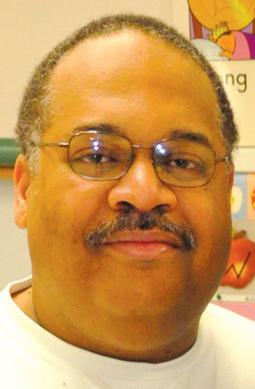
The current edition of the Flyers is primed to defend the state title. With three games left in the regular season, the Flyers are 21-5 and riding high. East St. Louis pulled off one of the biggest wins of the year last Saturday, upending visiting Vashon 65-56 in the annual Border War rivalry game.
The Flyers boast one of the most potent dynamic duos in the St. Louis metro area in 6’6” junior forward Macaleab Rich and 6’5” senior point guard Christian Jones.
Rich is a dynamic athlete with guard skills, and he can cause big matchup problems. He is averaging 19 points and 10 rebounds a game and contributed 20 points and 12 rebounds in the Vashon showdown. Jones, a long and slender point guard, has already committed to the University of Missouri. He is averaging 15 points, five rebounds and seven assists a game and garnered 22 points, six rebounds and six assists against Vashon. Providing size and strength up front for the Flyers is 6›8» junior forward Demarion Brown, who averages eight points and five rebounds a game. He had 12 points and seven rebounds against Vashon. Senior guard Daveon Hawkins and juniors Mackenly Falconer and Terrell Scott provide more depth in the Flyers’ backcourt.
East St. Louis has already received a top seed in the upcoming postseason at the Highland Sub-Sectional.
DeAndre Smith headed to NFL
St. Louisan DeAndre Smith has been a fixture as a college football player and coach for more than 20 years. Now, the University City native is headed to the National Football League after being tabbed as running backs coach for the New York Giants.
There were few Black coaches in the St. Louis area when I was in high school in the late 1970s, and those Kirkwood did compete against were in the city’s Public High League. With all due respect to Floyd Irons at Vashon, my favorite back in the day was Marvin Neals at Soldan. He was tall, lean, and in total control of the basketball program he took over in 1974. He commanded respect, and his players were disciplined and smart on the court. He turned the Tigers around in a few years and won the Missouri Class 4A title in 1981. I distinctly remember Neals and his team handing the 1977 Pioneers a heartbreaking loss in the Normandy Christmas Tournament on an offensive rebound basket as the buzzer sounded. After Soldan fans stormed the court, led by Alan Horton, son of the late Richard “Onion” Horton, we could hear Neal later letting his team know its

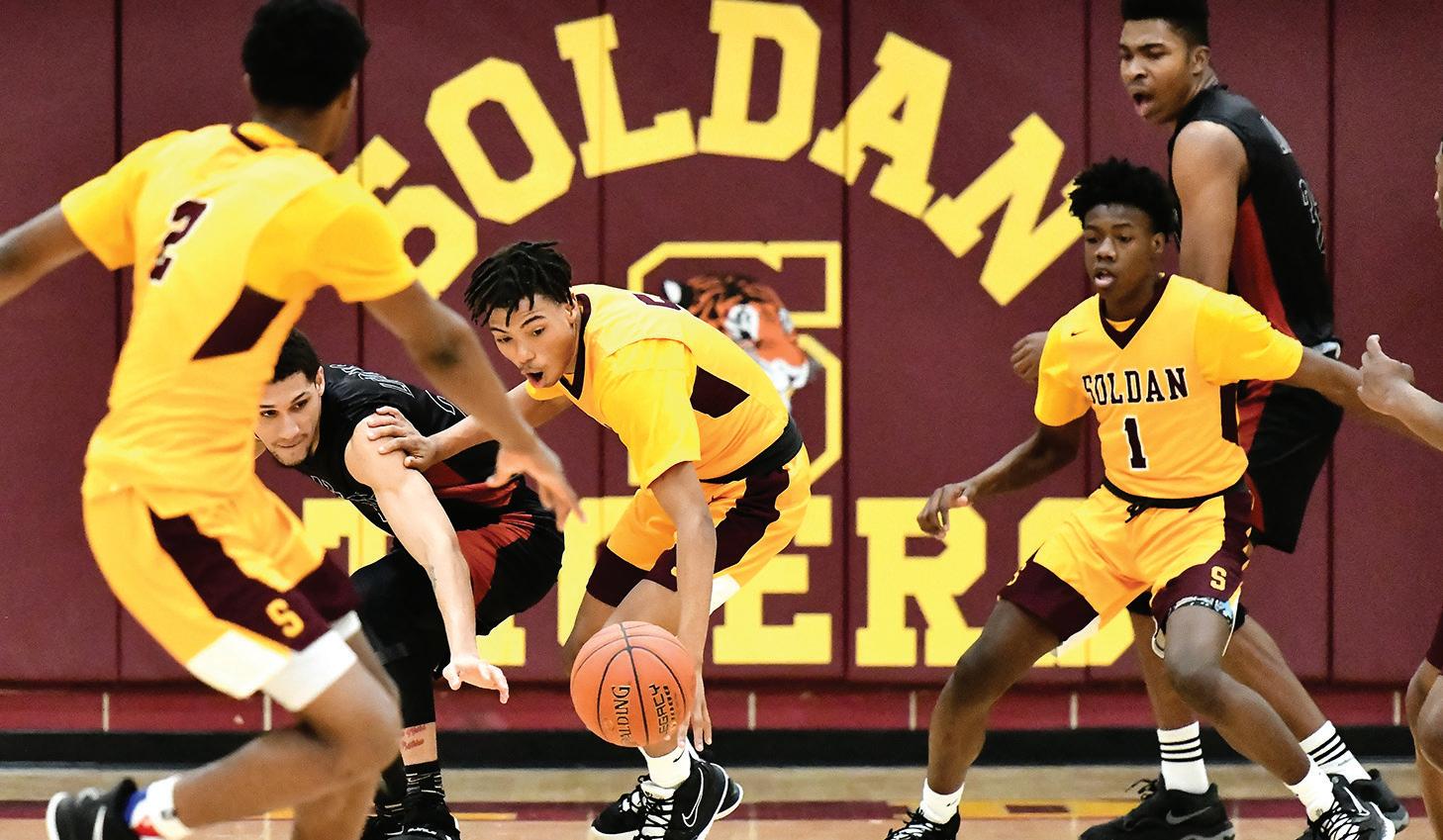
Smith received the call over the weekend from new Giants’ head coach Brian Daboll. Smith spent the past three seasons in a similar position at Texas Tech University.
Smith had a standout prep career at both University City and Berkeley High in the mid1980s. He went on to star at Missouri State University, where he is a member of the school’s athletic Hall of Fame. He was a starting quarterback for the Bears, who won the Gateway Conference championship in 1989 and 1990 and advanced to the NCAA Division I-AA playoffs.
During his coaching career, Smith made stops in Illinois, Syracuse, New Mexico, UNLV, Miami of Ohio, and Northern Illinois.
Francis Howell wins GAC South
Former McCluer High basketball standout Grant Agbo has enjoyed quite a debut season as the head coach of the Francis Howell Vikings. Agbo has guided the Vikings to a 15-7 record and another Gateway Athletic Conference South championship.
The Vikings clinched the title with a thrilling 67-66 victory over visiting Troy last Friday night. Howell FEBRUARY 17 – 23, 2022
rallied from a 15-point deficit to pull off the victory and improved their conference record to 8-0 and continue its stranglehold on the conference.
Senior guard Gabe James provided the lategame heroics with a 3-pointer from the corner in the closing seconds for the win. The 6›1» senior guard is averaging 15 points, three assists and three steals a game while shooting 42 percent from 3-point range. Fellow senior guard Booker Simmons is averaging 11.9 points and 4.6 rebounds while junior point guard Dwight Lomax is averaging 10 points a game.
High School highlights
• Senior guard Brian Taylor of DeSmet scored his 1,000th career point on Saturday at CBC. The 6’4” Taylor is having a big senior year, averaging 19 points a game.
• Sophomore center John Bol of CBC had a big triple-double in a victory over DeSmet last Saturday. The 7’2” Bol had 10 points, 13 rebounds and 11 blocked shots. He has already received numerous Division I scholarship offers.
With Alvin A. Reid
• Junior guard Raychel Jones of Vashon also joined the “Triple-Double Club” last week when she had 38 points, 16 rebounds and 11 blocks in a victory over Gateway STEM.
• Freshman girls sensation Jordan Speiser of Lutheran-St. Charles scored 49 points and made 11 of her 13 attempts from 3-point range in the Cougars victory over Ellington at the Missouri Hall of Fame Classic in Cape Girardeau last Saturday. The 6’0” guard is leading the St. Louis metro area in scoring.
• Junior guard Shakara McCline of East St. Louis had 26 points, 13 rebounds, five assists and five steals in the Flyerettes’ 52-46 come-from-behind victory over Life for Life.
Games on tap
The Big Game: Westminster at Vashon, Saturday, 3 p.m. - This is a rematch of last year’s Class 4 state championship game. Vashon is currently 18-3 while Westminster is 21-1. Chaminade at CBC, Friday, 6 p.m. DeSmet at SLUH, Friday, noon Eureka at Webster Groves (girls), Friday, 6 p.m.
performance was not worthy of celebrating. Here are some other notes of interest about this fantastic coach and gentleman. Neals played three sports at Sumner High School. He was a first baseman in baseball, an end in football, and a forward in basketball. In 1960, he received All-Conference honors in basketball and honorable mention in football.
Alvin A. Reid
Neals received an academic and athletic scholarship to play basketball at Fisk College. He came back to St. Louis, played for, and graduated from Harris Teachers College. He finished his collegiate career as the school’s leading scorer, averaging 25 points. Before entering coaching, Neals played a season with Goose Tatum’s famous Harlem Road Kings. Neals was honored before a Soldan game on Feb. 12, and there isn’t a present or former coach more deserving.
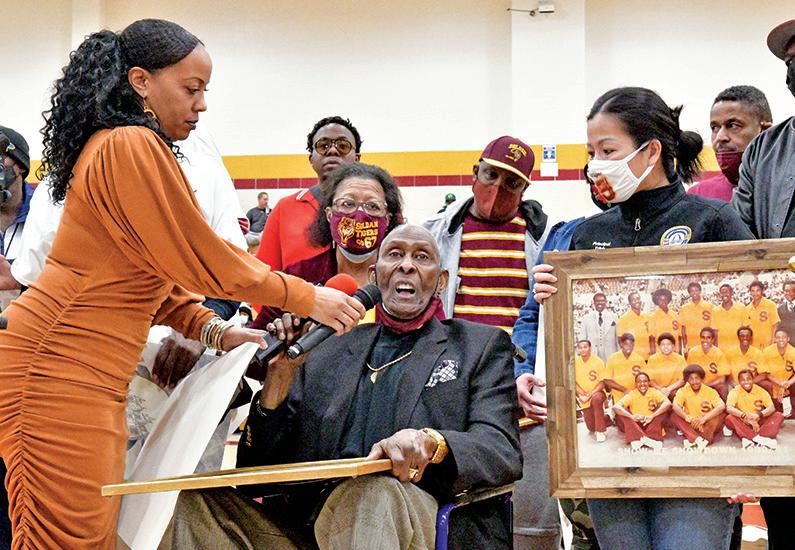
Sorry, St. Louis. L.A. Rams owner Stan Kroenke raised the Super Bowl trophy after his team topped the upstart Cincinnati Bengals 23-20. I’m interested in how well the game did in this region on television…Let us never forget Aaron Donald is a St. Louis
Ram. The former Pittsburgh defensive tackle was drafted 13th overall by the Rams in the 2014 NFL draft, before the franchise darted to L.A. A certain first-ballot Pro Football Hall of Famer, Donald is proof former coach Jeff Fisher was not a complete failure as Rams coach… Rams receiver Cooper Kupp took over the game in the fourth quarter. He
finished with eight catches for 92 yards and two touchdowns, including the Rams’ go-ahead score with less than two minutes left. He was named the game’s MVP, but my vote would have gone to Donald… Raheem Morris, Rams defensive coordinator, did a skilled job of containing Bengals quarterback Joe Burrow and his much-ballyhooed offense. Burrow was sacked a Super Bowl record tying seven times and Morris’ defense made two critical fourth-down stands near midfield. One in the first quarter led to the Rams’ first touchdown and one late in the fourth quarter sealed the victory. Morris was fired after three seasons as Tampa Bay head coach in 2012. Hopefully, he will get another shot… The NFL avoided controversy with the Rams’ victory. If the Bengals prevailed, the referees missing the “grab Jalen Ramsey’s face mask, spin him around, catch ball and score touchdown” move by Tee Higgins would be overshadowing the game… Referee Robert Torbert, one of three Black referees
to supervise a Super Bowl crew, said after the game Higgins didn’t grab and twist Ramsey’s face mask. Huh? Torbert is a Harvard Law School graduate and former attorney. He’s smart enough to know what the NFL wanted him to say, regardless of how ridiculous…Somebody lost a $1 million wager at the DraftKings Sportsbook at Casino Queen in East St. Louis. The parlay bet would have paid if the Bengals won the game, and the total points scored was under 48.5. Wrong on the team, right on the score. Out of $1 million…With the victory, the Rams franchise became the third in NFL history to win a Super Bowl in different home cities. The Colts (Baltimore, Indianapolis) and Raiders (Oakland, L.A.) are the other two…Maybe it’s age, maybe it’s the fact I’ve never been a fan of the genre, but the halftime show left me bewildered. The Southern University Marching Band performed at halftime of Super Bowl IV in New Orleans. Take note, NFL.
FOCUS St. Louis announced June McAllister Fowler as the recipient of the 2022 FOCUS Leadership Award. Fowler recently retired as senior vice president of communications, marketing and public affairs for BJC HealthCare and is an active volunteer leader in the St. Louis community. This prestigious award, chosen by the FOCUS Board of Directors, is given annually to individuals who
demonstrate committed leadership, generate a meaningful impact in the community, and encourage strong community engagement in others. The award will be presented at the 25th Annual What’s Right with the Region celebration on Thursday, May 12, at Sheldon Concert Hall.
“As a region, we are fortunate to have leaders like June McAllister Fowler in our midst,” said Amy Shaw, board chair for FOCUS St.
Louis. “For her, service is not a position or a title but simply a way of life, and her impact can be felt throughout our community.”
Fowler’s career at BJC Healthcare spans 18 years, expanding over time to include executive leadership of BJC brand marketing, government relations, community health, employee
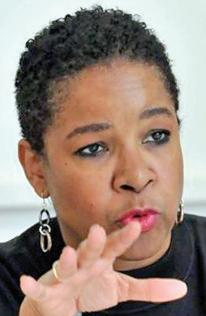
June McAllister Fowler
According to a recent report by JobSage, St. Louis was named the top city for entrepreneurs of color.
JobSage compiled its list of top cities by comparing several factors using data from the United States Census Bureau’s Annual Business Survey:
•Percentage of startups (businesses less than two years old) in the metro that are minority-owned
•Total number of minorityowned startups
•Total number of employees at minority-owned startups
•Minority-owned startup parity index, which compares
the representation of business ownership to the overall minority population share
•Annual sales at minorityowned startups
JobSage also considered resources and support available to minority entrepreneurs. The Gateway to the West is home to diverse business owners across industries like real estate, tech, fashion, food service, retail, and more.
St. Louis has one of the highest rankings on JobSage’s parity index, meaning that the city’s minority population is proportionally represented in business ownership. Though
minority groups only make up 26.3% of the city’s population, 25% of startups are minorityowned.
Programs such as the St. Louis Diverse Business Accelerator help ethnically and racially diverse business owners in the Greater St. Louis area grow their business and succeed.
St. Louis quick stats
• Percentage of startups that are minority-owned: 25.03%
• Annual sales at minority-owned startups:
$193,558,000
• Total number of minority-owned startups: 2,279
wellness and community benefit for one of the largest nonprofit health care organizations in the U.S. While there, she was instrumental in numerous regional partnership projects such as the Kingshighway/Forest Park interchange, Cortex corridor redevelopment and the new Central West End Metro Station. Most
recently, she has helped establish BJC’s inaugural Office of Community Health Improvement. Fowler began her career as an urban planner with St. Louis County government, ultimately serving as director of the Department of Planning. Fowler currently serves as board chair for Cortex Innovation Community and KIPP St. Louis, board secretary for The Muny, and on the board of St. Louis
International Airport. She is also the inaugural chair for the recently established community development nonprofit of her church. Fowler is a past board chair of Girl Scouts of Eastern Missouri, Citizens for Modern Transit and the Metropolitan Association for Philanthropy, as well as a graduate of the FOCUS St. Louis Leadership St. Louis and Women In Leadership programs.

Mayor Tishaura O. Jones, through the Biden-Harris Administration’s House America initiative to reduce the negative impacts of homelessness, has committed to re-housing 800 persons and building 500 new units of
affordable housing by Dec. 31, 2022. Mayor Jones previously announced her intent to join House America with U.S. Department of Housing and Urban Development (HUD) Secretary Marcia L. Fudge, chair of the U.S. Interagency
Council on Homelessness (USICH), at the House America virtual launch event in September 2021.
“Through the American Rescue Plan, St. Louis has committed a historic $20 million towards affordable

housing and services for working families across the city,” said Jones. $20 million in American Rescue Plan (ARP) funding will go towards affordable housing construction and services for residents. During
House America’s launch, Mayor Jones stated that the City of St. Louis through the ARP, received directly from HUD, 160 emergency housing vouchers and $10 million in HOME Investment Partnerships grants to help more residents
obtain the safety of a stable home. Beyond funding from HUD, St. Louis also received nearly $50 million in Low Income Housing Tax Credits (LIHTC) to construct almost 600 new units of affordable housing throughout the city.



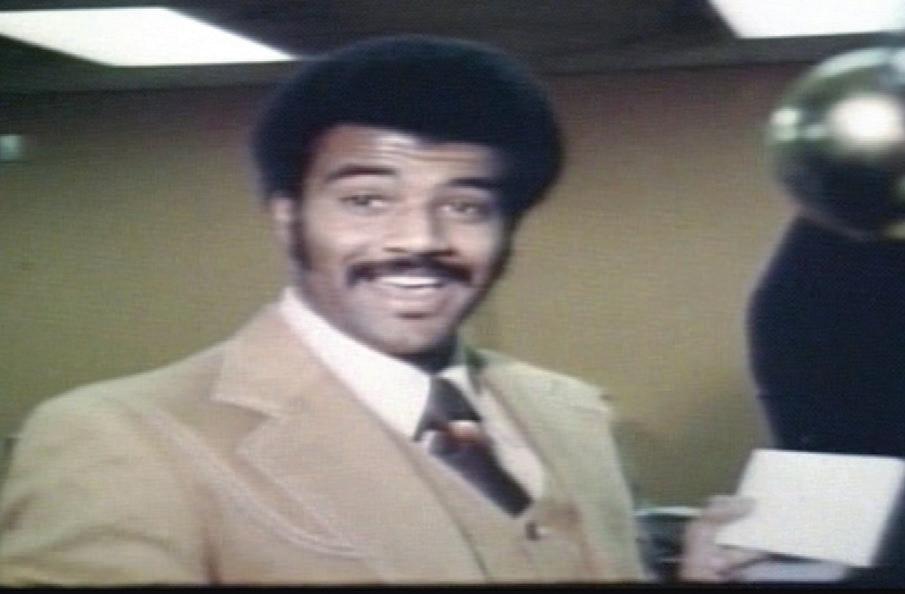
By Art Holliday KSDK-TV News Director
From “Eyewitness News,” to “NewsChannel
5,” to “5 On Your Side,” KSDK-TV has been a significant source of news, information, weather, and sports for 75 years and counting.
KSD-TV signed on for the first time February 8, 1947, the 13th television station to sign on in the U.S. and the first television station in Missouri. Happy 75th!
It’s one of the TV stations I grew up watching as a child and beginning in 1979, KSD became my professional home as a weekend sportscaster for the next 10 years. It was the same year the station’s call letters were modified to KSDK to satisfy FCC regulation. I turned down a job in Tampa to come home, where I completely underestimated how much enjoyment my TV career would give my late parents, Austin and Cleo. In August 1989, my career took a complete
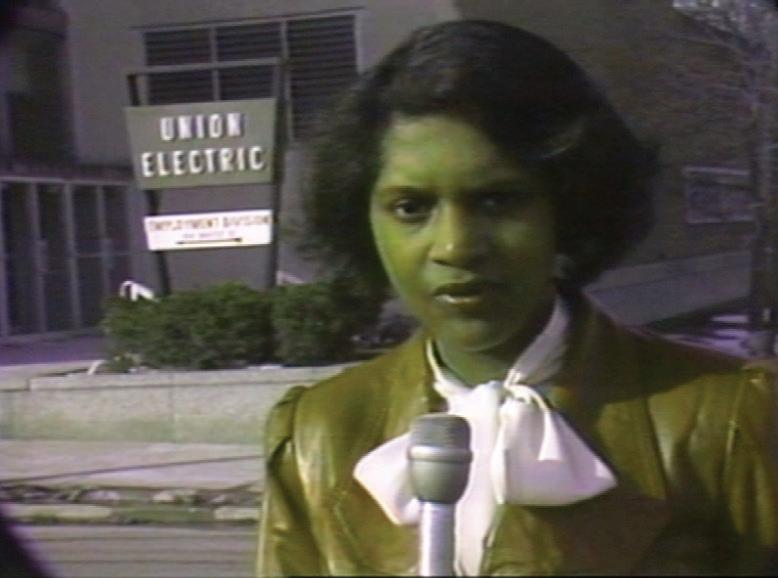
left turn when my general manager Bill Bolster suggested I become an early morning newscaster on “Today in St. Louis” with co-anchor Jennifer Blome. I loved being a sportscaster covering my hometown teams, but I was afraid to say no to my boss. It turns out Bolster had incredible instincts because Jennifer and I became one of the longest anchor pairing in local U.S. television history, 22 years. In 2022, I’m in my second year as news director at 5 On Your Side, the first Black TV news director for any of the main three television stations in St. Louis. That’s the latest reason I have such appreciation for the history of KSDK, especially the station’s Black history. I stand on the shoulders of local broadcasting legends Dianne White and Julius Hunter. I saw White and Hunter succeed at KSD in the 1960s, and even though I was years away from choosing TV news as a career, they made a significant impression on a future broadcaster for a simple reason; they were
By Kennedy Kalvoda Northwest Missourian
As Black History Month continues, people are called reflect on and discuss Black history in the U.S. and around the world. An advocate for discussing and honoring Black history on campus is the Northwest Missouri State University Black Student Union. Northwest’s BSU had its first official meeting in January 2019, and was called the Alliance of Black Collegians. There had been students calling for Northwest to implement a BSU on campus as early as 2016. Since its inception, a
goal of the organization has been making Black students feel more comfortable on campus.
BSU President Sherry Harper said, “Black history is our history,” and that people from other backgrounds need to learn more about it than just the basics. She said this can be done by taking more educational avenues besides the general ones that are offered by the University, such as African World and other history classes.
“I really think that Black History Month, especially for Black organizations who are passionate about our Black history and our Black culture,

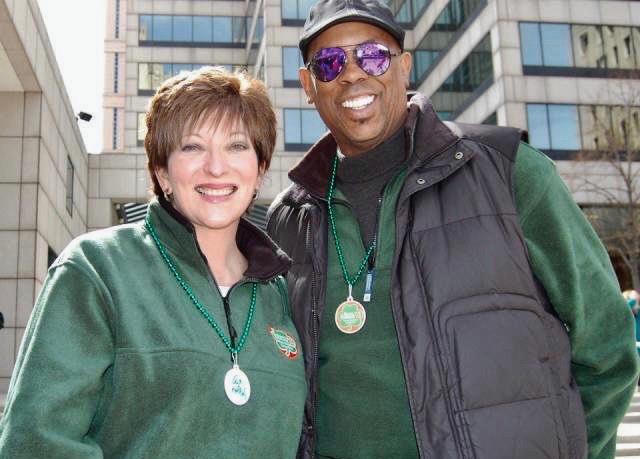
excellent at their jobs and they looked like me.
Long before she became a mentor, Dianne White was shattering the glass ceiling at KSDTV. When she went on the air in September 1962, she was the first Black weathercaster in the nation. Dianne remained the only African American on television news in St. Louis for nearly three years. In my early years as a young sportscaster at KSD, she gave advice and became a friend. Julius Hunter’s Hall of Fame career included eight years at KSD -- 1966 to 1974 -- before moving to the competition at KMOV. When the University of Missouri insisted I declare a major my sophomore year, I couldn’t help but think of White and Hunter. They became excellent broadcasters, so maybe I could, too.
With White and Hunter blazing their trails, Black anchors and reporters played key roles in
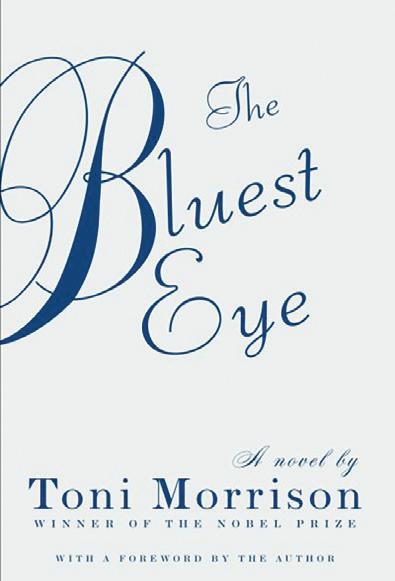
By Nadia Reese The Afro

Recently, schools across the country have begun banning books on topics such as religion, “witchcraft,” sexuality, police brutality and racism from the classroom and pulling them from school libraries. It is no surprise that most of the books that made the banned book list are written by Black authors and focus on topics relating to issues and experiences within the Black community.
The Color Purple
“The Color Purple” by Alice Walker is a novel set in 1900s Georgia and is narrated by Celie, the main character and protagonist as she details her experiences with her family including her mother, her abusive father and her sister Nettie. Though the story teaches women that they can be resilient in any situation with support from other women, the book was pulled from the shelves due to homosexuality, violence and explicit language. Between 1984 and 2013, the book was banned from school libraries across the United States. Then, Texas State Prisons banned the book for profanity and violence in 2017.
The Bluest Eye
“The Bluest Eye” was written by award-winning author Toni Morrison in 1970. The novel takes place between 1940 and 1941 in Lorain, Ohio, which is also Morrison’s hometown. Bluest Eye tells the story of a girl named Pecola Breedlove, who comes from a family considered to be troubled, unhappy and ugly due to the color of their skin. Many of the characters in the novel are Black or of Mixed ancestry who long to be White. Though this novel was banned due to
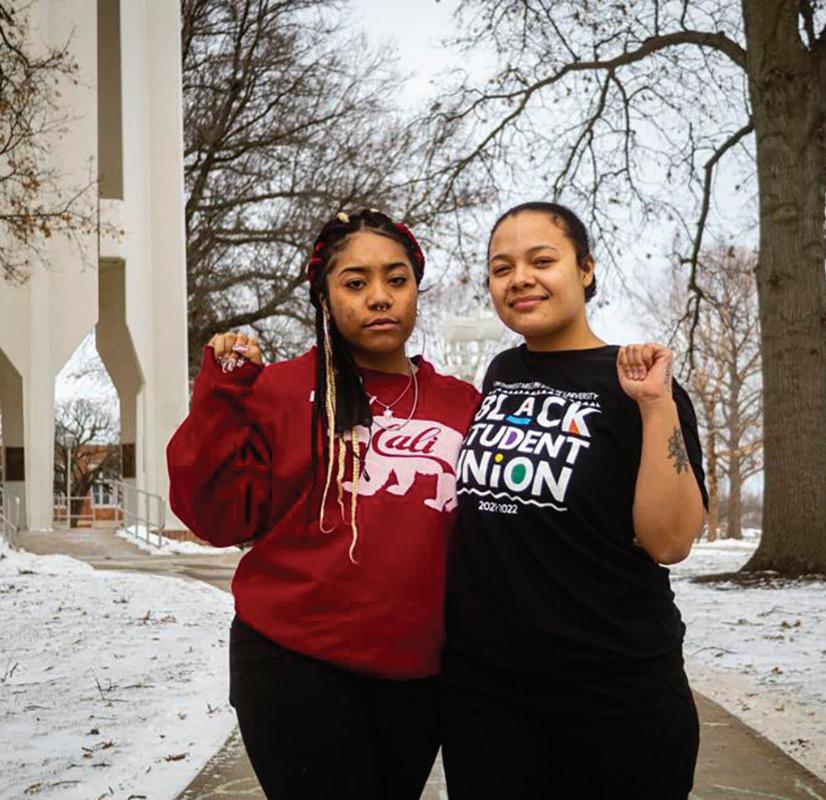



Owner, Butter Love Skin
2022 UMSL DE&I Accelerator Finalist
“Seven years ago, I made a conscious commitment to love myself more by nourishing my mind, my body, and my skin. I started mixing oils and butters together and I began to see real results, growing more con dent and self-assured. Through my journey and experience, Butter Love was born. I have been able to help thousands of people feel good about their skin.”
Each UMSL DE&I Accelerator finalist receives a $50,000 grant to participate in an eight-week mentoring and business development program, as well as in-kind resources valued at approximately $200,000. Ameren partnered with UMSL to launch the inaugural program in 2020 and is pleased to continue its sponsorship and commitment in 2022.


At Ameren, we value each person’s talents, perspectives, opinions and experiences. We stand with those who speak up and speak out – peacefully, yet strongly – against all forms of injustice.


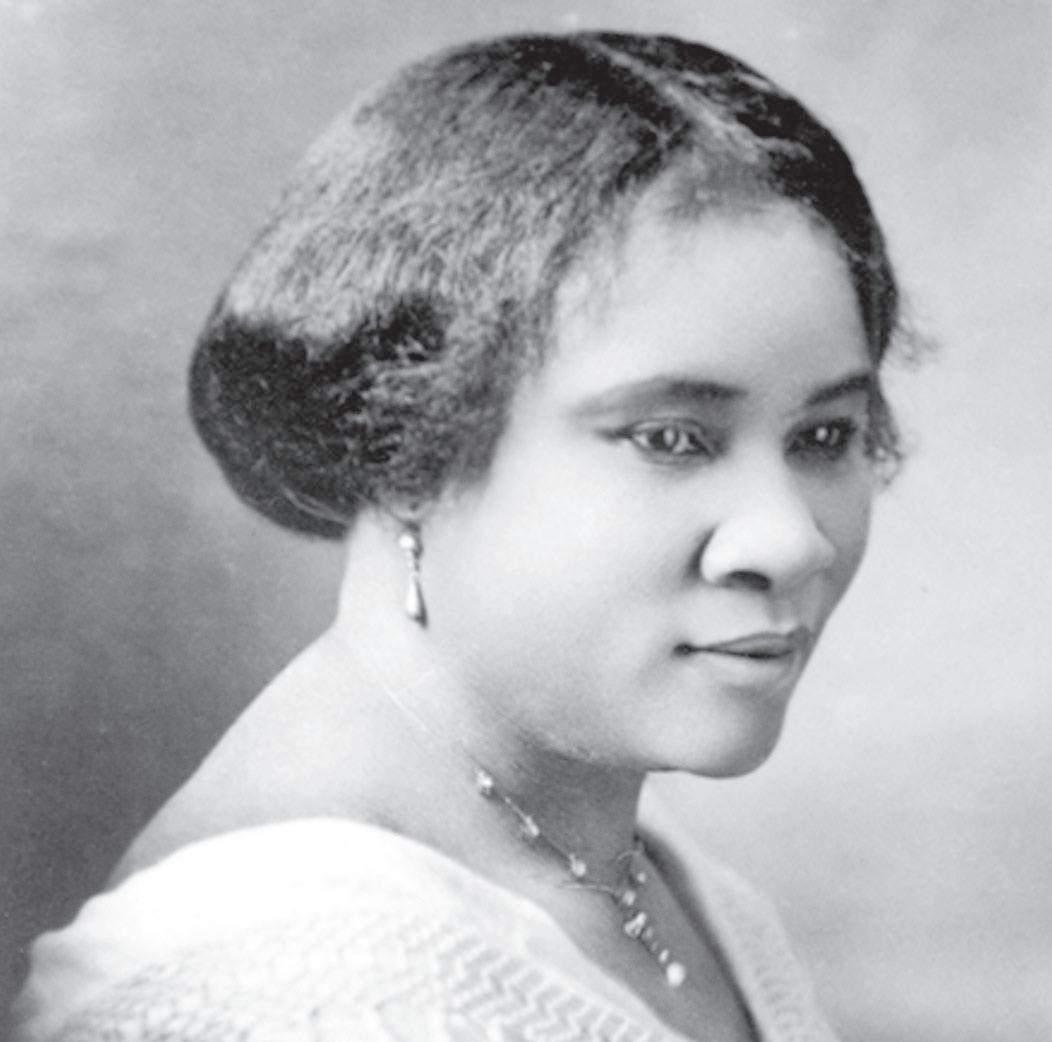
1919)












“I GOT MY START BY GIVING MYSELF A START.”
Born Sarah Breedlove, Madam C.J. Walker was an African American entrepreneur, philanthropist, and political and social activist. She pioneered the modern black haircare and cosmetics industry, eventually becoming the first Black American woman to be a self-made millionaire.
Continued from C1
the success of KSDK news coverage, decade after decade. Stan Stovall was once the nation’s youngest TV news anchor at the age of 18 in Phoenix. By 1985, he won a “Best Newscaster” Emmy Award during his stint at KSDK. Stovall currently works in Baltimore. Huel Perkins succeeded Stovall as main news co-anchor from 1986 to 1989, and currently works in Detroit.
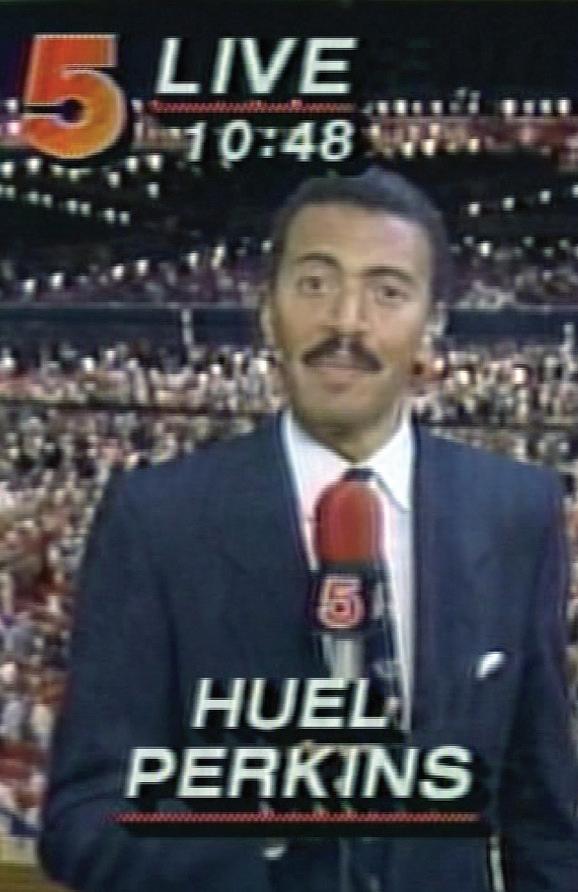
Weathercasters of note include WNBC’s Janice Huff, who began working at KSDK in 1987. I worked with Janice on “Today in St. Louis” for a year before she began her professional climb to New York. Prior to becoming a fixture on the Weather Channel, Paul Goodloe worked at KSDK in the late 1990s. During my four decades at KSDK, colleagues have included current 5 p.m. anchor Kelly Jackson, former “Show Me St. Louis” anchor Debbye Turner, Fox News reporter Christina
town on the edge of Missouri where the political environment is not always rooting for us, I feel like it is ridiculously important,” she said.
it’s an opportunity for us to not only educate ourselves but to educate the rest of our campus on how great our culture really is,” Harper, who hails from Aurora, Colorado, said. Northwest’s BSU has come far since its beginning. There has been a steady increase in the organization’s numbers, and the organization has increased meetings from biweekly to weekly.
Harper also said in the most recent years, there has been more participation from other people of color and white students, and students that are not Black feel more comfortable attending the meetings.
Harper said that BSU is a vessel for change, especially considering the location of the University.
“I think that, especially at a predominantly white institution, at a campus in a Republican
“Especially while going into adulthood and learning who you are and trying to figure life out, that you have somewhere to go where you feel safe. And so, I think that’s what the Black Student Union is for me.”
BSU Secretary Asmina Conn, a Kansas City native, decided to step up and take on a leadership role in the organization.
“Being that this is a predominantly white institution, and the Black community is so small, I felt it was my duty and obligation to be a leader on campus and to promote diversity, equity and inclusion,” Conn said.
“I want this to be a safe space not only for the Black community but also for the rest of the students that attend here.”
She said it’s important for people to know Black culture in order to destigmatize the com-
Coleman, sportscaster Malcolm Briggs, education reporter Sharon Stevens, reporter Cynthia Todd, WUSA reporter John Henry, MLB Network broadcaster Fran Charles, and NBC News reporter Steve Patterson, to name a successful few.
Everyone at 5 On Your Side is taking a moment right now to look back at a 75-year legacy of serving St. Louis. To be one of the oldest stations in the country is significant. Happy birthday, KSDK!
munity and get rid of stereotypes.
“I think it’s important for groups like Black Student Union to be founded and accessible at different universities. That way, those of other backgrounds and cultures can come out and get to understand us better and try to change the stigma,” Conn said.
Conn said what makes Black Student Union unique from other organizations on campus is that because of the small size they have become very tight knit, and members of the organization are like a family. They look out for each other and give each other help and support.
“It’s an opportunity to create a safe space to inspire, to help develop and mold people,” Conn said.
“It’s about spreading love and awareness and all-around contributing to a good cause. There’s no one right answer. It’s just all-around a great opportunity not only for people who are African American, but for everyone.”

Courtesy of the Missouri Historical Society
Every February, communities across America come together to explore, learn, and celebrate influential African Americans like Harriet Tubman, Muhammad Ali, Ella Fitzgerald, and Dr. Martin Luther King Jr. This celebration hasn’t always been the norm, however. The roots of Black History Month go back to 1915, when Carter G. Woodson, a Harvard professor, and Jesse E. Moorland, a minister, founded the Association for the Study of Negro Life and History (what is now called the Association for the Study of African American Life and History, or the ASALH).
In a time when Jim Crow—a series of laws severely restricting the rights of African Americans—reigned supreme, the ASALH challenged the prevailing racism and encouraged scholarly research of African American history with an academic journal and other pub-
lications. As part of its work, the ASALH first sponsored a Negro History Week in 1926. The week fell in line between the birthdays of Abraham Lincoln and Frederick Douglass, celebrating two individuals who had worked to expand African American rights. It wasn’t until 1976 that the US government officially recognized a full Black History Month.
St. Louisans first experienced Negro History Week in 1927 thanks to the work of Herman Dreer and several influential educators. Dreer had moved to St. Louis in 1914 to teach at Sumner High School, a premier African American high school of its time. When he arrived, he found that his students didn’t know much about their ancestors’ history.
Saddened by what he learned, Dreer—who was a member of the ASALH—worked with other St. Louis educators to organize St. Louis’s first Negro History Week. A key component of the celebration was
the Saturday School of Negro Education, a program dedicated to helping teachers integrate African American history into their curriculum. Yet Dreer didn’t stop there; he worked throughout his life for African American equality. Recognizing that local African American students lacked an accredited institution of higher education, Dreer founded Douglas University in 1935, a four-year university that offered African Americans the chance to continue their education without leaving home. Among many other accomplishments, Dreer also helped with the Shelley v. Kraemer case in 1947, promoted the integration of African Americans at Washington University in 1948, and received his Ph.D. in sociology from the University of Chicago in 1955. Thanks to the dedication of Dr. Herman Dreer, St. Louisans of all ages now celebrate Black History Month and learn about African American history.

STIFEL
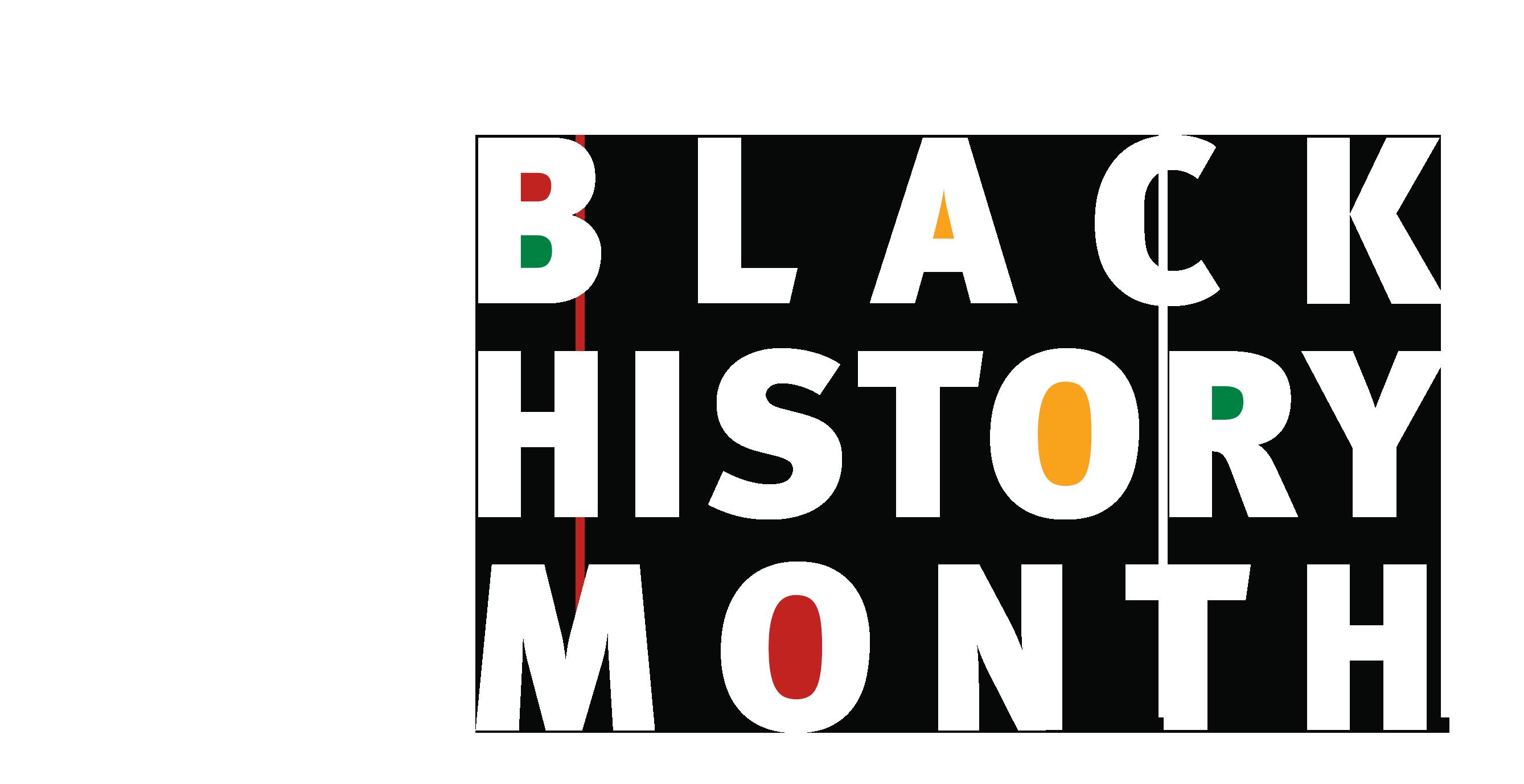
racism, treatment of women, and obscenity, it is important for students who deal with the same insecurities as Pecola to read this story. The story was listed as No. 2 on the American Library Association’s list of the most challenged books in 2013 and again in 2014. It was banned in Montgomery County, MD after a mother described the book for being too “lewd.” Then it was banned in other schools and counties in states, such as Florida, Colorado, New Hampshire, Michigan, North Carolina, Indiana, and California.
Go Tell it on the Mountain
“Go Tell it on the Mountain,” written by novelist James Baldwin, is set in 1935 in Harlem, N.Y. and tells the story of a Black teenager named John Grimes, who is described as intelligent by peers and teachers. The novel is based on James Baldwin’s own experiences, as he also grew up in the city of Harlem. In the novel, Grimes came from a religious family and centers around his view on religion. Though the premise of “Go Tell it on the Mountain” centers on intellect and religion, this text was banned because of racism, violence, explicit sex, references to rape, treatment of women, and profanity. The novel was banned in Prince William County, Va. in 1988 and in Hudson Valley, N.Y. in 1994.
Native Son
American author Richard Wright’s novel “Native Son” takes place on the South Side of 1930s Chicago and revolves around a 20-year-old Black man known as Bigger Thomas, who is described to be illiterate and impoverished. Bigger goes through a life where racial prejudice is prevalent and where he believes that he has no control over his life. Unfortunately,
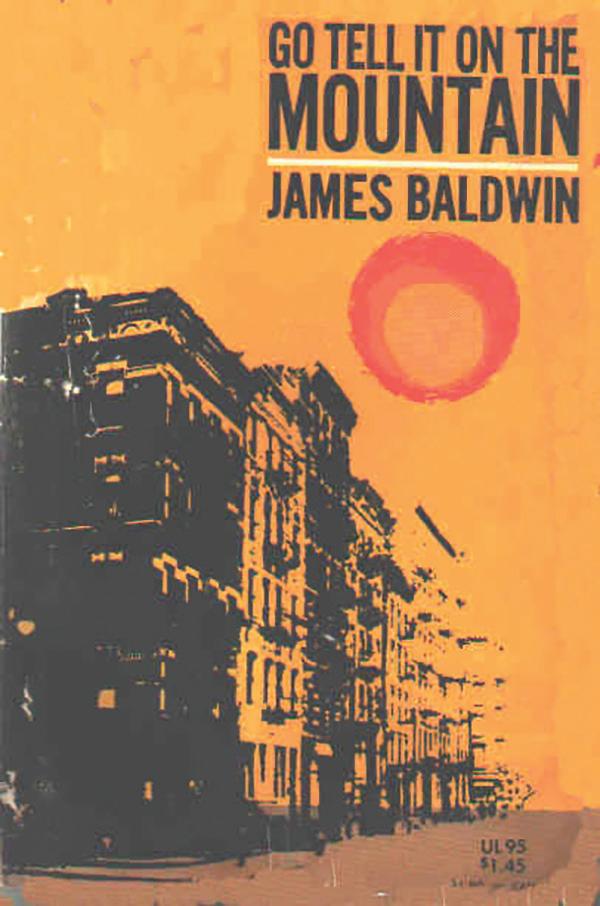

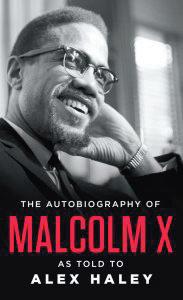
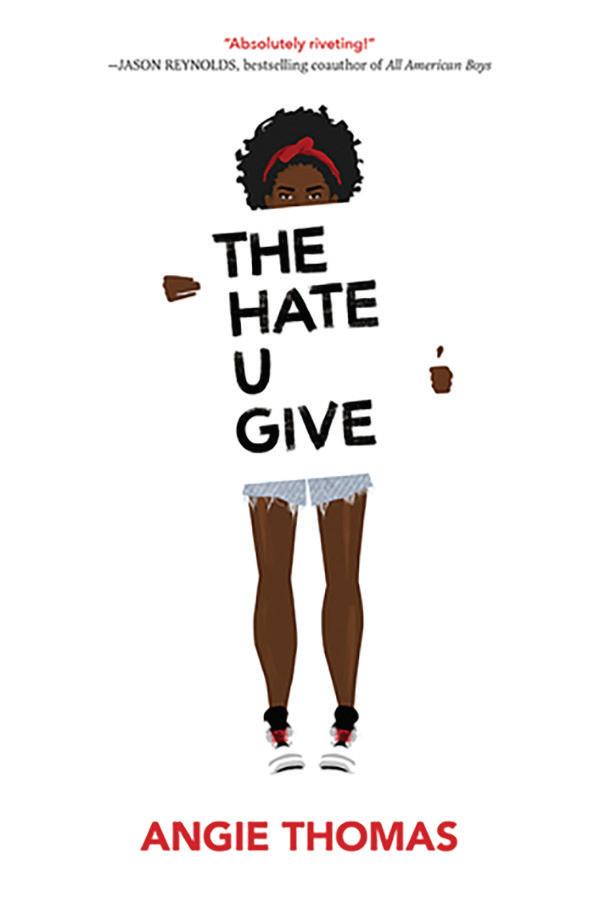
Bigger deals with his struggles in anger, stress, and fear. Although he is not the typical protagonist, he is the definition of what a “native son” is, which is made up of the racism and violent culture within American society. Although “Native Son” was banned because of sex, violence and profanity, it’s beneficial for students to relate to a character. Native Son was banned from Irvington High School in California after parents complained about its violent and sexual content.
And Still I Rise
The inspirational poem “And Still I Rise” by Maya Angelou shares the oppression and strength of minorities, most specifically Black women. The book also features other poems, such as “Rememberance” and “Phenomenal Woman.” The words in Angelou’s poem are meant to instill confidence as Angelou describes how she rises above the obstacles, however, the book of poems was banned due to its sexual content. The book was challenged after complaints about its sexual content were made by parents from several school districts.
The Hate U Give
“The Hate U Give” was published in 2017 by author Angie Thomas. The story focuses on the topics of police brutality and institutional racism as it tells the story of Starr, a teenager who navigates two different worlds as she attends an elite school while living in an underprivileged community. However, Starr is a witness to the death of her childhood friend Khalil, who is killed by a police officer. Readers are able to see Starr stand up against racism and challenge the criminal justice system, though this book was banned in part of the idea that “The Hate U Give” spoke against police officers. In 2017, it was also banned in Katy, Texas due to the use of profanity.
This is Your Time
Ruby Bridges is a civil rights activist who is better known for being the first Black child to attend a predominantly White elementary school in New Orleans, LA. Bridges wrote “This is Your Time” in the form of a letter to the reader. Her letter lists and describes the experiences that Bridges went through
as a child as she attends her newly integrated school. “This is Your Time” was banned for racism even though the purpose of her story was to encourage readers to take action in standing up for their community.
A Lesson Before Dying
“A Lesson Before Dying” by Ernest J. Gaines centers around a 21-year-old named Jefferson who lives in the fictional town of Bayonne, La. in the late 1940s. Jefferson is an uneducated Black field worker who is wrongfully accused of robbing and murdering a White man. The lesson before dying was given to him by a teacher known as Grant Wiggins who volunteers to prepare Jefferson for his death. His last lesson would be to “never give up.”
The purpose of “A Lesson Before Dying” was to teach readers to value their lives even at the time of death. The novel was banned in Savannah, Ga. in 2001 for violence, sexual content and language.
Their Eyes Were Watching God
“Their Eyes Were Watching
God” by author and educator Zora Neale Hurston focuses on the roles of men and women. The story is set in early 20th Century Florida, and it follows the story of Janie Mae Crawford, who is described as an independent Black woman. In 1997, the text was banned after a parent of a Virginia high school student complained about its obscenity and sexual content.
The Autobiography of Malcolm X
Published in 1965, ‘‘The Autobiography of Malcolm X” was co-authored by journalist Alex Haley and acknowledges
activist and religious leader Malcolm X. The reader is able to view his leadership and the racism he endured throughout his childhood and comprehend the Black American experience.
Banning books for racism and other “inappropriate” topics that may be affecting other students is not the answer. In order to teach students and to prevent what happened in the past, it’s important to have difficult conversations. Racism, violence, and abuse still stand in today’s society. However, allowing others to learn from another person’s story can encourage the next generation to combat these issues.


By American Staff
On Wednesday, February 9, Google honored the late Toni Stone – the Negro Leagues second baseman who was the first woman to play regularly for American men’s professional sports teams.
Google Doodle paid tribute to the late baseball trailblazer on the one-year anniversary of her induction into the Minnesota Sports Hall of Fame. The homage to Stone was a part of Google’s Black History Month programming.
“Here’s to you, Toni Stone,” Google wrote. “Thanks for showing the world what determination and unstoppable love for the game can achieve.” Stone overcame gender and racial discrimination to become the first woman in history to play professional baseball in a men’s major baseball league.
Born in Bluefield, W.V. in 1921, Stone moved with her family to St. Paul, Minnesota at the age of 10. The gifted athlete was breaking barriers by her early teens.
She was just 15 when the all-male semipro Twin Cities Colored Giants broke gender convention by bringing Stone onto its roster. In 1946, Stone went to bat with the San Francisco Sea Lions, marking the start of her professional career.
In 1953, Stone filled the spot of future Hall-of-Famer Hank Aaron as the second baseman for the Indianapolis Clowns, one of the League’s most prestigious teams. She also played for the Kansas City Monarchs.
Her exceptional batting average of .280 earned her a spot on the bench with the Negro League All-Star team while she continued to travel across the United States playing second base for the minor league New Orleans Creoles.
Stone played alongside legendary players such as Jackie Robinson throughout her career before retiring from professional baseball in 1954.
Google enlisted animator Monique Wray


for the task of bringing Stone to life on its homepage. Wray’s Doodle is an animated loop of Stone making a play at second base.
“I got kind of like a passion from photography of her, and just kind of the way she spoke about what she does, and her love of the sport and her love for life,” Wray told MLB.com. “So I tried to give [the Doodle] some of that energy.”
Stone has been honored by several exhibitions in the National Baseball Hall of Fame. In 1993, was inducted into the International Women’s Sports Hall of Fame.
“[Stone] being a Black woman, you know that that obviously has something to
Earlier in the month, Google Doodle chose to celebrate Black History with a nod to Toni Stone. The second baseman was the first woman to play regularly for American men’s professional sports teams.
‘I would want to be remembered as an African patriot’ Scholar, activist and community leader Alice Windom passes at 85
By Kenya Vaughn
The St. Louis American
Alice Windom, the St. Louis native who famously assisted Malcolm X during a visit to Africa – and lifelong friend of fellow Black cultural icons Dr. Maya Angelou and Dr. W.E.B. DuBois – passed away on Thursday, February 10 after a lengthy illness. She was 85.
paid
leg-
do with her not getting that sort of shine that she deserved for the significance of who she was and what she did,” Wray said. “But it’s good that now, at least, we’re doing that work and making that push.”
Stone passed away in 1996 at the age of 75. A play about Stone’s life and legacy, “Toni Stone” debuted off-Broadway in 2019 and has since shown in several U.S. cities.
“During Toni’s career, she suffered humiliating prejudices from the audience and her teammates,” Maria Bartlow, Stone’s niece, told Google. “However, she never let that stop her from playing baseball.”


“Our community has lost another great icon,” said Lois Conley, founder, President and CEO of The Griot Museum of Black History. “I’ve never knew a more intelligent person. She was clearly a scholar, particularly as it relates to Black heritage and culture.”
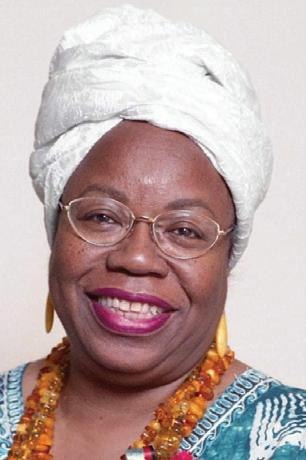
Alice Windom
Windom cultivated relationships with some of the biggest freedom fighters and change agents in the U.S. and Africa during the height of the Civil Rights Movement. But she was also a giant in her own right. She worked to build a sense of community between Black people in the United States and Africa during her years of residence and service on the continent. And upon her return to her hometown of St. Louis, Windom fought for equity, justice and resources for all.
Alice Windom was born in St. Louis on March 30, 1936,
the oldest of three children and only daughter born to Frances Louise Jones Windom and Dr. John Henry Windom. She came from a long line of educators. Her maternal grandfather, Christopher Columbus Jones, was famously the first Black student to be admitted to Southern Illinois University. A graduate of Sumner High School, Windom went on to attend the HBCU Central State University in Wilberforce, Ohio, were she earned a B.S. in social work and joined her beloved Alpha Kappa Alpha Sorority, Incorporated. She went on to earn her MSW from the University of Chicago in 1959. By the early 1960s, she was living, working and freedom fighting from Africa. Working as a secondary school teacher and secretary to the Ethiopian Ambassador, Windom was a part of an historic group of diverse African American expatriates in Ghana which included John Henrik Clarke, Maya Angelou, Curtis “Kojo” Morrow and W.E.B. DuBois. In 1964, Windom helped plan the itinerary for Malcolm X’s trip to Ghana and served as administrative assistant for the United Nations Economic Commission for Africa from 1964 to 1968, organizing international conferences in seven countries.
See Windom, C7
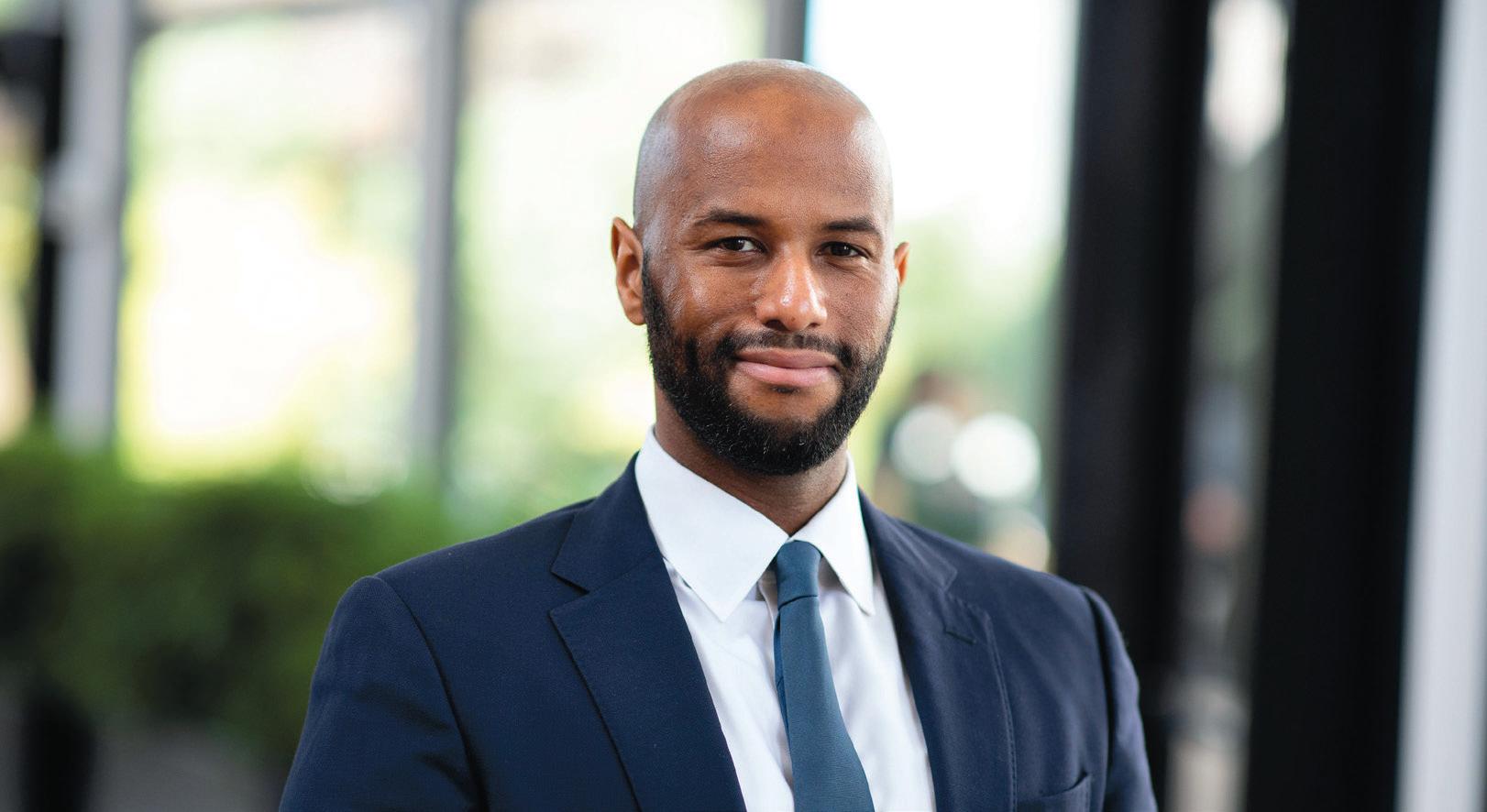

We all have a history. A story. We bring with us life experiences that shape who we are and make us better.
At Spire, we know our individual stories only make us stronger as a whole. That’s why we’re committed to an inclusive work environment where all that makes us unique is embraced, encouraged and valued.
Because it truly takes all of us—our backgrounds, our perspectives and our experiences—to move forward.
Content and photos courtesy of the Missouri Historical Society
Annie Malone’s story is a classic pull-yourself-up-byyour-bootstraps narrative, the kind Americans love to tell. But the heart of her story reveals something more: a woman’s commitment to her community and her efforts to pull others up with her.
Born Annie Turnbo on August 9, 1869, she was the secondyoungest child of a large family. Her parents, who had previously been enslaved, died when she was still very young, so she was raised by an older sister in Peoria, Illinois.
recipe for her “Wonderful Hair Grower,” Turnbo moved to Brooklyn, Illinois, an African American town popularly known as Lovejoy after the abolitionist Elijah Lovejoy. She launched her business by marketing her product door to door and recruiting locals to advertise its success.
n As the first African American woman to become a multi-millionaire, Malone’s generosity was well known.
As Turnbo was growing up, many black women and girls were dealing with hair loss, brittleness, scalp disease, and hair damage from stress, illness, and the harsh chemicals and techniques marketed to straighten black hair. Wanting to remedy this, the young entrepreneur experimented on her sisters and their friends, developing mixtures to not only encourage hair growth and health but also soothe and reverse chemical burns and scalp disease.
With a burgeoning reputation for good results and a perfected
As news spread about the upcoming 1904 World’s Fair, Turnbo must have seen a tremendous opportunity for her new business. She moved to St. Louis in 1902 and continued her strategy of hiring local agents. One of those agents started selling her own hair-growth elixir under her married name, Madam C. J. Walker, and became extremely successful in her own right. To protect her business from what she termed “imitation products,” Turnbo copyrighted her Poro trademark in 1906. Through ad campaigns, press conferences, and a tour of the South to train women as Poro agents, Poro hair-care and skin-care products became even more popular. Their most distinguishing feature? An emphasis on African hairstyles and black beauty, compared to other products that focused on straightening hair and lightening skin to adhere to white
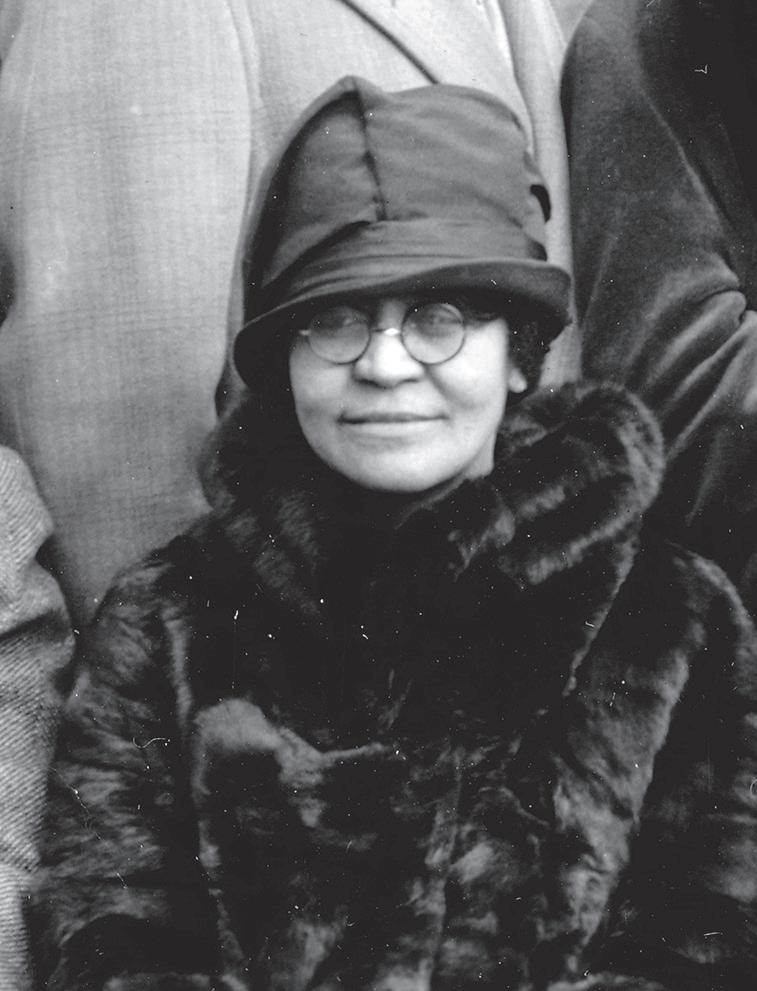
beauty ideals.
Certain Poro ads also emphasized opportunities for black women to earn income, gain independence, and build selfesteem as Poro agents. Others showed Turnbo’s appreciation for Poro customers.
Turnbo acquired the surname she would come to be known
THURSDAY February 17 | 6:30pm
Recognizing “Black Health and Wellness” as the national theme for Black History Month 2022, we’ll explore the significance of Homer G. Phillips Hospital.
THURSDAY February 24 | 6:30pm Race, Violence, and Justice: The Mink Slide Salon
Presented in collaboration with the Portfolio Gallery and Education Center
Featuring a clip from the film The Mink Slide, followed by a keynote from Dr. Geoff Ward of Washington University in St. Louis.
All programs subject to change. Please check mohistory.org/ black-history-month for the most up-to-date information before your arrival.
by in 1914 when she married
Aaron Malone, a traveling salesman and former teacher.
The couple later divorced, but the Poro founder kept the name.
By 1918, construction began on Poro College, near the new location for Sumner High School in the Ville neighborhood. In addition to serving as
the headquarters for manufacturing and shipping Poro products, the college was a training center for Poro sales agents.
The campus included dormitories, emergency-first-aid rooms, and a cafeteria just for students. A 500-seat auditorium, committee rooms, and rooftop garden were open for public use. Poro College frequently hosted displays by black artists, concerts by black musicians, conferences, meetings, banquets, charity benefits, and weddings. (Later on, as part of the Gaines v. Canada settlement, Poro College became the home of Lincoln University Law School.)
As the first African American woman to become a multi-millionaire, Malone’s generosity was well known. She helped her employees with mortgages and rewarded workers who bought homes for their parents and siblings. She
even gave Poro agents diamond rings to mark their fifth anniversaries. Black institutions, including the St. James AME Church, the Pine Street YWCA, and Howard University Medical School, received large donations from Malone. At one point the St. Louis Argus reported that she had financially supported at least two students at every African American land–grant college in the nation.
Malone also donated land and money to the St. Louis Colored Orphan’s Home and assisted the institution in moving to its permanent location on Goode Avenue (later renamed Annie Malone Drive). She served as president of the
Centene Corporation presents
How Their Life Changed Yours
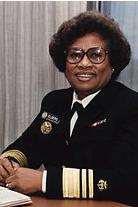
Joycelyn Elders
Her Life
Minnie Joycelyn Elders was born Minnie Lee Jones, August 13, 1933, in Schaal, Arkansas. She was the eldest child of her poor sharecropping family’s eight children. Joycelyn and her family also spent two years living
near a wartime shipyard in Richmond, California, before moving back to Schaal.
Elders served three years in the United States Army as a Second Lieutenant where she was trained in physical therapy. This led to Elders attending the University of Arkansas Medical School to obtain her degree in medicine.

In 1987, Joycelyn Elders became the first African-American woman appointed as Director of the Arkansas Department of Health by then Governor of Arkansas, Bill Clinton.
How Her Life Changed
Joycelyn Elders advanced the field of Pediatric Endocrinology. She was especially interested in childhood diabetes, dedicating years of research while serving as Professor of Pediatrics at The University of Arkansas Medical Center.
Again, Bill Clinton, then President of the United States of America, appointed Joycelyn Elders as the United States Surgeon General. This made Elders the first AfricanAmerican and the second woman to hold the position. She faced much racial adversity from bad actors in the American Medical Association during her tenure as Surgeon General but Elders never compromised.

By Adonijah Bourne
The Howard Center For Investigative Journalism
Simeon Booker, then a reporter for Jet magazine, was a witness to history on the day in 1955 when Mamie Till Mobley stared at the bloodied and bloated body of 14-year-old Emmett, her only child.
Emmett Till had been visiting relatives in Mississippi, was said to have whistled at a white woman, and, in retaliation, was beaten and shot before his body was dumped in a river. His mother could barely recognize her son.
“Her face wet with tears, she leaned over the body, just removed from a rubber bag in a Chicago funeral home, and cried out, ‘Darling, you have not died in vain. Your life has been sacrificed for something,’” Booker wrote.
The moment was captured by Jet photographer David Jackson. It was one of many images of Till that startled the nation and the world into awareness of the brutality of lynching in America, and, historians say, changed the course of the civil rights movement.
“Without the imagery, there would be no one who’s prepared to believe some of the violence that we’ve witnessed,” Bryan Stevenson, executive director of the Equal Justice Initiative, said in a 2016 documentary.
“That image still has resonance,” he said. “It still has power. I think it still expresses the pain and anguish of a huge part of our population that is still hoping for basic recognition of their humanity.”
Deborah Watts, Till’s cousin and the co-founder, executive director and president of the Emmett Till Legacy Foundation, said the images have a particular resonance in the
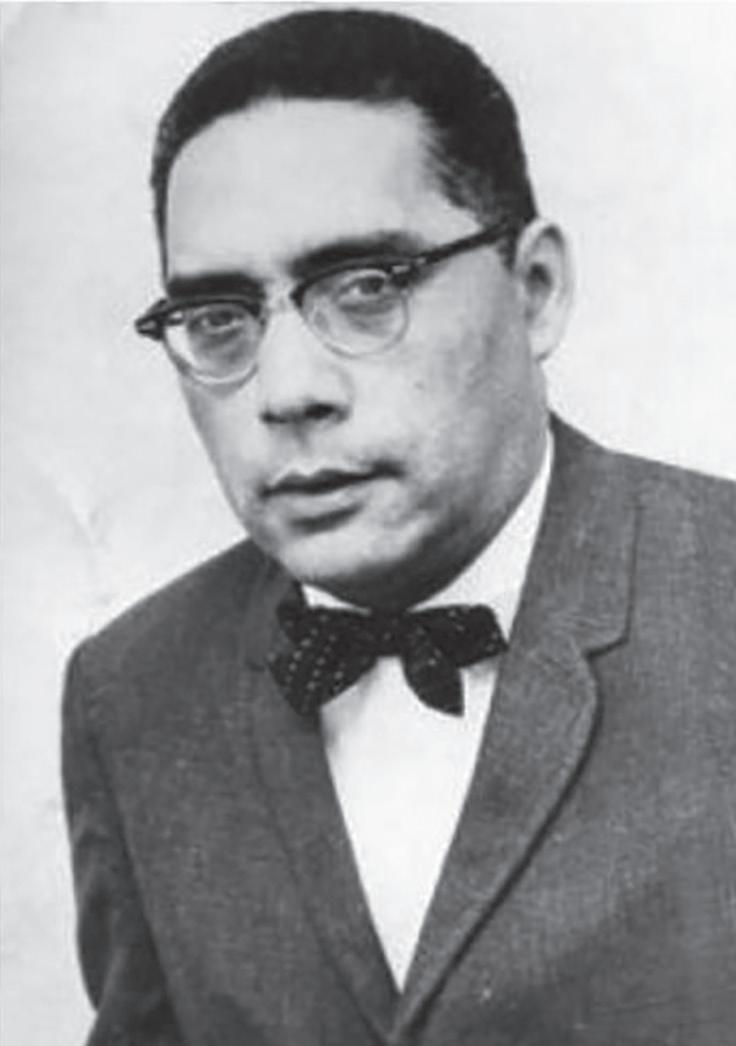
current climate of violence and racial injustice.
“As people are grappling with Black Lives Matter, here’s a perfect example of how Black lives didn’t matter,” Watts told the Mississippi Center for Investigative Reporting in 2020.
Booker belonged to a group of Black journalists who played a critical role in chronicling lynch law injustice in the middle of the 20th century. Moses J. Newson of Baltimore’s Afro-American was another.
“Both Booker and Newson were members of modern journalism’s advance guard who had dug into civil rights atrocities when no one else was looking,” Gene Roberts and Hank Klibanoff wrote in “The Race Beat: The Press, The Civil Rights Struggle, and the Awakening of a Nation.” Booker was a first-generation product of the Great Migration, during which millions of African Americans left the
Legendary reporter Simeon Booker spent more than a half-century chronicling the Black experience for Johnson Publishing, the company that founded ‘Ebony’ and ‘Jet Magazine.’ He also worked for such famed Black publications as ‘The Afro-American’ and the ‘Cleveland Call and Post.’
Booker – had experience with the Black Press by way of the Afro-American and Ebony
The series on slum housing earned Booker a Nieman Fellowship at Harvard University during the 1950-51 academic year, and in 1952 he became the first African American hired as a full-time reporter at The Washington Post. The nation’s capital was not very welcoming.
When he introduced himself as “‘Simeon Booker from The Washington Post,’ people laughed,” The Washington Post reported in his obituary. “If I went out to a holdup, they thought I was one of the damn holdup men. I couldn’t get any cooperation,” he told The Washington Post in another article.
rural South for industrial centers in the Midwest. There they formed the advertising and readership base for the growing number of Black weeklies such as the Cleveland Call and Post, not far from Youngstown, Ohio, where he grew up.
Born in Baltimore and graduated from Virginia Union University, a historically Black college in Richmond, Booker had numerous articles published in The Afro-American while still in high school. He worked there after college, then returned to Ohio and wrote an award-winning series on slum housing for the Call and Post
“We investigated these things, like, literally, because it wasn’t theory. It was something happening to us, happening to our community. … It was more than just a story about something. It was our lives,” said Rhoden said William C. Rhoden, a retired sports columnist at The New York Times, who – like
“It was all new to them, having a Black guy in the newsroom,” the obituary reported Booker recalling. “It was recommended to me that I only use the bathroom on the fourth floor — editorial — so I did. I could eat in the cafeteria, and I was thankful for that. But I was always alone.”
He left the newspaper, moved to Chicago to work for Johnson Publishing Company, ultimately opened its Washington bureau and retired in 2007 after 51 years with the publisher of Jet and Ebony. He died in 2017 at the age of 99.
This story, which has been edited for length, was written and reported by the Howard Center for Investigative Journalism, and it is part of a larger series investigating how white-owned newspapers incited racial terror.
Republished with permission from St. Louis American content partners Word In Black from wordinblack.com.
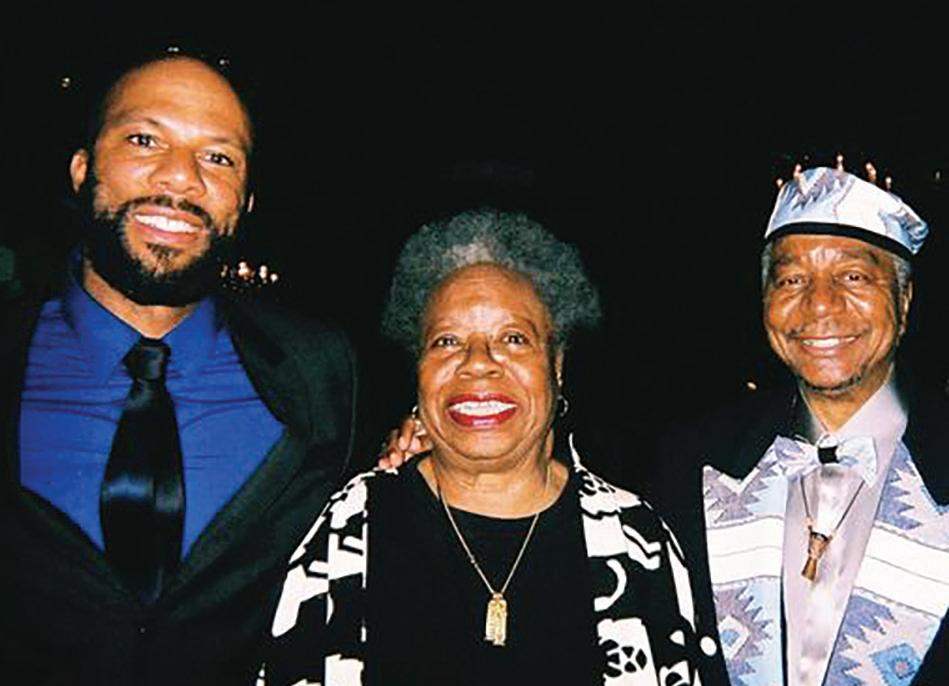
Continued from C5
“She was absolutely indispensable to Malcolm, assisting his movement from place to place and providing the contacts he needed in his pursuit of interviews and consultations with various leaders,” The Amsterdam News said in a July 2014 profile that praised Windom for her critical role during the Ghana stop of the slain Civil Rights leader’s 1964 tour of Africa and the Middle East. “Five years later, she was in Lusaka, Zambia, employed mostly as a social worker for the government.”
From 1969 to 1972, Windom was a social welfare organizer for the Department of Social Welfare in Lusaka, Zambia.
“I would want to be remembered as an African patriot,” Windom said during a 2007 interview with The History Makers. “That’s been my commitment since I was a young woman.”
Windom returned to her native St. Louis in the early 1970s to care for her aging parents. She served as director of social services for the St. Louis Medium Security Institution from 1973 to 1974. In 1977, Windom sued the City of St. Louis for racial and sexual discrimination and the denial of free speech.
Over the years, Windom served in a number of civic capacities, including a lengthy tenure as a coordinator of the James T. Bush Center at the University of Missouri-St. Louis. While there she helped
to launch workshops on education, housing, law and employment. She pioneered the University of Missouri (UMSL) St. Louis Bridge Program – which offered high school students an opportunity to take college courses; headed the Margaret Bush Wilson Policy Center at UMSL; administered a minority business program; worked as a penal institution social worker; and conducted original research and lectures related to giant stone Olmec heads found in the Western Hemisphere as evidence of Blacks diaspora navigation from Africa across the Atlantic before European exploration.
She was also an inaugural board member for the Griot History Museum and continued to support the efforts of the institution and its mission.
“The elevation and restoration of the dignity and respect for black people is really all I’ve ever cared about,” Windom said. “And those black folks are the ones I see on the street. They’re my family and then the whole black world.” She is survived by her two brothers –and most trusted and supportive lifelong friends – Jackson Windom and John Windom.
Final services for Ms. Windom will take place on Monday, February 21 at Leonard Missionary Baptist Church, 1100 N. Compton. A visitation will be held from 9 a.m. – 10:30 a.m. followed by an Alpha Kappa Alpha Sorority, Inc. Ivy Beyond The Wall ceremony. The funeral will take place at 11 a.m. Burial services at St. Peter’s Cemetery will take place at 1 p.m.









By Donald James Michigan Chronicle
February is Black History Month, a time when the achievement and history of Black people, events, and organizations are recognized through dedicated programs and celebrations of milestones and legacies shaping the Black experience in America for 400-plus years. Yet, according to Keith Lester, a seasoned researcher and historian of the African Diaspora, every day is Black history, and every Black family has a history that needs to be discovered and documented.
Lester is the founder, president, and CEO of Serengeti Historical Associates (SHA), a South Carolina-based research genealogy organization helping Black families learn more about their histories and family history makers.
“We employ all the tools that we have at our disposal to trace and research the history and linage of African American families,” said Lester, a retired industrial engineer who grew up in New Jersey. “What we find is that much of their history is not lost but is misidentified. However, we at Serengeti Historical Associates attempt to find the straight lines back into history, even if that history links to other countries.”
According to Lester, his organization has been instrumental in providing detailed histories and family trees for foundational support to family reunions. In addition, SHA is equipped to research and provide historical content to authors, filmmakers, documentarians, Black history projects, and any person or organization requiring factual information about the African Diaspora in America and other sectors of the world.
Lester said SHA is providing research services on an upcoming project about Jamil Al-Amin formerly known as H.
Rap Brown, who in the 1960s was a prominent Black Power leader having both chaired the Student Nonviolent Coordinating Committee (SNCC) and served as a minister in the Black Panther Party. Lester and SHA, through a verbal non-disclosure agreement, are the principal consultants for researching a huge literary project about the life and times of a famous African American whose family roots date to the early 1700s.

Under Lester’s leadership, SHA is also actively developing in-person and online programming that addresses an array of Black history topics no longer taught in schools or have been weakened. “Many of the historical narratives that are taught in schools these days don’t pass the commonsense test,” Lester said. “What I find, even within our Black communities, is the lack of information known about Black history, especially by school-age children.
To a certain extent, they know about the icons like Dr. Martin Luther King Jr. and Malcolm X and a few others. They don’t know a whole lot about Booker T. Washington, Marcus Garvey, J.A. Rogers, Carter G. Woodson, and many others.”
Lester adds that sometimes the focus of Black accomplishments is on those in entertainment and sports.
“Rarely do we talk extensively about Black scholars, scientists, doctors, inventors, or those activists trying to advance the Black culture in a much more positive direction,” said Lester.
Lester believes if school systems and teachers are not going to be permitted to teach Black children about their history and

cultures, then it is incumbent upon parents, grandparents, and other stakeholders to teach and provide the tools and platforms for Black children to think critically and search their histories across broad spectrums. When SHA’s services are used to research Black families, organizations, and other Black milestones and legacies in history, Lester says his organization provides comprehensive written reports to include, when possible, actual historical documents discovered such as copies of census records, court records, armed forces registrations, marriage certificates, birth certificates, death records, Freedman Bank records, voting records, and other documentation not easily found. In many instances, SHA provides vintage photographs of the families’ ancestors.
Accuracy and credible are keywords for Lester and Serengeti Historical Associates. “I want to make sure that our information is irrefutable and that every piece of information that we trace, research and find, we can hang our hat on as factual,” Lester said. “It’s imperative to be 100% sure of the accuracy and the historical context of what we provide to those using our services.”
According to Lester, now more than ever, it’s crucial that Black people and families know and document their histories. “We need to regain our psychological selves because we belong and we have value,” said Lester. “We need to know about our ancestors and what was going on during their lifetimes so we understand better what’s going on now and how to move forward. We have to stop accepting the status quo in our lives and history.”
For more information about Serengeti Historical Associates, email Keith Lester and SHA at cybro54@aol.com. Look for SHA’s reconfigured website to be launched in March 2022.
‘The more you look, the more you see’
‘Oliver Lee Jackson’ praised as Feb. 20 closing nears for acclaimed exhibition
By Kenya Vaughn
The St. Louis American
n “One of the things you get from Oliver Jackson when you speak to him is that art is an experience. There is no starting point or ending point – or right or wrong.”
- Hannah Klemm, Associate curator of modern and contemporary art
Walking through the two galleries within the Saint Louis Art Museum that house “Oliver Lee Jackson” for a private breakfast and gallery talk on Friday, Feb. 11 made for a bittersweet moment. The experience reaffirmed the genius of the exhibition’s namesake – an artist with more than a half-century (and counting) of contributions to the visual arts landscape. “Oliver Lee Jackson” also celebrates a St. Louis son – one who shares lived experiences with little Black boys and girls continually devalued by society because of socio-economic circumstances that are beyond their control. Through the exhibition, children and adults from the St. Louis region can see what is possible when proper commitment and discipline are applied to their boundless gifts. Sadly, only a few days remain for the opportunity for local audiences to sit with and soak in Jackson’s work on such a grand scale. The exhibition closes on Feb. 20. The hope is that in the six-plus months that “Oliver Lee Jackson” was made available free of charge to guests of the Saint Louis Art Museum that lovers of art became better reacquainted with the work of a master – and that future artists within the communities that shaped him will be inspired to dive deeply into greater understanding and exploring the creative depth his work provides.
“We are very excited that we were able to put together this show,” said Simon Kelly, curator of modern and contemporary art for the Saint Louis Art Museum. “In many ways it is a compliment to the exhibition at the National Gallery exhibition organized by Harry Cooper in 2019.” During the opening remarks for that exhibit, Cooper, senior curator and head of modern art for the National Gallery in Washington, D.C., referred to Jackson as “a national treasure.”

“This show is slightly broader in terms of its chronological scope,” Kelly said as he compared “Oliver Lee Jackson” with the National Gallery’s “Oliver Lee Jackson: Recent Paintings.”
Kelly curated “Oliver Lee Jackson” along with Hannah Klemm, associate curator of modern and contemporary art with Molly Moog as research assistant.
“We have the show across two galleries,” Kelly said. “And we move from the mid-1960s right up to 2020.”
The dozen works are vastly different in materials, composition and mediums.
“We wanted to really think about Oliver’s practice from the time he was in St. Louis all the way through the present,” Klemm said.
She pointed out that he was very embedded in the St. Louis arts scene when he lived in the
region in the 1960s and early 1970s. In addition to being affiliated and closely connected to the Black Artists Group, Jackson was an assistant director of The People’s Art Center –a public youth integrated art center in St. Louis. He also started a program at the Pruitt-Igoe Homes to bring art to that community.
“He cares deeply about teaching,” Klemm said. “ He taught for a lot of his career.”
Jackson also uses his art as an instructional guide to encourage individuals to think and create outside the confines of convention and imposed labels.
“One of the things you get from Oliver Jackson when you speak to him is that art is an experience,” Klemm said. “There is no starting point or ending point – or right or wrong.
See Jackson, D8
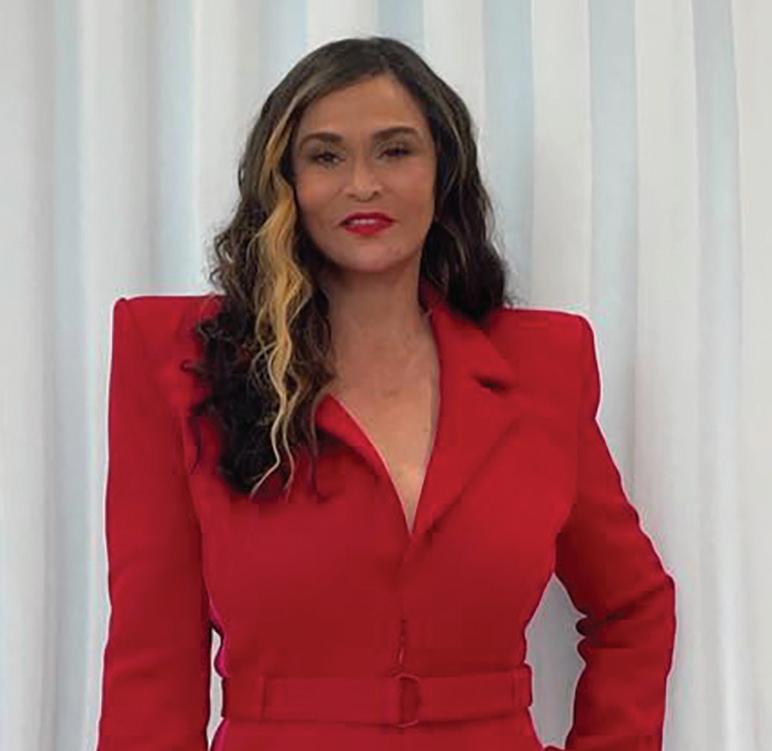
Dear Fathers featured in a segment for docuseries about Black
By Danielle Brown The St. Louis American
Everything isn’t always what it seems. That message is especially applicable to how mainstream media and society often perceives Black men. Oftentimes they’re viewed as a threat and mislabeled due to negative assumptions. In an effort to shed a positive light on Black men and debunk stereotypes, Tina Knowles-Lawson, and Trell Thomas are executive producers for the docuseries “Profiled: The Black Men,” created in partnership with OWN. Lawson, who is Thomas’ mentor and close friend, told CBS News, the two always have conversations about race. She said at a time when there were a lot of negative documentaries out about Black men, Thomas confided in her, wishing there was positive content about Black men.
“I said ‘if you don’t see it, create it,’” Lawson said. “I feel like we don’t understand how damaging the negative stereotypes are. How many times has a Black man gotten in the elevator and someone held their purse tighter or locked their doors… and people were afraid of them?” Thomas told CBS News it was imperative for him to release the series because often other people tell stories of the Black experience and don’t do it correctly.
“I’m from South Carolina, the Jim Crow South and I don’t have to tell you too much about growing up in South Carolina,” Thomas said. “I often tried to be small to not seem threatening and make people feel safe even though I wasn’t bringing harm to a situation. Those stereotypes make us
‘This is the perfect moment and the perfect time’
Disney Jr. series animated by Lion Forge teaches equity through children’s eyes
By Kenya Vaughn
The St. Louis American
Talking about racism is hard enough for adults. But trying to explain certain ugly truths about society without diminishing the wonder, hope, optimism and natural curiosity that children have towards the world can seem impossible.
Thanks to Disney Jr., parents, family, friends and children themselves have a tool to aid them in tearing down the walls built by bigotry and ignorance. “Rise Up, Sing Out” is a series of music-based shorts about race and culture from a child’s perspective. The eight-episode series features music by Amir “Questlove” Thompson and Tariq “Black Thought” Trotter – who also serve as executive producers for the short form animated series.
“The ‘Rise Up, Sing Out’ shorts touch on a lot of real-world issues, especially for young Black kids, that just weren’t talked about when we were growing up,” Questlove and Black Thought said
in a statement about the series, which was available to stream on Disney+ on the second day of Black History Month. “The beautiful thing about these shorts is that not only are they going to provide young kids the proper language to talk to their friends and family about some of the things that might be bothering them, but it’s also going to give parents the tools on how to respond.”
“Rise Up, Sing Out” debuted on Disney+ February 2 and music from the series was released on Walt Disney Records on February 4. St. Louis native David Steward II’s company Lion Forge – the team behind the Academy-Award winning animated short “Hair Love” – provided animation for “Rise Up, Sing Out.” Lion Forge nailed the most intricate details of the swagger served up by Black youth – the hairstyles in particular. The accuracy of the shadow fades, free form locs, twists, coils and curls pop
See Rise Up, C8


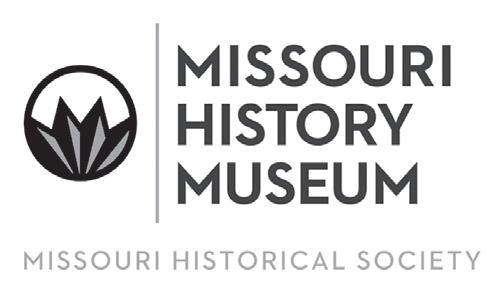
By Cicely Hunter, Missouri Historical Society
Nathan B. Young Jr., a prominent African American judge in St. Louis, was born in 1894 and passed away in 1993. It’s amazing to think about what he experienced in his 98 years—the Harlem Renaissance, the Great Depression, the civil rights movement, and the desegregation busing era, among other events. His life was interesting from the very beginning. The son of Nathan B. Young Sr. and Emma Young, he was born in Tuskegee, Alabama, and lived next door to Booker T. Washington. Judge Young, as he was known throughout St. Louis’s Black community, received a bachelor’s degree from Florida A&M and a law degree from Yale University Law School in 1918. As a young attorney in Birmingham, Alabama, he was targeted and threatened by the Ku Klux Klan due to his involvement with the local National Association for the Advancement of Colored People (NAACP). Upon his father’s advice, he migrated north with his wife, Mamie, to practice law in St. Louis. In an oral history account given to Richard Resh on July 15, 1970, Judge Young described St. Louis as an “oasis compared to Birmingham, Alabama, at the time in 1924.” He joined the St. Louis Negro Bar Association (now known as the Mound City Bar Association), which was founded after the St. Louis Bar Association refused to admit African Americans.
Judge Young also co-founded the St. Louis American, established in 1928 as an alternative Black newspaper to the St. Louis Argus. He estimated that 2,000 copies of the St. Louis American circulated during the spring of 1928. Some of the first subscribers included Homer G. Phillips, Charles H. Turpin, Richard Kent, and Arthur Dowd. Judge Young led an impressive writing career, contributing an editorial to every issue for over 40 years. He recalled that in the first issue he wrote about A. Philip Randolph, a labor unionist and civil rights advocate whom he described as an “unsung hero.” Supported by Young and the St. Louis American, Randolph led a successful fight for recognition of a Black labor organization, the Brotherhood of Sleeping Car Porters, from the Pullman Company, which had its own porters’ union.
In his interview, Young mentioned that St. Louis was one of the largest railroad centers in the country, giving local Black workers an advantage in organizing and advocating for change.
Young credited Nathaniel Sweets with sustaining the St. Louis American for more than 45 years as both publisher and owner during the Great Depression and other challenging times. Sweets envisioned the St. Louis American as a
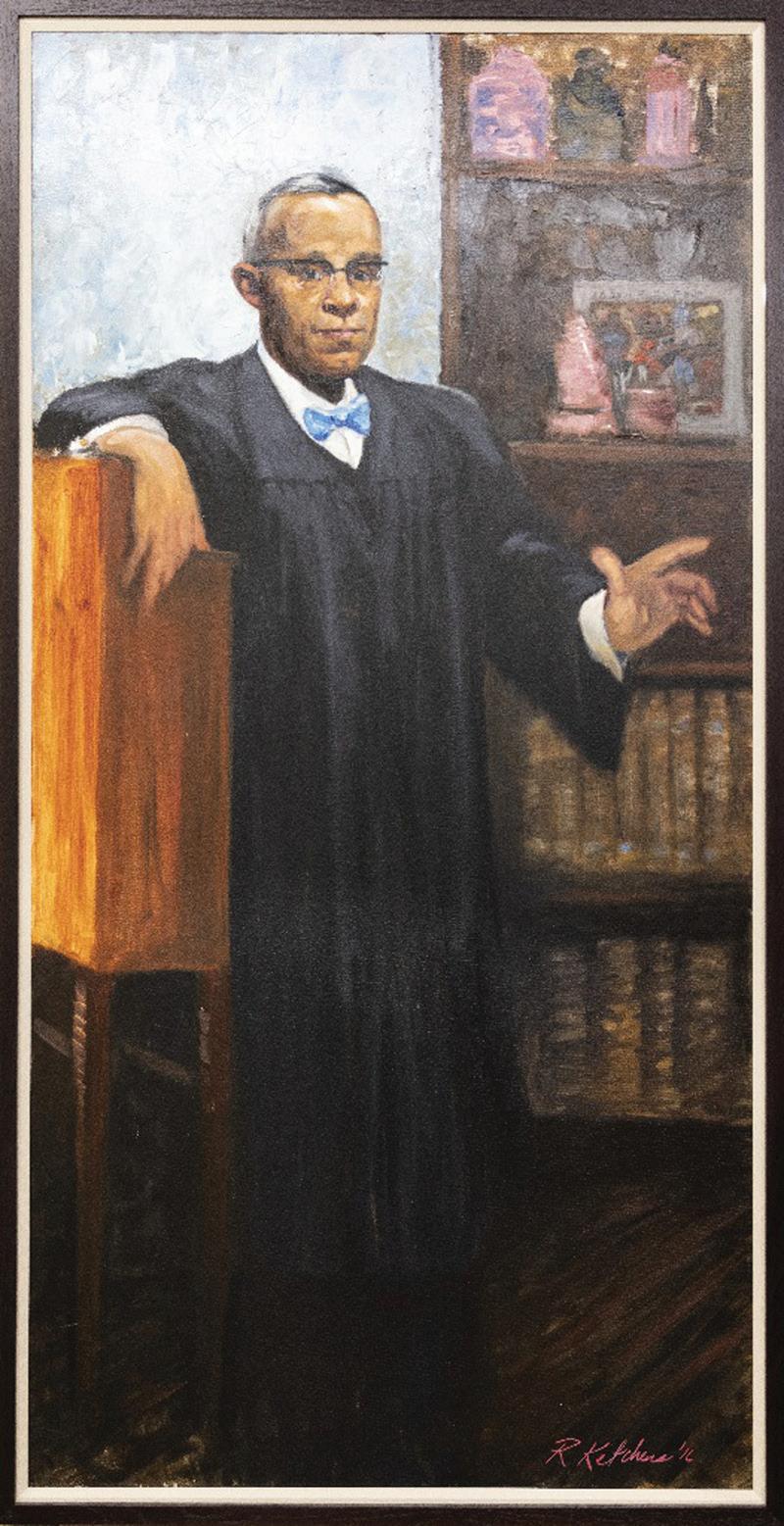
Photo
newspaper that would be able to “give a voice to the African American community that was lacking, and bring them information they could use. The St. Louis American [would] carry news tailored to the African American community and anybody who wants to know about it.”
In his interview, Judge Young also talked about his support of businesses that hired African Americans and his involvement with the “Buy Where You Can Work” movement, which he defined as “a forgotten and very important” movement that “at the time was regarded as very radical.”
Young enjoyed researching local Black history, the subject of his 1937 book Your St. Louis and Mine. He concluded that St. Louis was important to the civil rights movement because it had a strong Black activist presence and several Supreme Court cases that received national attention: Dred Scott v. Sandford, Shelley v. Kraemer, and Gaines v. Canada.
Judge Young led an
exceptional life. A modern Renaissance man, he was a writer, historian, musician, and painter of nearly 500 works now located in Saint Louis University’s archives. He was named the first African American municipal judge in St. Louis by Mayor Alfonso Cervantes in December 1965 and was assigned to City Court #2. He retired in 1972 but continued to influence the community, share Black history, and contribute to the legacy of our city.
Judge Young’s life and 1970 oral history interview will be featured in the upcoming virtual exhibit #1 in Civil Rights: The African American Freedom Struggle in St. Louis, an online adaptation of the 2017 Missouri History Museum exhibit.
Cicely Hunter is the African American History Initiative Public Historian at the Missouri Historical Society. Join the Missouri History Museum for Black History Month. Visit mohistory.org/ events for the complete schedule.


don’t have kids so I more so talked about growing up without a dad and how that inspired the platform.”
Continued from D1
move through the world differently and I want it to free people’s mindsets.”
“Profiled” premiered Feb. 12 exclusively on discovery+. New episodes will air every Saturday through March 5.
Tristan Wilds hosts the series in which celebrities, community leaders, and everyday people provide commentary on Black men and misconceptions about them.
The series includes: Episode 1 “Black Men Are Dangerous,” which premiered Feb. 12; Episode 2 “Black Men Are Absent Fathers,” premiering Feb. 19; Episode 3 “Black Men Devalue Black Women,” premiering Feb. 26; Episode 4 “Black Men Don’t Cry,” premiering March 5.
Dear Fathers, a St. Louis founded community-oriented organization focused on Black fatherhood and brotherhood will be featured in episode 2.
“We’re talking about different things in relation to the platform and fatherhood,” said Jesse Alex, co-founder of Dear Fathers. “In relation to me I
Alex said he and the other participants, Brad Edwards, Lamar Johnson Jr., and Ricky Hughes Jr., were selected by Thomas who contacted them on Instagram saying Lawson wanted them to be involved.
“She had already followed us on Instagram and reshared some of our posts,” Alex said.
“One day she posted about the documentary and I was like, ‘I wonder why she didn’t get us involved.’ Then later that same day they reached out asking us to fly out to LA. We flew out two weeks later and it was pretty dope.”
Once they were confirmed to be part of the series, they booked flights and an Airbnb. When the shooting day came, a driver was sent to pick them up. While on the ride there, Alex said they didn’t know what to expect or even if they would get to meet Lawson. On arrival, Alex said they went to the makeup room and saw Lawson. When they introduced themselves he said Lawson was already familiar with who they were.
“She knew who we were from following us, but for her
to say it in person was kinda cool,” Alex said. “We were back there with her for a minute just chit chatting. Then we went on set for about 45 minutes answering questions. It was one of those ‘wow, we’re actually here doing this’ kind of moments.” Alex said he’s unsure about what information will be pulled from their conversation, but he’s excited to see how it turns out.
“The excitement is coming back for me because we filmed our segment a minute ago,” Alex said. “We get to see what it looks like and it’s actually coming out.”
For more information about Dear Fathers, visit https://dearfathers.com/.
Lawson told CBS News she hopes and prays people can start seeing Black men as human in different situations which will potentially cause a positive effect.
“We’re trying to bring people together so that it’s not so much fear because it all seems to be predicated on fear,” Lawson said. “Even if you see our Black men in handcuffs people say, ‘oh well, we were afraid or if they’re pinned down they’re afraid. That mentality has to change.”
We are studying how the pandemic has affected Black allied healthcare workers at home and work

Study sponsored by: Washington University in St. Louis Black Nurses Association
2-part opportunity:
In-depth Interview: Receive $90 e-gift card and/or Online Survey: Enter to win e-gift cards $25-$75
Interviews are about 1 hour; can be in-person or on Zoom
To be eligible participants must:
be 18 years or older
identify as Black
live or work in the greater St. Louis area
work in home health care; or support care in assisted living or a hospital setting
More info: https://sites.wustl.edu/healthworkerproject/
Sign up with the QR code below to let us know you are interested or want more information. Or contact the team directly at:
Email: ahcw.covid.study@wustl.edu
Phone: (314) 312-3617

By Sami Sharfin Indiana Daily Student
An event held on the Indiana University campus last week is drawing listeners from across the nation. The Black Church Mixtape: A Virtual Listening Party was held on Feb. 11, 2022.
Hosted by the Archives of African American Music and Culture and the Neal-Marshall Black Culture Center in Bloomington, Indiana, the listening party was an interactive celebration of the rich, musical legacy of the Black church. It is now
available for listeners at the AAMC Facebook page. www.facebook.com/ IUAAAMC/
The collection of songs played during the event are representative of the various eras of Black sacred music.
Artists including Aretha Franklin, Kirk Franklin and Mahalia Jackson were featured, along with gospel pioneers Rev. Charles Albert Tindley and Thomas A. Dorsey.
The Neal-Marshall Center is commemorating Black History Month with the theme of the Black church.
AAAMC Director Dr. Tyron Cooper said the collaboration with the Neal-
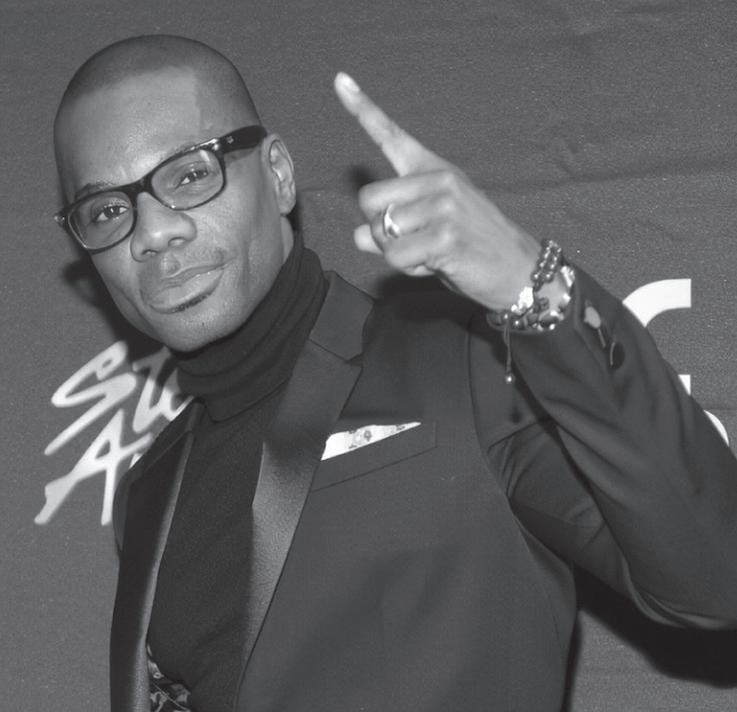
Marshall is important in giving students an opportunity to understand the music contextually.
“The AAAMC accounts as a micro-artistic arm of this celebration by providing a peek into the musical continuum of the Black church,”
By Preston T. Adams III
Having a God-given vision for your life is critical. Vision is a powerful asset that we must learn how to tap into and deploy. God has a specific vision for your life. It’s a vision that God designed in eternity and birthed with your entry into the physical realm. It’s a powerful vision, one God is committed to achieving through you. A vision board is a physical collection of items such as pictures, magazine clippings, words and quotes that visually affirm your goals and dreams. Vision is defined as “the
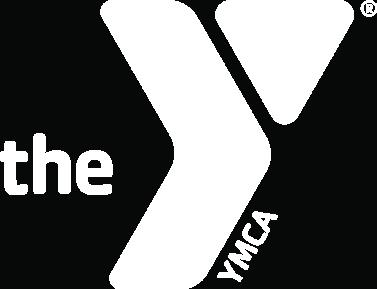
faculty or state of being able to see, ability to think about or plan the future with imagination or wisdom, and the act or power of seeing.”
A vision is a supernatural appearance that conveys a revelation. Visions are known to emerge from spiritual traditions and could provide a lens into human nature and reality. Prophecy is often associated with visions. Vision establishes godly priorities and breaks the spirit of lack. Vision is prophetic and boldly declares God’s will. Vision relies on God.
The Pulpit Commentary provides an awesome illumination on Proverbs 29:18. It states: “Where there is no
vision, the people perish; rather, cast off restraint, become ungovernable, and cannot be reined in. ‘Vision’ (chazon), prophecy in its widest sense, denotes the revelation of God’s will made through agents, which directed the course of events, and was intended to be coordinated with the supreme secular authority.”
Cooper said.
Dr. Gloria Howell, director of the Neal-Marshall, grew up with Black church music in Mississippi. She said Black church music is a foundational component of the Black experience and what we know as quality
restrain.”
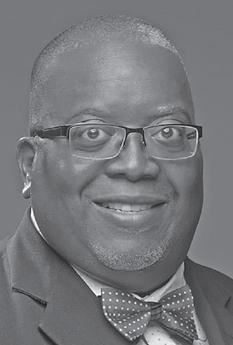
The Pulpit Commentary goes on to say: “The prophets were the instructors of the people in Divine things, standing witnesses of the truth and power of religion, teaching a higher than mere human morality. The fatal effect of the absence of such revelation of God’s will is stated to be confusion, disorder, and rebellion; the people, uncontrolled, fall into grievous excesses, which nothing but high principles can

There are two points I want to leave you with as it relates to the power of vision and an excellent way to answer the question: “What’s On Your Vision Board?” These two points are revelation and restraint.
First, let’s explore revelation. The revelation (vision) in mind here is not the spontaneous word from a purported prophet. It is God’s great revelation, God’s revealed word through God’s Hebrew prophets and later the apostles and prophets who gave us the New Testament. No vision equals no instruction in God’s truths, which was by the prophets, through visions.
Finally, it should be easier to see why no vision leads to no restraint, our second point of exploration. When God’s word is unavailable

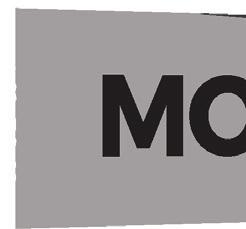

creativity.
“The music of the Black church has transcended time,” Dr. Howell said.
“The music has evolved and has taken different forms, but the messages of resilience and hope are still the same.”
AAAMC graduate assistant Nia I’man Smith said the virtual listening party served as an introduction into Black sacred music and a way for the community to engage with the archives.
“We really want to give people a taste of Black music within the church and the history of the Black church,” Smith said.
Smith and her fellow graduate assistant colleagues at AAAMC, Bobby E. Davis Jr., Chloe McCormick and Mia Watts, played crucial roles in helping to select the featured collections and musical pieces featured.
“Through this event, we’re encouraging the student body and broader community to think deeper about Black music, Black culture, Black church and the Black experience,” Cooper said.
or rejected, the people (we) cast off restraint. We no longer have a standard greater than our own feelings or current opinions. In essence, the people (we) are deprived of moral restraints. And when we are deprived of moral restraints or have no vision for our lives beyond mere existence or depravity, we have the tendency to move aimlessly and ultimately, we run amok.
So, what’s on your vision board? What revelations have you received from God concerning your life and how to live up to your fullest God-given potential? What dreams (visions) are you deferring, waiting for the right moment to happen or all the proverbial stars to line up? God is speaking right now. The question is are you listening? And if so, what’s on your vision board?
Dr. Preston T. Adams III is senior pastor at Amazing Grace Christian Church in Indianapolis.




Location:
Single Specialty Endoscopy Center located in Central West End
G. I Registered Nurse:
Skills:3-5 years of GI experience. ACLS certified. MO licensed. Detailed oriented, in assessment, implementing and recording, comprehensive nursing care in GI setting. Colonoscopy, with biopsy, EGD, PEG Resume: nanette.escueta@cweestl.org
G.I. Technician:
Skills: GI experience. Knowledge, preparation, Set-Up, GI cases & Sterile technique. BLS certification. Decontamination and high-level disinfection. Preparation, GI set up, infection prevention and sterile techniques. Resume: nanette.escueta@cweestl.org
Medical Assistant (MA) Requirements 2-3 years’ experience working in outpatient setting, BLS certification. Good people skills, Familiar with intake of insurance information, scheduling, follow up appointments, HIPPA, Privacy Act. Resume: rachel.demouchet@cweestl.org
Help us advance our mission: ARCHS is seeking an Executive Administrative Assistant reporting directly to the CEO, and secondarily providing administrative support to the senior leadership team and Board of Directors in a well-organized and timely manner. Responsibilities Include: Serving as the primary point of contact for internal and external constituencies on all matters pertaining to the CEO. Organizes and coordinates executive outreach and external relations efforts. Manages CEO’s calendar and makes company-wide travel arrangements. Maintains funding database, and provides minimal financial support to CFO. Take dictation and minutes and accurately enter data. Produce reports, presentations and briefs. Develop and carry out an efficient documentation and electronic filing system, and other strategic duties as assigned. Requirements: 5 yrs experience or executive level assistance (preferred). Full comprehension of office management systems and procedures. Excellent knowledge of MS Office. Exemplary planning and time management skills. Up-to-date with advancements in office equipment and applications. Ability to multitask and prioritize daily workload. High level verbal and written communications skills. Ability to be discrete and confidential. Submit application, resume and salary history at: https://bit.ly/3JApRZM or visit careers@stlarchs.org by March 15, 2022 . NO phone calls please.

NOW HIRING FOR ALL TEACHING POSITIONS AT ALL THREE SITES!
Full-time to Part-time positions available! Visit https://www.southside-ecc.org/ employment for more information!
PRIVATE
The City of St. Louis is now accepting applications for Probationary Fire Private. Applicants must be at least 18 years of age. For more information or to apply, please visit the City website at http://stlouis-mo.gov/jobs
LAST DATE FOR FILING APPLICATION IS FEBRUARY 18, 2022

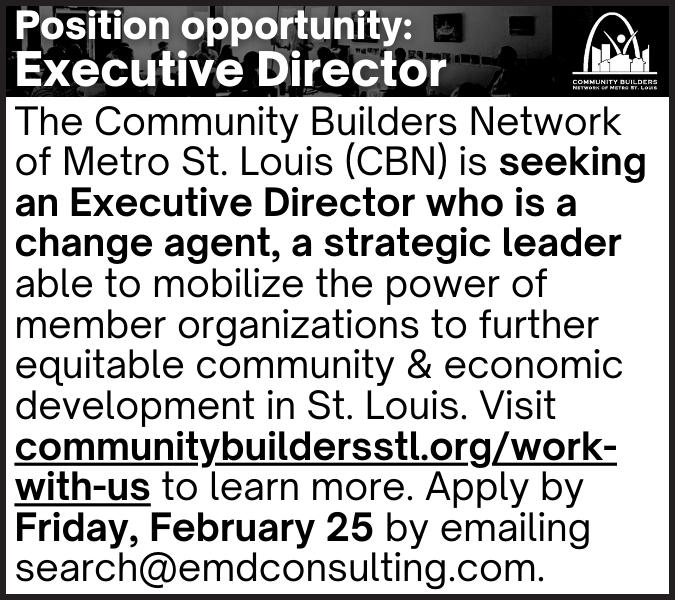
check. Steady work history preferred. Apply at 314 N. Jefferson at Olive. M - F, 9A to 5P. Must have two forms of I.D.
United Way of Greater St. Louis hiring Financial Empowerment Program Manager. For details, please check out https://helpingpeople.org/ careers

GIS PLANNER
East-West Gateway has an opening for a GIS Planner. Applications are due by 3/3/2022. More information can be found at https://www.ewgateway.org/ careers EOE
Senior account executive who is highly sought after by reinsurance intermediaries and relied upon by SN management to develop and provide solutions for insurance company reinsurance purchases.
To apply, please visit: https://www.safetynational.com/ careers-page/

Full Description and Apply for this and other open positions at https://www. employmentstl.org/ come-work-with-us.
Other positions include: Housing Specialist, Behavioral Health Career Specialist, Licensed Counselor. Also hiring for Patient Access and Environmental Services positions at major St. Louis area hospital.
Provide tier 1 technical software, hardware and network problem resolution to all SN computer users by performing question/ problem diagnosis and guiding users through step-by-step solutions.
To apply, please visit: https://www.safetynational.com/ careers-page/
The City of Richmond Heights is accepting applications for the position of Police Officer, $60,667 DOQ. To apply go to https://richmondheights. applicantpro.com/jobs/ . Applications will be accepted from January 18 to February 25, 2022.
HISTORICAL SOCIETY CURRENT JOB OPENINGS!
The Missouri Historical Society is actively hiring for the following positions:
• Data Clerk • K-12 Museum Educator (part-time)
• Membership Coordinator
Please visit www.mohistory.org under the “Current Openings” at the bottom of the home page for position details and to apply.
An Equal Opportunity/ Affirmative Action Employer Services Provided On A Non-Discriminatory Basis

Cor Jesu Academy, an all-girls’ Catholic college-preparatory school in Affton, is currently seeking applicants for the position of College Counselor beginning with the 2022-23 academic year. The College Counselor will be responsible for working closely with students and their families to educate and successfully guide them through the college search and application process. Offering information, resources and support for students/families in both group and one-on-one settings, Cor Jesu college counselors work collaboratively in seeking to assist each student in finding her “best fit” college choice. For more information, visit www.corjesu.org/careers#CCW or email Cynthia Wilhelm, Director of Cor Jesu’s Career, College and Wellness Center, at cwilhelm@corjesu.org
Lead overall HR employee engagement initiatives for University, including recognition, employee appreciation and other related programs. This role manages communication and engagement personnel to ensure an integrated approach to overall HR communications and programming, aligning with the university’s branding and strategy. All initiatives serve more than 20,000 employees.
JR62067 Senior Career Counselor - Law School
Responsible for creating and executing large scale initiatives to ensure career success for law students, as well as directing short and long term career strategies for a portfolio of students. Leads strategies and initiatives for highly ambitious students seeking jobs in a variety of areas. Collaborates closely with law school leadership to identify areas for program innovation and improvement. The successful candidate would meet the following required qualifications: Bachelor’s degree and five years’ experience in recruiting from the employer perspective or related experience.
Medical Assistant Apprenticeship- JR64741
How would you like to be a Medical Assistant, but don’t have time or the funds to go to school? We have a solution! Once you pass our entrance requirements and are hired through Washington University, you can complete our Apprenticeship program in just 12 weeks. Upon completing, and passing the credentialing exam, along with being a continued employee for 1 year, you will receive recognition as a Certified Medical Assistant. Class times will be during working hours (4 hours a week), and there will be no tuition costs to you.
JR61608 External Relations Associate - Office of the Vice Chancellor for Research
The External Relations Associate is responsible for the overseeing the implementation of the University’s External Professional Activities Policy and providing support the schools in implementing the policy. This person also serves as the lead preliminary reviewer of faculty disclosed external professional activities, and frequently engages with faculty, Deans, Department Chairs, and other delegated reviewers. This person develops educational content and resources to aid faculty and schools in meeting policy/procedural requirements the EPA policy. Required qualifications include advanced degree, MS or PhD in the life/biological science, medicine, biomedical engineering, engineering, or physical sciences; three years of work experience in a university or similar academic environment; demonstrated understanding of a research, academic, and regulatory environment, and ability to interpret regulations, policy and legal documents.
JR50607 Expedited Review Specialist - Human Research Protection Office Position is responsible for reviewing all proposed research for compliance with HIPAA and will also review expedited/exempt research including minimal risk continuing review for ethical and regulatory issues. Position will attend committee meetings to assist and educate committee members and make recommendations about privacy and risk issues. Will be responsible for letters to investigators whose proposals were reviewed as well as generating reports for meeting minutes. Required qualifications include bachelor’s degree; working knowledge of the federal regulations governing research, including the
Notice is hereby given that the Metropolitan St. Louis Sewer District Requests for Quotes, Bids and Proposals are posted online for public download. Please navigate to www.msdprojectclear.org
> Doing Business With Us
> View Non-Capital Bids (commodities and services) or >Visit Planroom (capital construction bids)
Metropolitan St. Louis Sewer District is an Equal Opportunity Employer.
Alberici Constructors and the Saint Louis Zoo seek bids from qualified construction firms to submit proposals for a project at the Saint Louis Zoo WildCare Park. The project consists of the interior fitout of a barn and includes the following categories of work: Fencing, Concrete, General Trades, Insulation, HVAC, Plumbing and Electric. To request bid documents, please send an E-mail to stlzoobids@alberici.com
Responses for St. Louis Community College on RFP B0004149 for Food Products, Utensils & small kitchen equipment will be received until 3:00 PM (CST) on March 4, 2022. Go to https://stlcc.bonfirehub.com for bid document and submission.
CITY OF ST. LOUIS BOARD OF PUBLIC SERVICE
REQUEST FOR PROPOSALS for DISPOSAL OF SOLID “CLEAN FILL” for CITY OF ST. LOUIS – WATER DIVISION. Proposals are due by 11:00 A.M. CT, TUESDAY, MARCH 1, 2022 at Board of Public Service, 1200 Market, Room 301 City Hall, St. Louis, MO 63103. RFP may be obtained from the Board of Public Service website www. stl-bps.org, under ON-LINE PLAN ROOM – Plan Room, or call City of St. Louis, Board of Public Service, at 314-589-6214.
The Saint Louis Zoo seeks bids from qualified firms to submit proposals for American Red Wolves Low Voltage RFP 2022. Bid documents are available as of 2/16/2022 on the Saint Louis Zoo website: stlzoo.org/vendor
ST. LOUIS COMMUNITY COLLEGE
Responses for St. Louis Community College on RFP B0004154 for preplacement physicals & Immunizations will be received until 3:00 PM (CST) on March 4, 2022. Go to https:// stlcc.bonfirehub.com for bid document and submission.
The St. Louis County Department of Transportation is requesting the services of a highly-qualified consulting engineering firm to perform professional engineering services for the On-Call Transportation Engineering Services project, St. Louis County Project No. AR/CR-1862.
Full details for this project, including submittal requirements and deadline, will be available on Monday, February 14, 2022, from the St. Louis County Web Site (www.stlouiscountymo.gov)
Bids for REBID: Replace and Install Generator, Missouri State Highway Patrol General Headquarters, Project No. R2109-01, will be received by FMDC, State of MO, UNTIL 1:30 PM, 3/3/2022 via MissouriBUYS. Bidders must be registered to bid. For specific project information, go to: http://oa.mo.gov/ facilities
Bids for Repair/ Replace Skylights at the Missouri State Capitol, Project No. O204001 will be received by FMDC, State of MO, UNTIL 1:30 PM, March 17, 2022. For specific project information and ordering plans, go to: http://oa.mo. gov/facilities
SCHOOL
Is soliciting “Request for Qualifications” for Professional Services. A single or multiple firms will be selected for Design and Consulting Services for multiple future projects:
The Request for Qualifications will be available on the District Website on February 24th 2022 @ www.webster.k12.mo.us front page and can be accessed under “Quick Find” – RFP/RFQ Responses to the RFQ will be received by the WGSD Construction Project Manager on March 31st, 2022 at 1:00 p.m. at the WG Service Center 3232 South Brentwood Blvd, Webster Groves, MO, 63119. The owner reserves the right to reject all proposals
Great Rivers Greenway is seeking request for qualifications for Public Art Project Management Services for the Brickline Greenway. Go to www.greatriversgreenway.org/ jobs-bids and submit by March 7, 2022.
BID NOTICE
Great Rivers Greenway is seeking RFQ’s for PreConstruction & Construction Management Services for the demolition of the North Riverfront Garage. Go to www.greatriversgreenway.org/ jobs-bids and submit by March 17, 2022.
FERGUSON-FLORISSANT SCHOOL DISTRICT DISTRICT WIDE GRASS CUTTING
Sealed bids for the above project are being requested from the Ferguson Florissant School District and will be received and publicly opened on Friday February 25, 2022 @ 1:00 pm CST at the Operation and Maintenance Dept. located at 8855 Dunn Rd. (REAR) Hazelwood, MO 63042. Pre Bid Meeting Monday February 21, 2022 @ 10:00 am at Operations and Maintenance Department @ 8855 Dunn Rd. Hazelwood MO 63042. Bid specs must be obtained at http://new.fergflor. k12.mo.us/facilities-rfq. Contact Matt Furfaro at mfurfaro@fergflor.org for further information/questions.
Great Rivers Greenway is seeking an Administrative Assistant to join our Development Team. Go to www.greatriversgreenway.org/ jobs-bids and apply.
Paric Corporation is seeking proposals for the following project: THE BRIDGE APARTMENTS
PARIC Corporation is soliciting bids for the CORE AND SHELL ONLY for THE BRIDGE APARTMENTS. This is a five story structure located on Delmar Ave scheduled for a 04/1/2021 tentative construction start. Access to documents is available from our Smartbid link, if you have not received a bid invitation send your company information to tlalexaner@paric.com
The Core and Shell consisting of Site & Civil Drawings, Structural Foundation Drawings and Structural Steel. The last day for questions is currently 2/26/22.
BIDS WILL BE DUE ON MARCH 03, 2022 Send all questions to Cory Paschen CPaschen@paric.com.
Goals for Construction Business Enterprise • 21% African American • 11% Women • 3% Other – 2% Hispanic, .5% Asian American, .5% Native American
Goals for Workforce (field) participation
25% Minority
7% Women
20% Apprentice
23% City of St Louis Resident
All bids should be delivered to Paric via e-mail (bids@ paric.com) or fax (636-561-9501).
PARIC CORPORATION IS AN EQUAL OPPORTUNITY EMPLOYER
Paric Corporation is seeking proposals for the following project: MU Teaching Hospital Renovations to 2W Dialysis Unit for The University of Missouri.
The scope of work includes but is not limited to Demo, Casework, Drywall Finishes, Fire Protection, Plumbing, HVAC and Electrical.
This project has a diversity participation goal of 10% MBE and 10% combined WBE, DBE, Veteran Owned Business and 3% SDVE.
Bids for this project are due on March 2, 2022, before 3:00 p.m. For any questions or would like to find out more detailed information on this opportunity, please contact John Davis at 314-704-6075 or jcdavis@paric.com.
All bids should be delivered to Paric via e-mail (bids@paric.com) or fax (636-561-9501).
PARIC CORPORATION IS AN EQUAL OPPORTUNITY EMPLOYER
RFP# 57822324
REQUEST FOR PROPOSAL
Harris-Stowe State University (HSSU) is requesting proposals for State and Local Government Relations Consulting Services. Proposals must be emailed no later than 10:00 a.m. on Monday, February 28, 2022 to bids@hssu.edu. Interested parties may obtain a copy of the RFP by contacting James Fogt, at email address fogtj@hssu.edu.
Responses to the RFP will be opened and the names read. Any proposal received after 10:00 a.m. February 28, 2022 will not be accepted. No award shall be made at the time the names are read.
CITY OF ST. LOUIS CITY COUNSELOR’S OFFICE REQUEST FOR QUALIFICATIONS— OUTSIDE LEGAL SERVICES
Date of Issuance: January 19, 2022
Proposal Due: February 18, 2022 at 5:00 pm CST
The City of St. Louis has issued a Request for Qualifications (RFQ) to compile an approved list of law firms to perform various legal services at the request of the City Counselor. This RFQ may be found at https://www.stlouis-mo.gov/ government/departments/counselor/index.cfm under “Procurement”, on the City’s procurement page (https://www.stlouis-mo.gov/government/ procurement/), and by emailing Nancy Walsh at walshn@stlouis-mo.gov. The deadline for questions regarding the RFQ is Friday, February 11, 2022. The deadline for submitting a sealed statement of qualifications is 5:00 pm on Friday, February 18, 2022. The statements of qualifications must be submitted in strict accordance with the instructions in the RFQ. The City shall not be bound based on any SOQ/proposal submitted. Minority and Women-Owned Business Enterprises are encouraged to apply


Paric Corporation is seeking proposals for the following project: UMTH 2E-34 Fluoroscopy.
The scope of work includes but is not limited to demo, steel drywall, finishes, radiation protection, Fire Protection, Plumbing, HVAC and Electrical.
This project has a diversity participation goal of 10% MBE and 10% combined WBE, DBE, Veteran Owned Business and 3% SDVE.
Bids for this project are due on February 28, at 3:00 p.m. For any questions or would like to find out more detailed information on this opportunity, please contact Evan Fox at 636-561-9844 or ecfox@paric.com.
All bids should be delivered to Paric via e-mail (bids@paric.com) or fax (636-561-9501).
PARIC CORPORATION IS AN EQUAL OPPORTUNITY EMPLOYER
Sealed bids for Bid 22-129 – Glock Handguns will be received by the City of St. Peters, Purchasing Department, City Hall, One St. Peters Centre Boulevard, P.O. Box 9, St. Peters, Missouri 63376 until 2:00 PM local time, Thursday, February 24, 2022 and then opened and read aloud.
Contract Documents will be available on Thursday, February 10, 2022, and may be obtained from the City of St. Peters, One St. Peters Centre Boulevard, St. Peters, MO 63376 or requested in writing to Bids@stpetersmo.net under the subject line “Bid 22-129 – Glock Handguns”.
All questions regarding this project shall be submitted to the City of St. Peters Purchasing Department in writing to Bids@stpetersmo.net under the subject line “Bid 22-129 – Glock Handguns” or by mail to City of St. Peters Purchasing Department, One St. Peters Centre Boulevard, P.O. Box 9, St. Peters, MO 63376 before noon local time, Thursday, February 17, 2022.The City reserves the right to waive any informality in bidding, and to accept the bid most advantageous to the City.
Reinhardt Construction LLC is Soliciting Bids from MBE/ WBE/DBE/Veteran/SDVE for the following:
CP210042 Children’s Hospital Facility Bid Package #9 Fitout
Contact: Mike Murray ; mikem@ reinhardtconstructionllc.com
Phone: 573-682-5505
Reinhardt Construction LLC is Soliciting Bids from MBE/ WBE/DBE/Veteran/SDVE for the following:
CP210702 UMTH Renovate 2W Dialysis Unit
Contact: Mike Murray ; mikem@ reinhardtconstructionllc.com
Phone: 573-682-5505
Reinhardt Construction LLC is Soliciting Bids from MBE/ WBE/DBE/Veteran/SDVE for the following:
CP221351 UMTH 2E-43
Fluoroscopy Replacement
Contact: Mike Murray ; mikem@ reinhardtconstructionllc.com
Phone: 573-682-5505
Downtown St. Louis Community Improvement District, Inc. is seeking bids for two (2) contract professional services: Off—Duty Police Patrol and Landscape & Maintenance.
A copy of the RFP can be found at https:// downtownstlcid.com/bids/
Aging Ahead invites proposals for: multipurpose senior centers, alternative congregate sites, kosher home-delivered meals, legal services, ombudsman, and long-term care information within the counties of St. Louis, St. Charles, Jefferson, and Franklin.
Awards to be made are governed by Titles III of OAA regulations and specifications of U.S. Dept. of HHS, MO Div. of Senior and Disability Services and Aging Ahead Agency reserves the right to award multiple contracts within each program.
The total cost for all IIIB programs mentioned above is $428,996; the total cost for all IIIE programs is $12,814; 85% ($353,291) of IIIB and 75% ($8,543) of IIIE is funded through Contract # ERS10521008 from MO Dept. of Health & Senior Services and U.S. Dept. of Health & Human Services, Administration on Community Living. The remaining 15% ($75,705) IIIB and 25% ($4,271) IIIE is funded through non-Federal resources as a match requirement.
Contract period is July 1, 2022 to June 30, 2023. Contracts may be extended up to three fiscal years. Specifications and proposal packets may be obtained at Aging Ahead office beginning noon, February 21, 2022, 14535 Manchester Road, Manchester, Missouri, 63011, 636-207-0847 or online at https://www.agingahead.org/who-we-are/ financials/. Closing date for receipt of proposals is April 1, 2022 at 4:00pm. Agency reserves right to accept or reject any or all proposals.

Sealed bids for the Dielman Road ARS Infrastructure project, St. Louis County Project No. AR-1554, will be received electronically thru the County’s Vendor Self Service portal at https://stlouiscountymovendors. munisselfservice.com/Vendors/ default.aspx, until 2:00 PM on March 9, 2022
Plans and specifications will be available on February 7, 2022 from the St. Louis County Web Site (www.stlouiscountymo.gov) or by contacting Cross Rhodes Print & Technologies, 2731 South Jefferson Avenue, St. Louis, Missouri 63118 (314) 678-0087.
DIRECTOR OF PROCUREMENT AND ADMINISTRATIVE SERVICES
St. Louis County Port Authority will accept bids from qualified firms for demolition and site restoration services at the Former St. Louis County Family Courts Building (the “Project”) located at 501 S. Brentwood. Interested firms or joint ventures should submit one (1) original and two (2) copies of their fully completed and signed Bid Proposal, along with all required documentation, in a sealed envelope marked “CONFIDENTIAL: Proposal for Former Family Courts Demolition and Site Restoration Project” to the offices of Sandberg, Phoenix & von Gontard, P.C., 120 S. Central Ave., Suite 1600, Clayton, MO 63105, Attn: Andrew C. Ruben, by March 3, 2022 at 3:00 p.m. (CST) at which time the bids will be opened and read aloud. There will be a mandatory pre-bid meeting and walk-thru on Wednesday, February 16, 2022 at 9:00 a.m., at the Project site. The Project Request for Proposals may be obtained from the Port Authority’s web site at https://stlpartnership.com/ rfp-rfq/. Copies of all Contract Documents may be viewed or purchased at County Blue Reprographics, 811 Hanley Industrial Ct., St. Louis, MO 63144 (http://www. countyblue.com) or at Cross Rhodes Print & Technologies, 2731 S. Jefferson, St. Louis, MO 63118. All questions shall be submitted via email to Elizabeth Noonan at bnoonan@ced-solutions.com, no later than February 22, 2022 at 5:00 p.m. The Port Authority actively encourages submission of proposals from disadvantaged business enterprises and companies owned by minorities, women, immigrants and veterans. The Port Authority does not discriminate on the basis of race, color, religion, creed, sex, sexual orientation, gender identity, age, ancestry, national origin, disability or veteran status in consideration of this award. Equal Opportunity Employer.
Service:
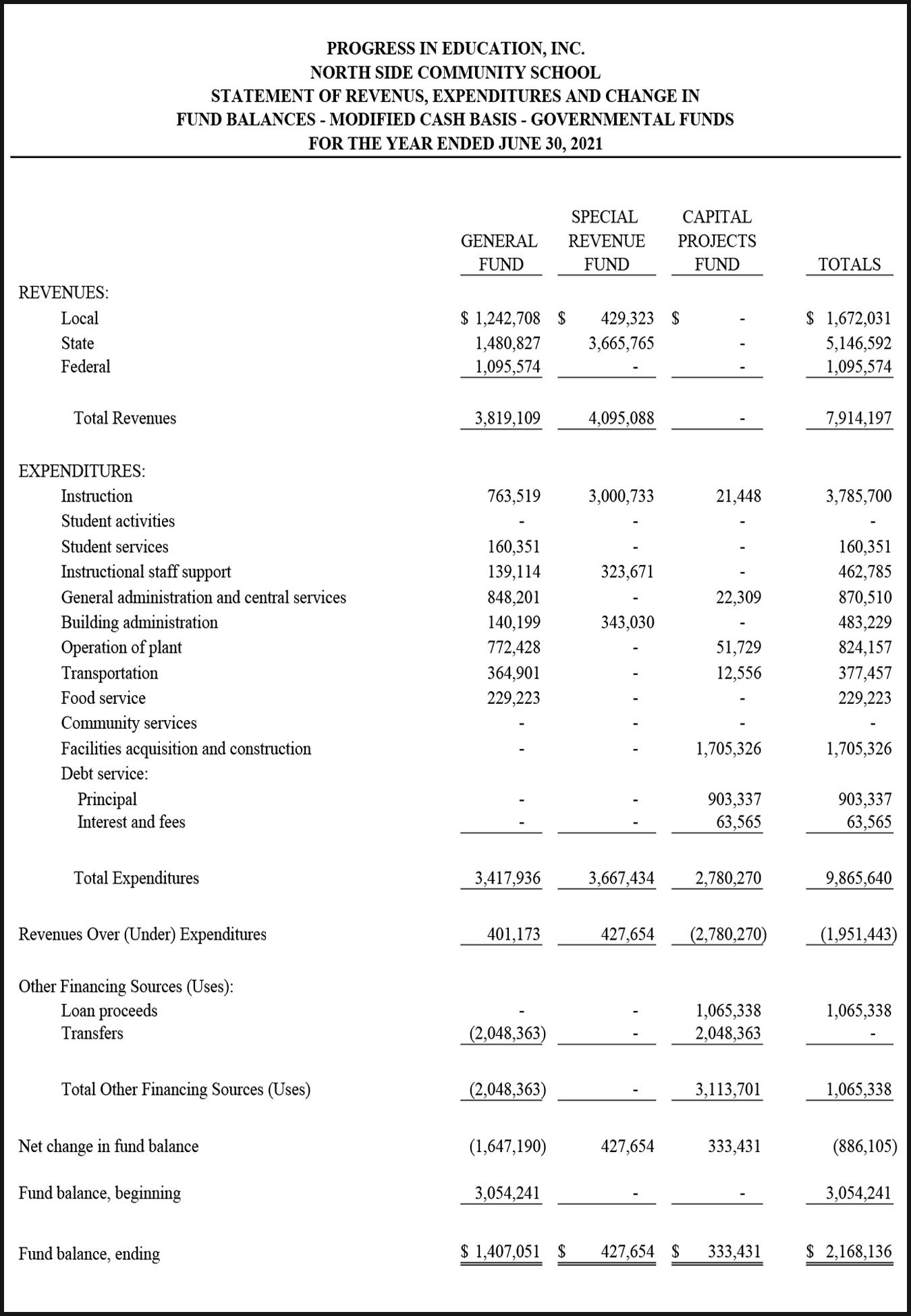

Advertised herein is subject to the Federal Fair Housing Act, which makes it illegal to advertise any preference, imitation, or discrimination because of race, color, religion, sex, handicap, familial\status, or national origin, or intention to make any such preference, limitation, or discrimination.
“We will not knowingly accept any advertising for real estate which is in violation of the law. All persons are hereby informed that all dwellings advertised are available on an equal opportunity basis.”
Call Angelita Houston at 314-289-5430 or email ahouston@stlamerican.com to place your ads today!
from the screen with nearly 3-D precision.
Over the course of eight episodes that last 2-3 minutes each, children can learn and sing along to stories that will give them insight on acceptance, equity, self-love, combating racism and community building.
“Racism in the world affects me and you, and it’s time to end it now. Come together, we’ll show you how,” Black Thought raps in the opening episode. “I feel real good showing love to the people in my neighborhood. If we love one another everybody can win, just talk to me if you want to be my friend.”
A group of Black girls sing about the love of their hair in “Super Bonnet” as they introduce their bedtime routine to a white friend. And several in the group of friends that recur throughout the series celebrate each other’s differences and experience with their place in the world as Black and multicultural children.
But not everything But “Rise Up, Sing Out” isn’t all sunshine and rainbows.
“Speak Up” addresses
microaggressions that young people might not yet have the language to articulate.
“We know just how you feel – and it wasn’t okay, the way she touched your hair and didn’t give you a say,” the group sings. “ Speak up, if you’ve got something to say. Or it’s okay to walk away. Speak up. Let ‘em know just how it is. We can change the narrative.”
“Marvelous Me” is among the catchiest episodes of the series. Gabriel – who is Black and Dominican – and So-Hyeon – who is Black and Korean –share the positives of growing up multicultural.
“I take my shoes off at the door like my dad and we put on K-Pop shows. My mom and I read scary books and help our beautiful brown skin glow,” SoHyeon sings. “We’re all special in our own way that’s important to remember in all that you do. So love all the parts of you and I’ll love all the parts of myself too.”
The children grapple with the harsh realities of implicit bias and the trauma that comes with bearing witness to racial violence. Before bedtime, Gabriel confesses to his abuela that he is terrified after seeing the news where he saw someone suffer simply because they had the same skin color as he has. “This
world may seem unfair at times, but whenever you’re afraid, just keep In mind, that I’ll be here,” she responds.
In the “Create A World” episode, the young people address not feeling represented during an outing to an art museum.
“I’m going to use my art to show how beautiful our neighborhood is,” the Kingston character sings in response to the people he doesn’t see displayed on the walls during his field trip.
His response falls in line with the underlying message of the “Let Love Overrule” episode.
“One thing to remember this is not just me and you, making change is up to all of us we all must help out too,” the group raps.
“We feel this is the perfect moment and the perfect time for us to put this project out into the world ,” Questlove and Black Thought said. “To plant a seed about kindness that will hopefully have a lasting impact for generations to come.”
“Rise Up, Sing Out” can be seen on the Disney+ streaming service. For more information, visit https://www.disneyplus. com/series/rise-up-sing-

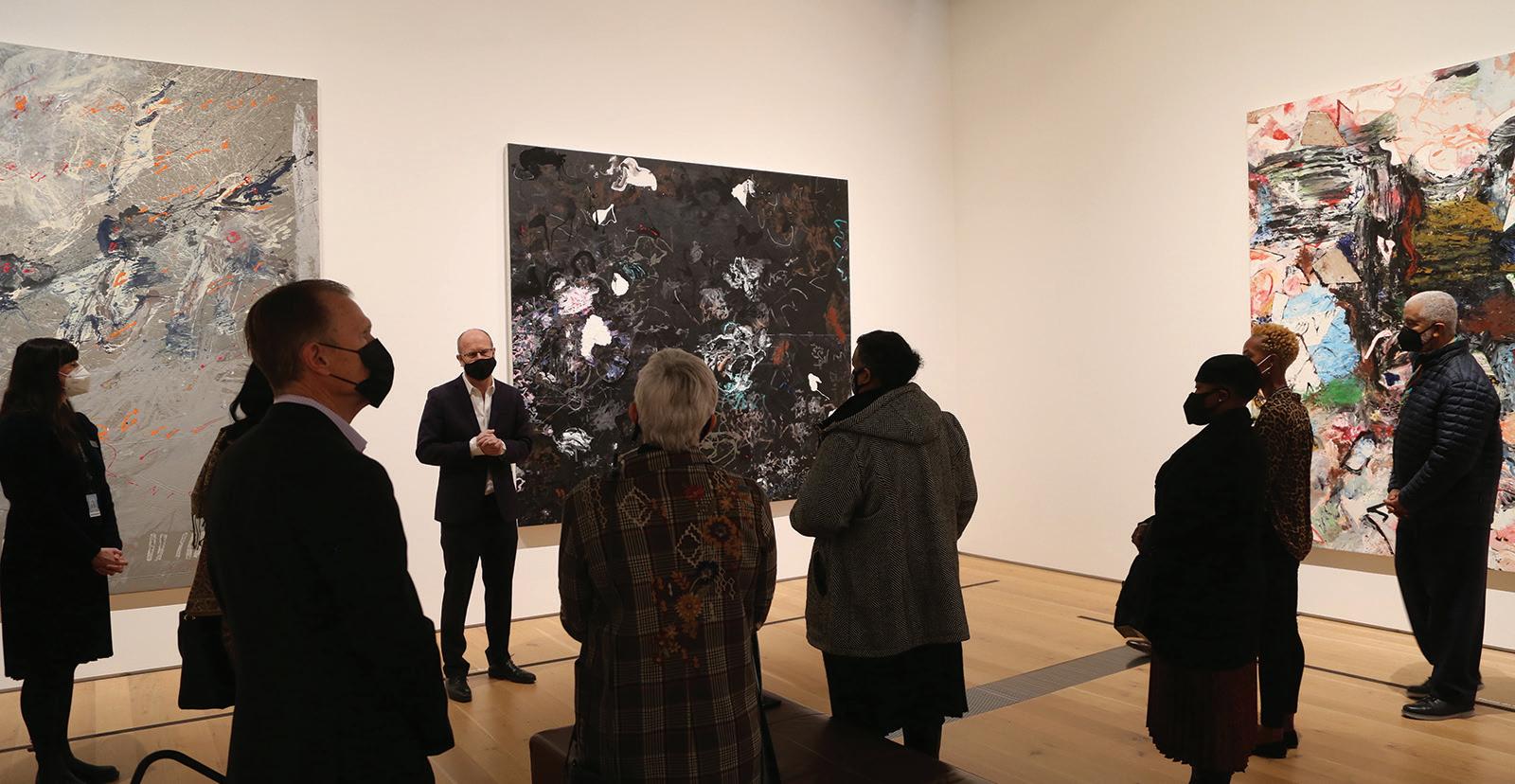
There is a vibration with his paintings that you almost feel in thinking about music and arts and all of these mediums crossing. There is a multi-disciplinary artistic practice and a breaking down of boundaries.”
Jackson’s intention is for the viewer to be able to trust the experience as their eyes take in the work – and give themselves space to truly immerse themselves in the art.
“We wanted to create an atmosphere where that could be possible,” Klemm said. “But where we could also showcase his aesthetic progression and showcase the different moments in his career – and the different ways he really utilized form and style to create different moments for the visitor.”
Within the exhibition, viewers rotated from corner to corner, making new discoveries of figures and shapes not seen at first glance or from a different vantage point.
“The more you look, the more you see,” Kelly said as he pointed out elements within “Painting (12.15.04)” that might have been missed by doing Jackson’s work the disservice of a casual viewing. “The more you look at his paintings, the more the figures start to emerge.”
It was something that Saint Louis Art Museum Romare Bearden fellow Shaka Myrick noticed while studying “Alchemy.”
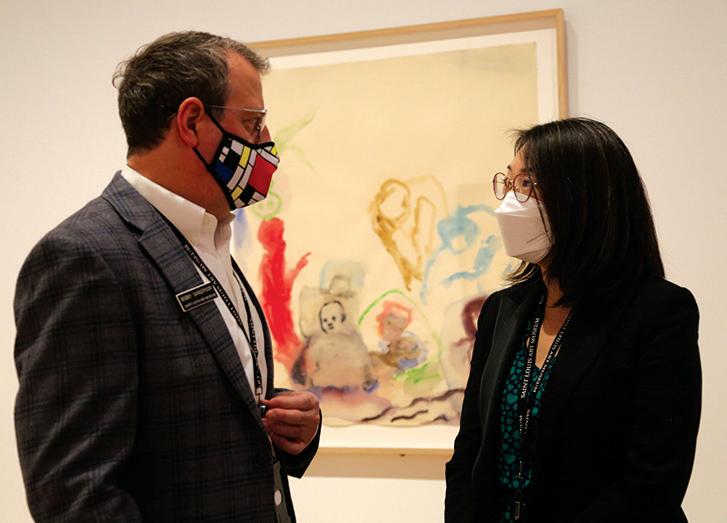
Some projects involve: talking about how
filling out online surveys



“Standing here will be different than standing over there,” Myrick said. “You will find more gestured strokes.”
Klemm was thrilled to confess how much the docents and the visitors loved sitting with it and waiting for those figures to pop and the joy of having different moments surprisingly emerge right before their eyes.
“One of the things that is so brilliant about Oliver is that you never lose by just sitting with a painting,” Klemm said.
“I think he wants everyone to read these different things through their own lens. And he doesn’t want his own reasoning for things to muddy that experiential water for everybody.”
“Oliver Lee Jackson,” will be on view in Gallery 249 and Gallery 257 of the Saint Louis Art Museum through Feb. 20, 2022. For hours and additional information, visit www.slam. org.
